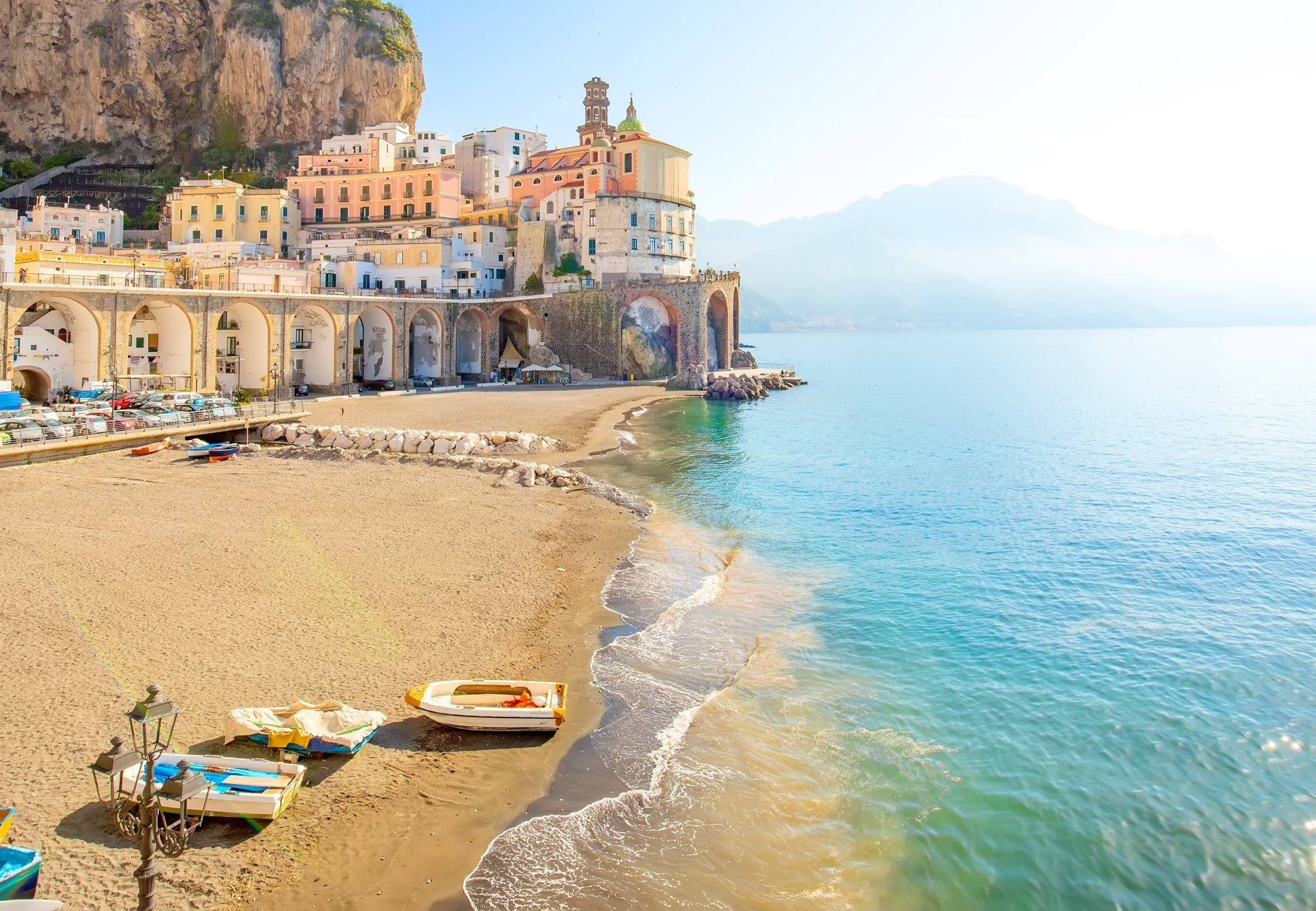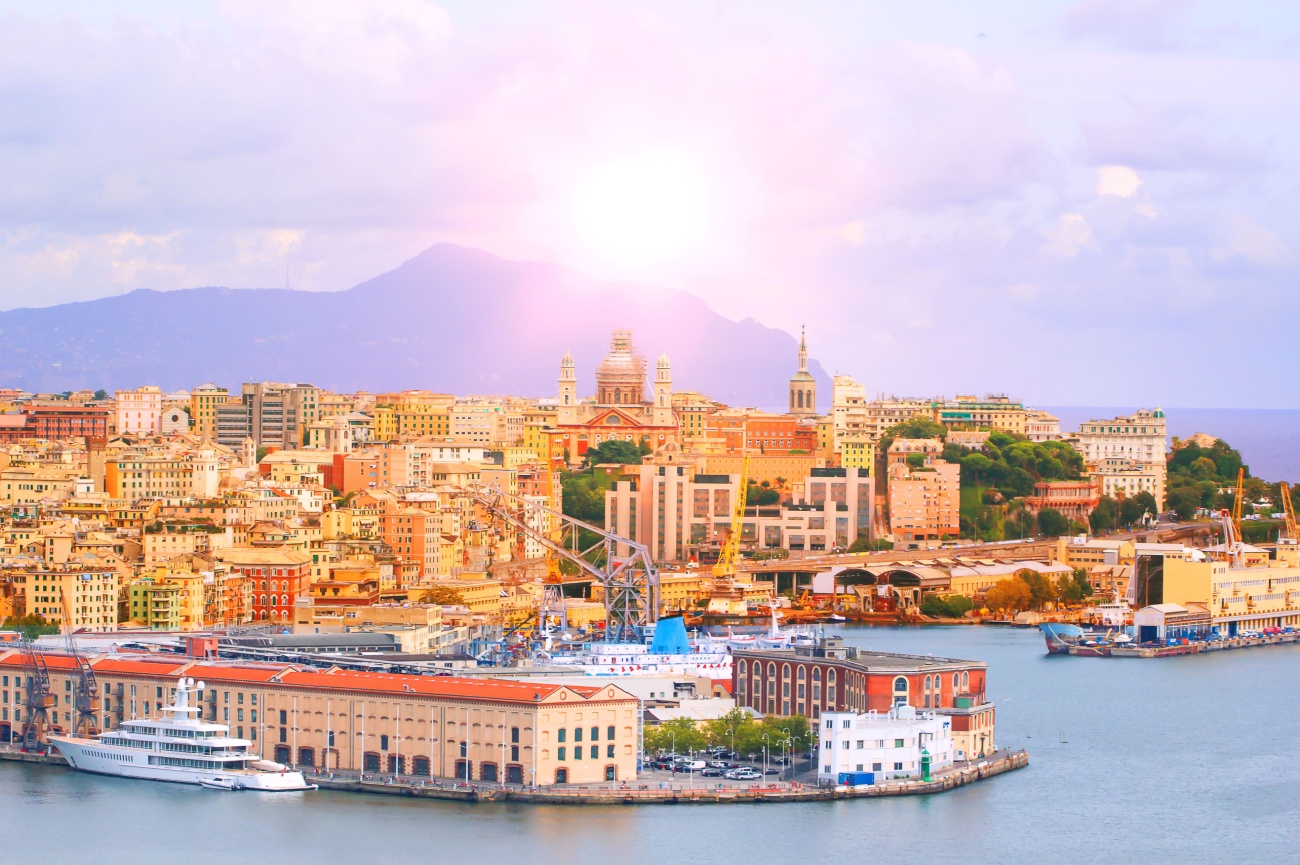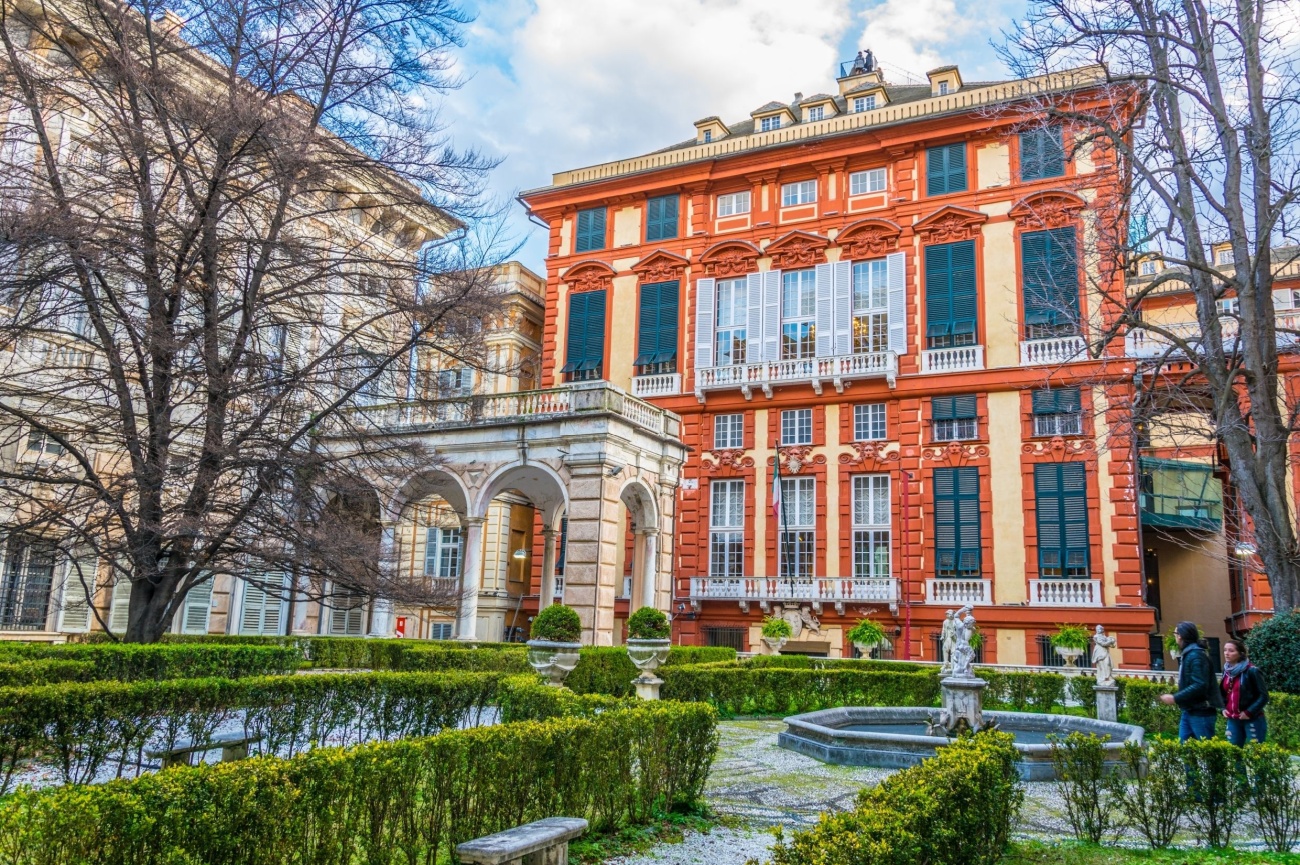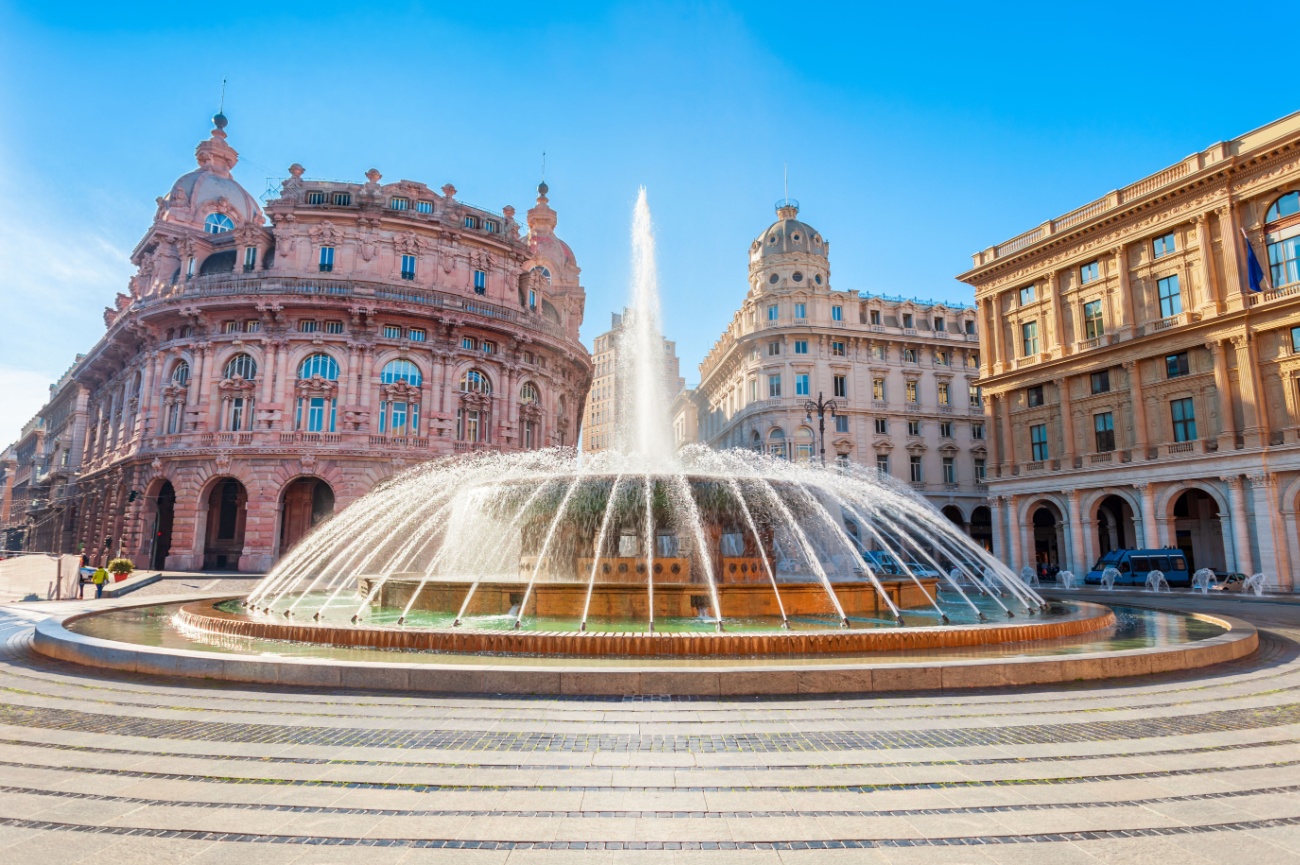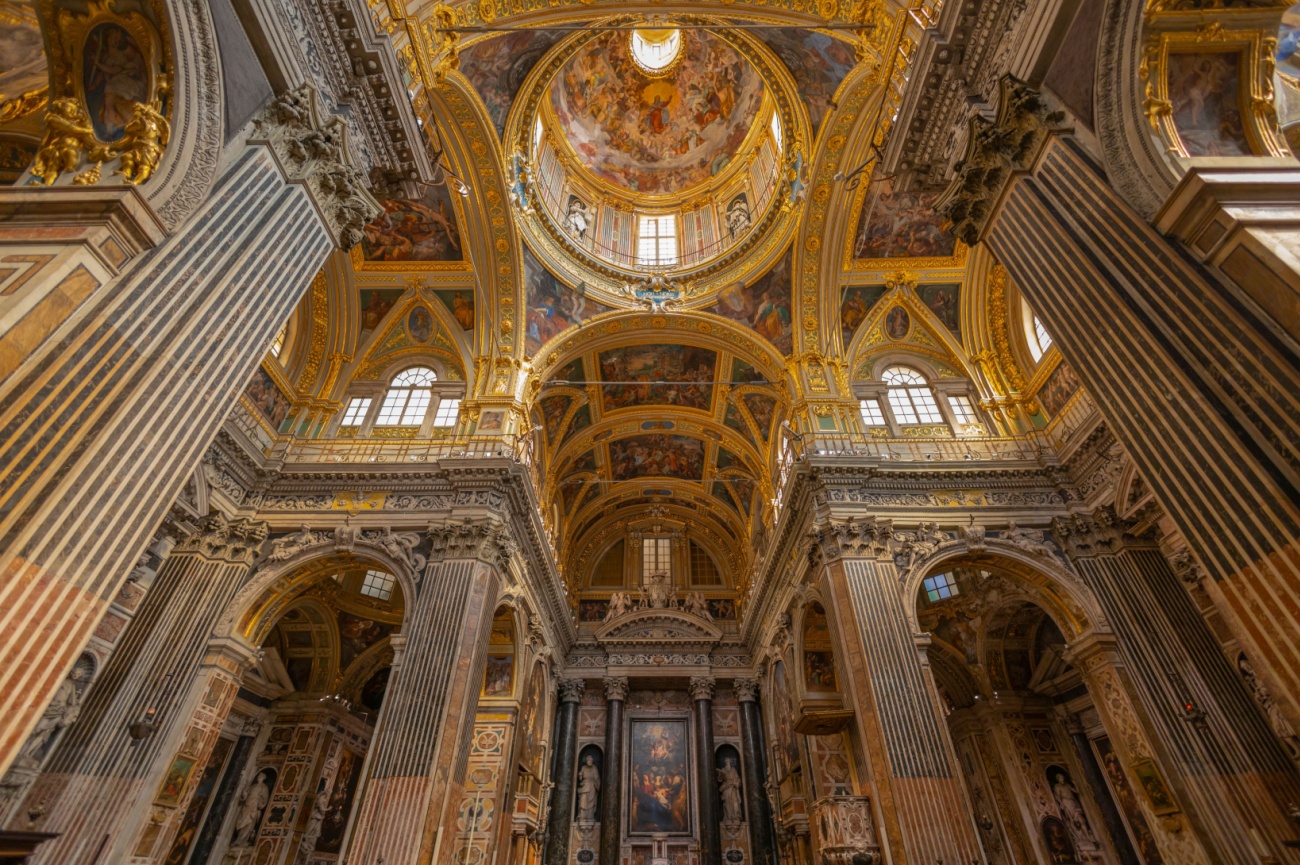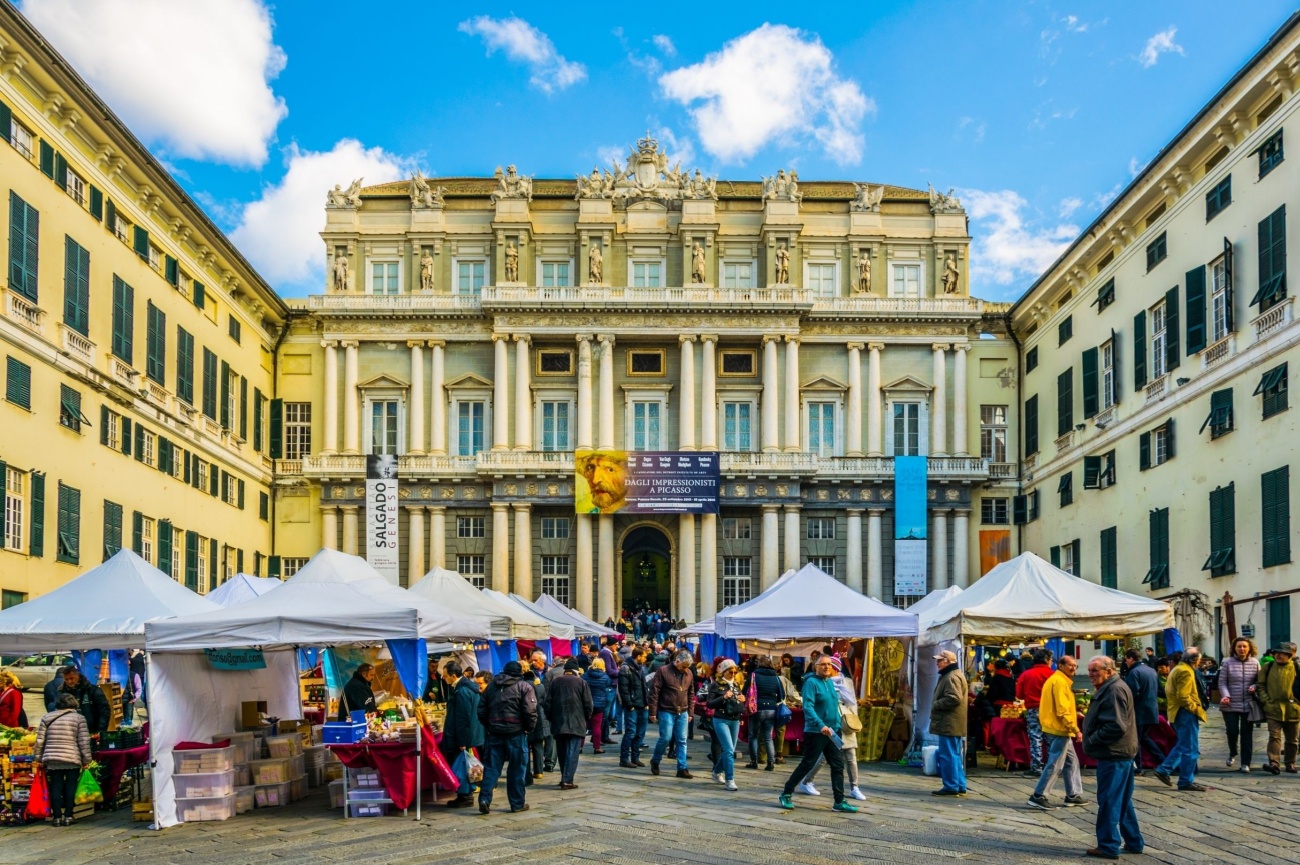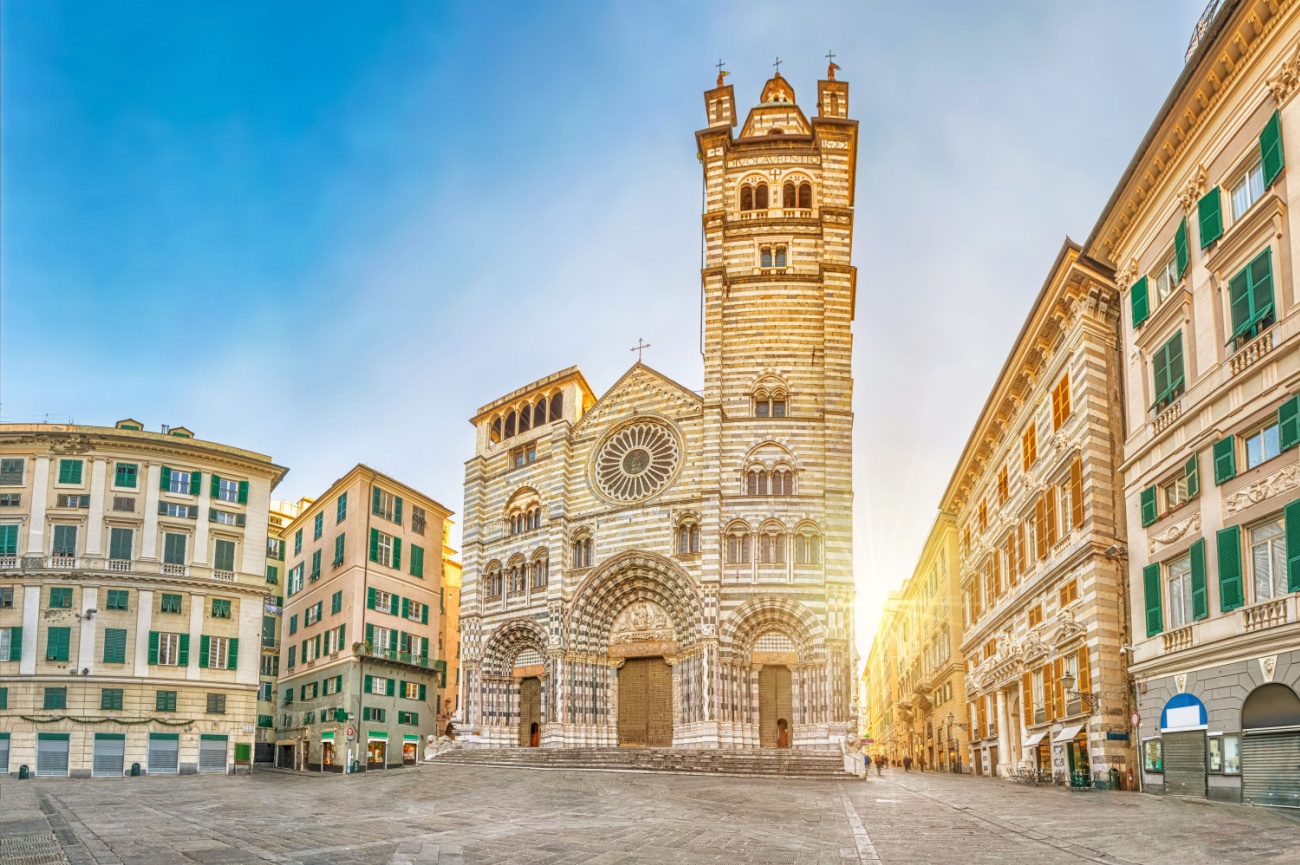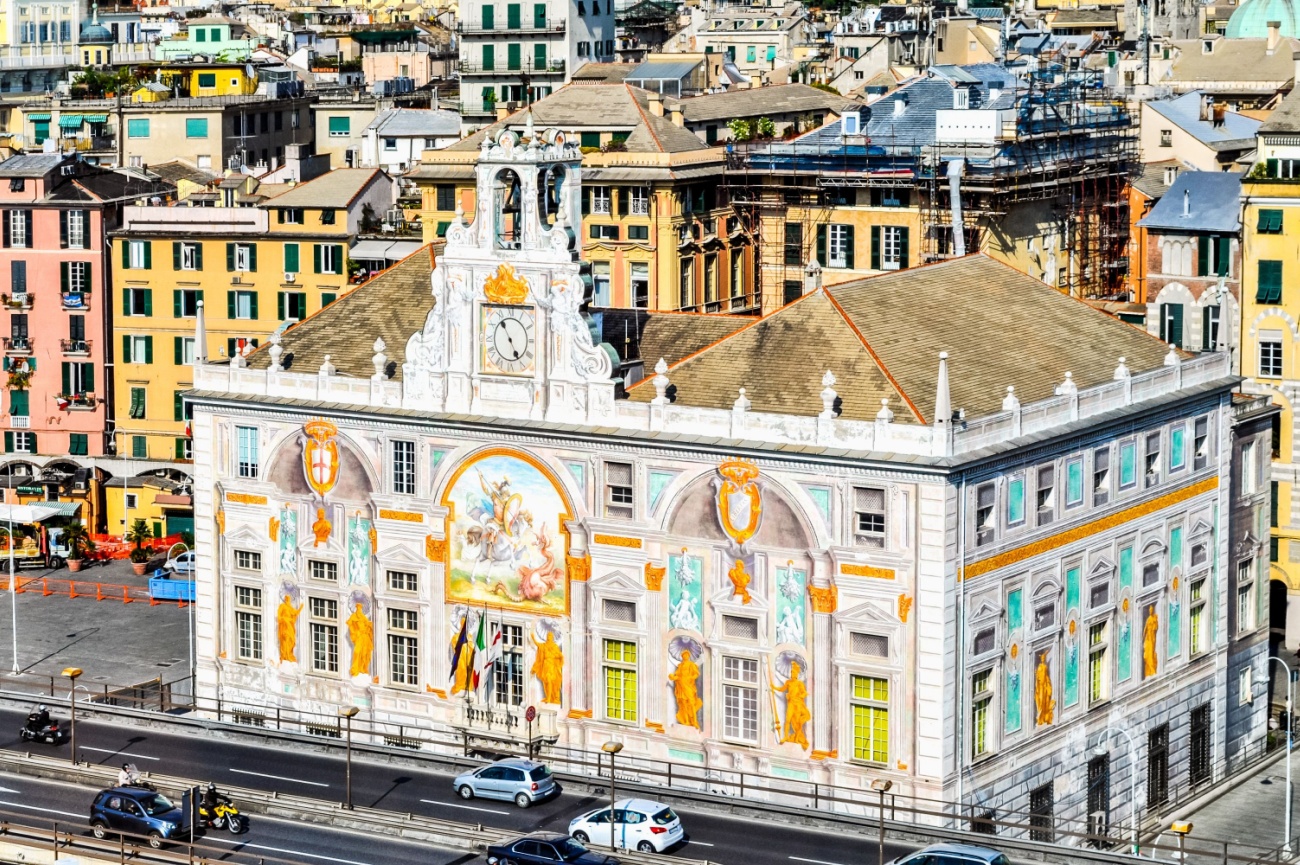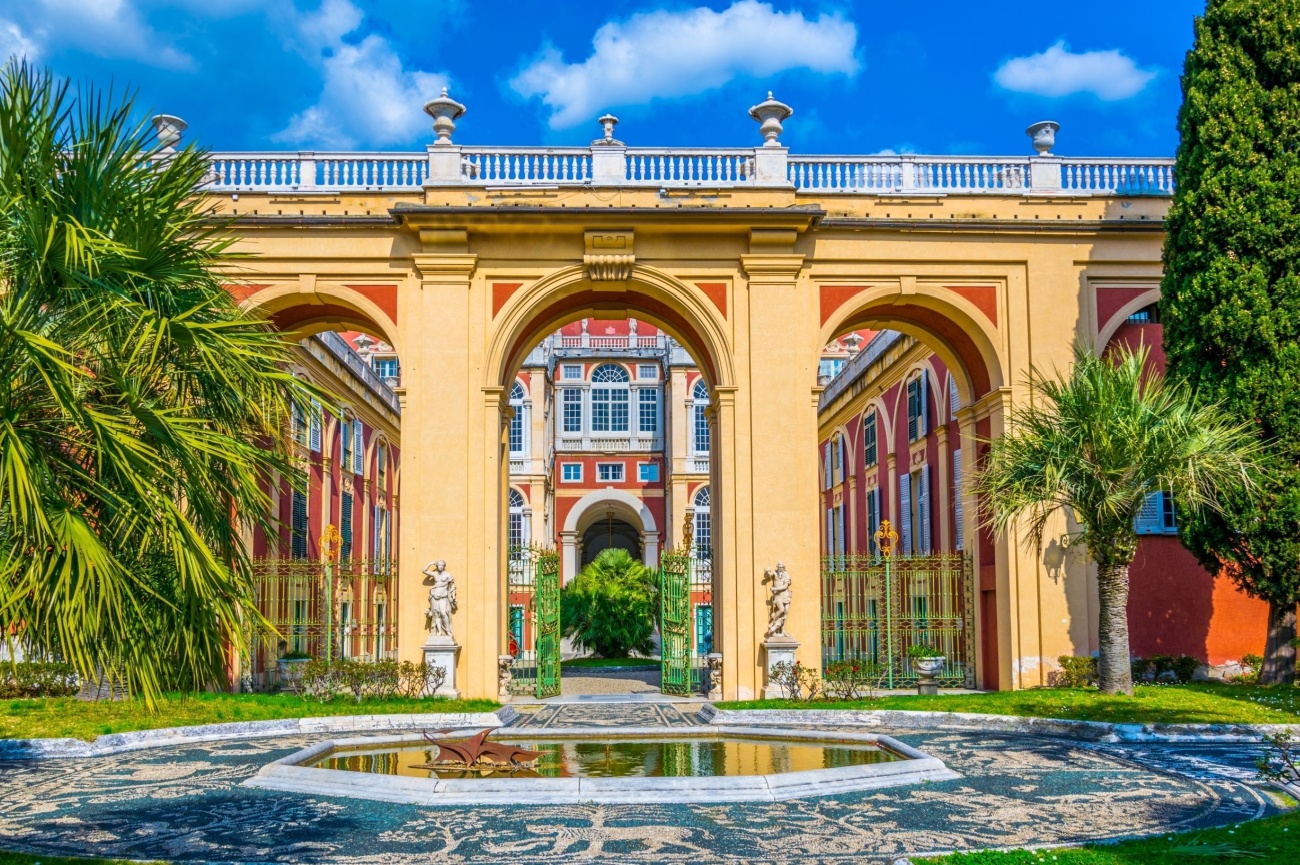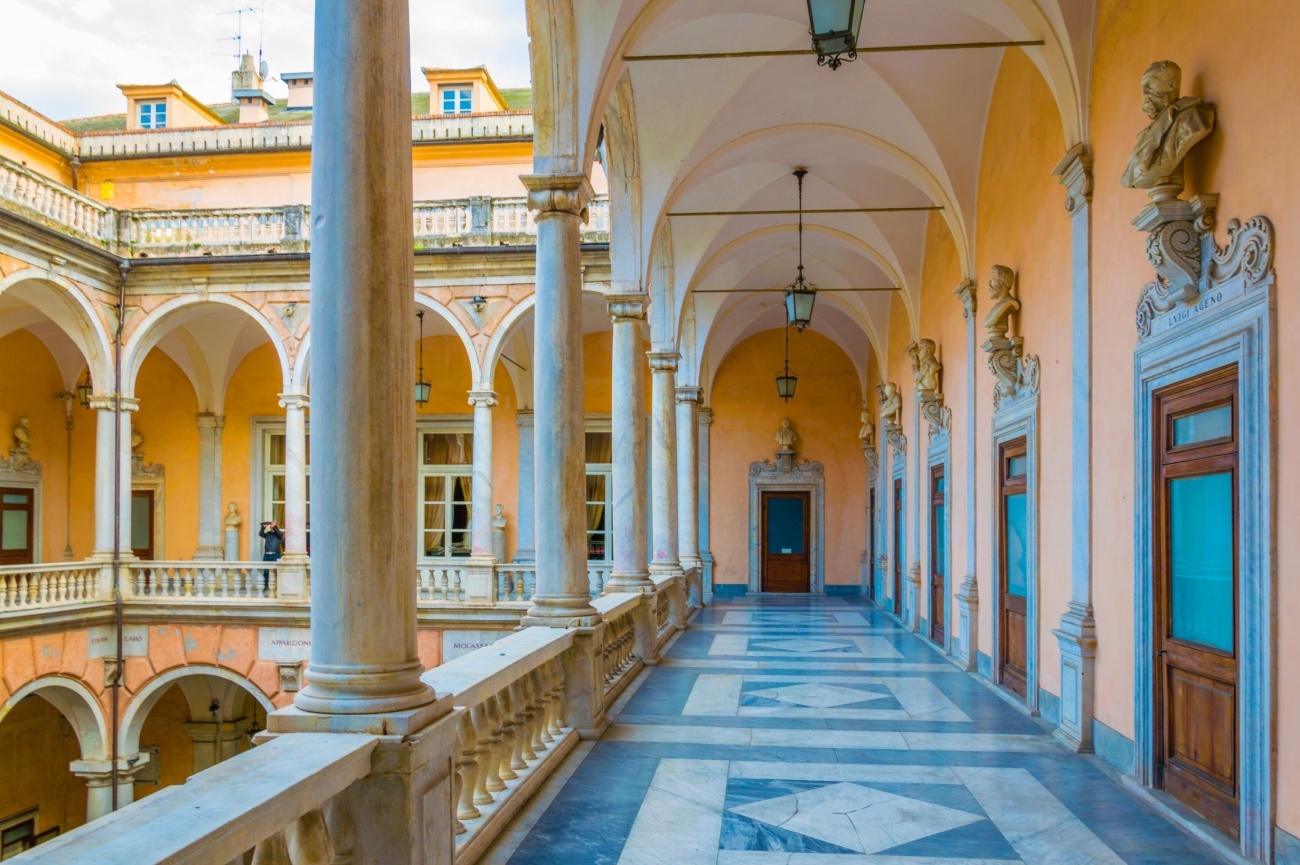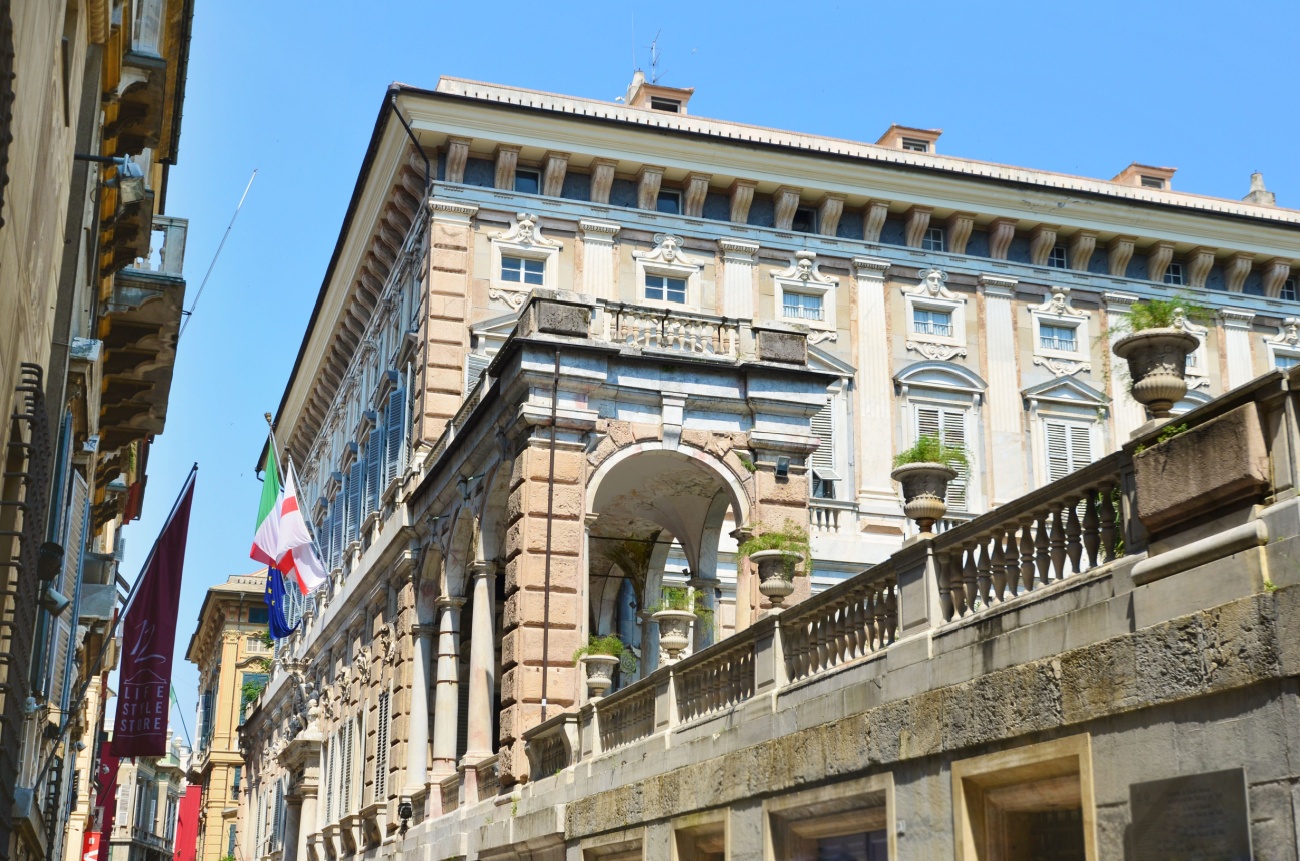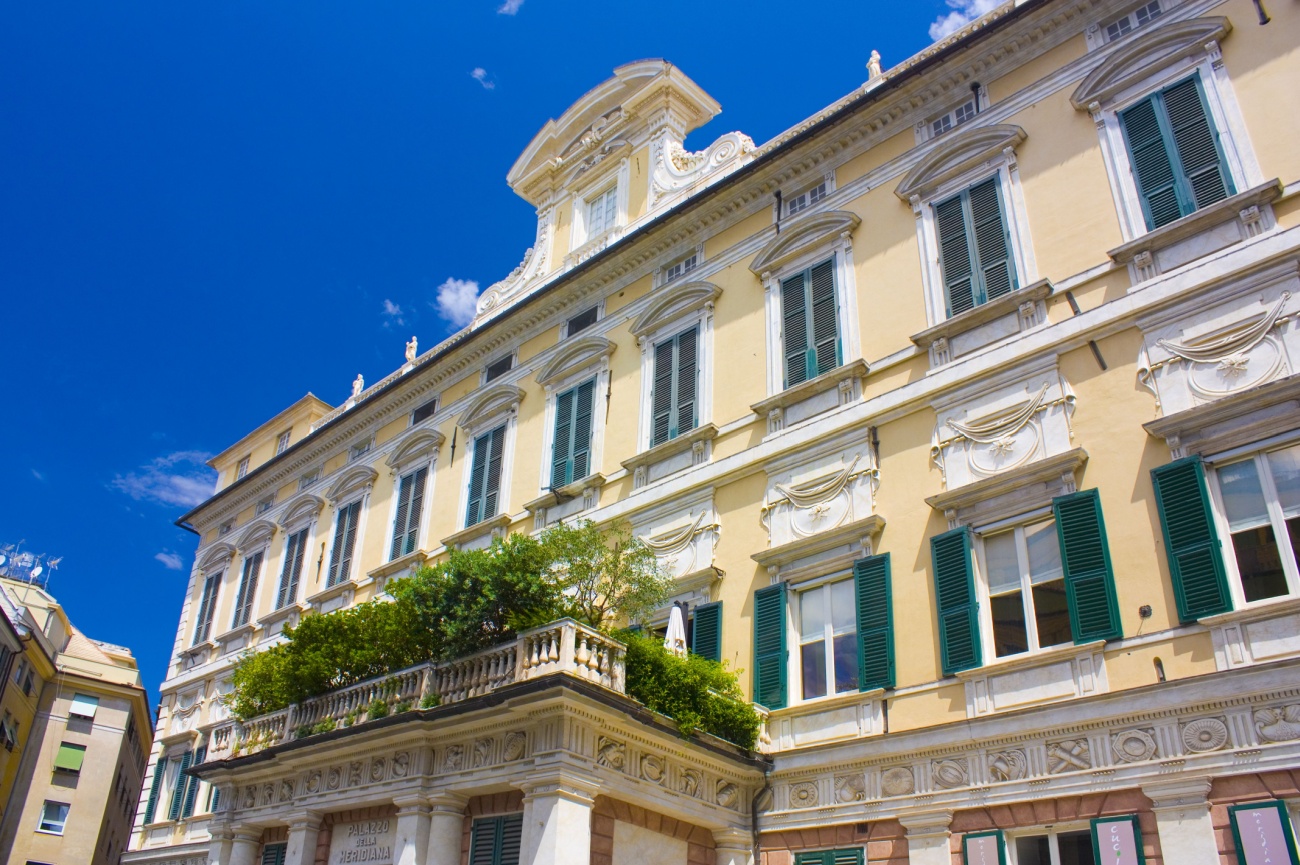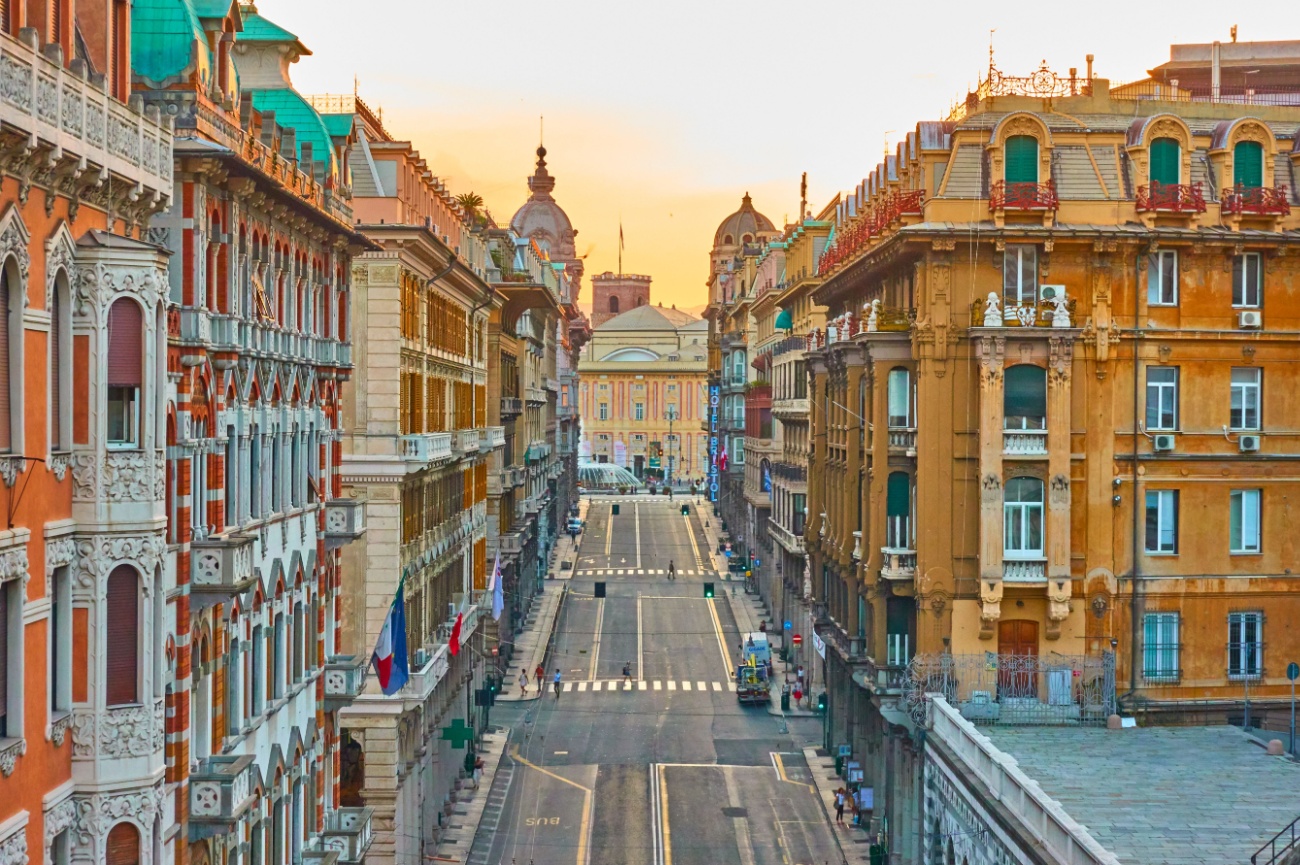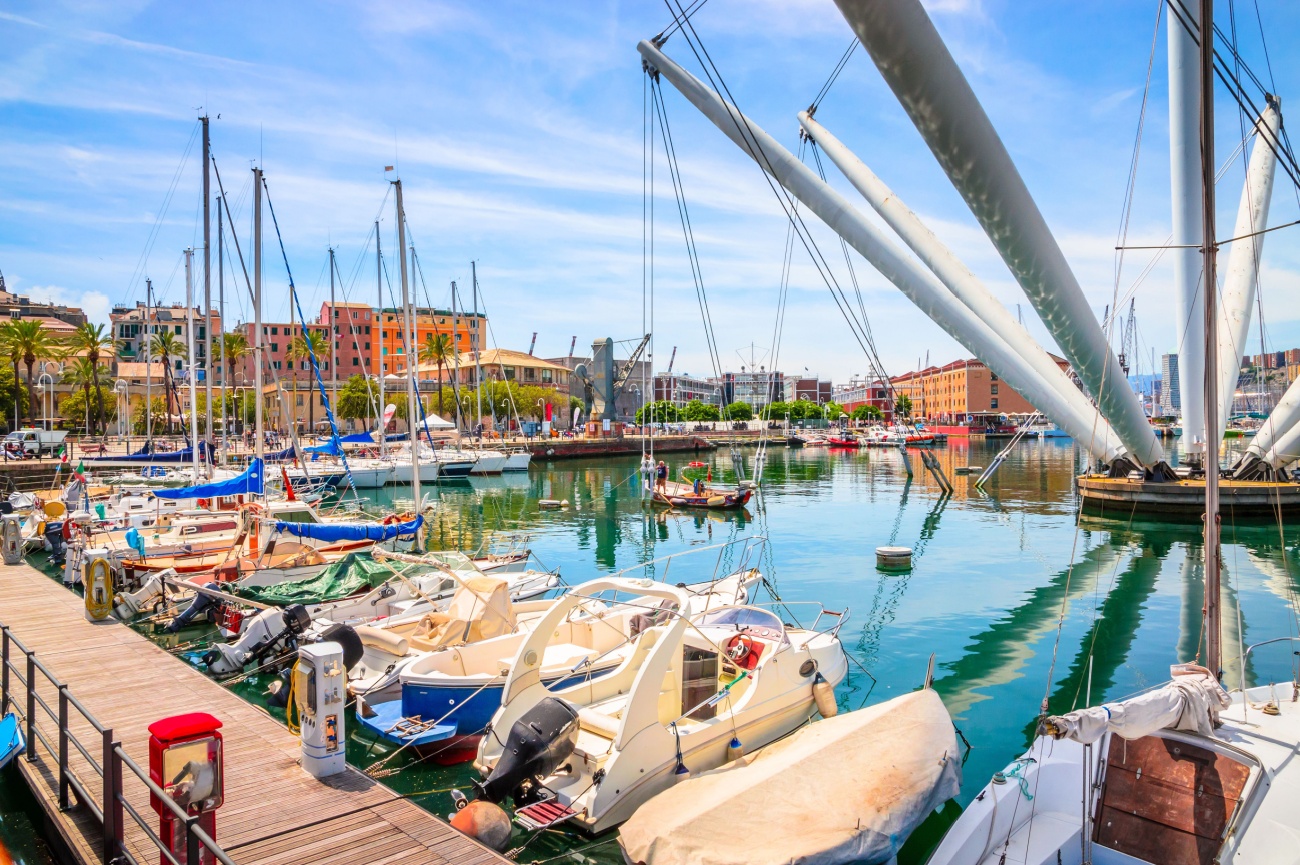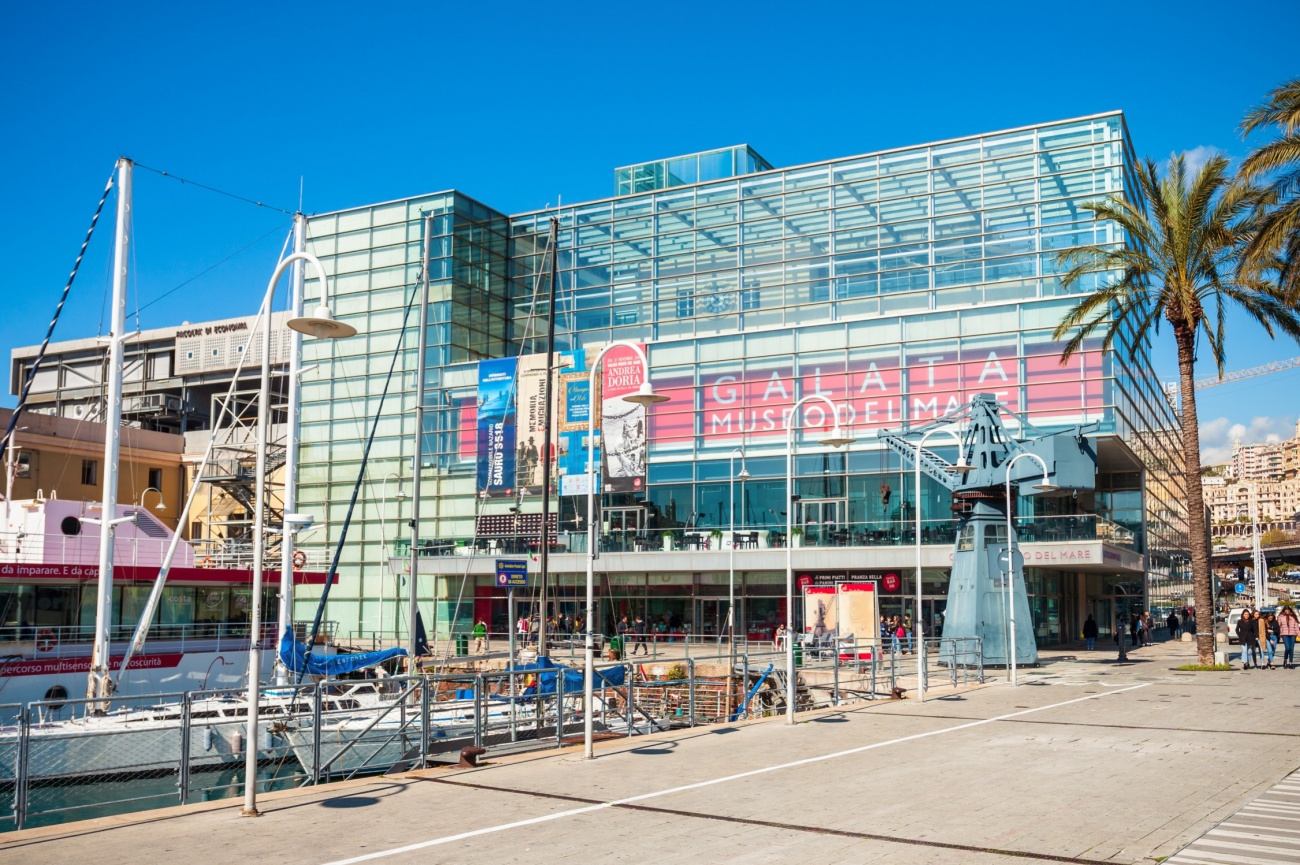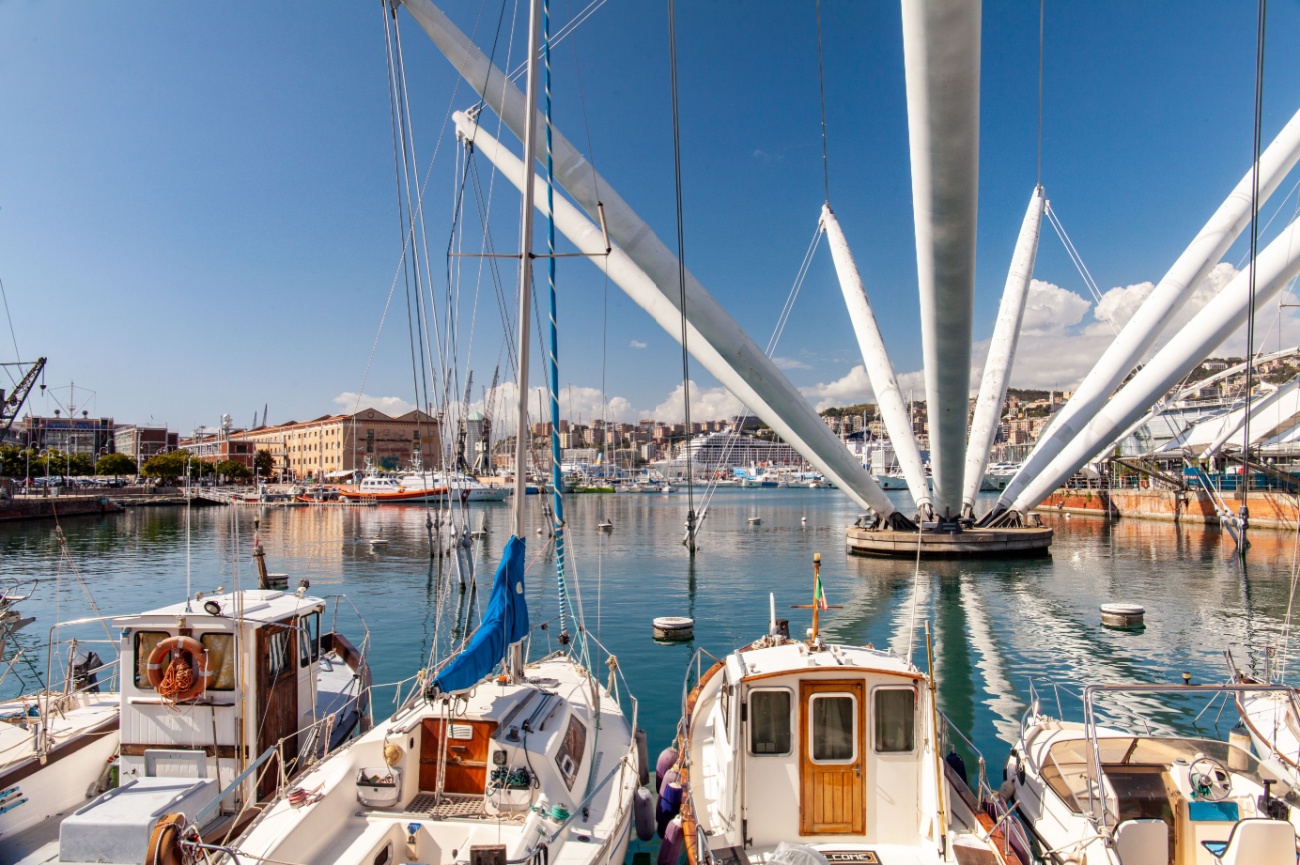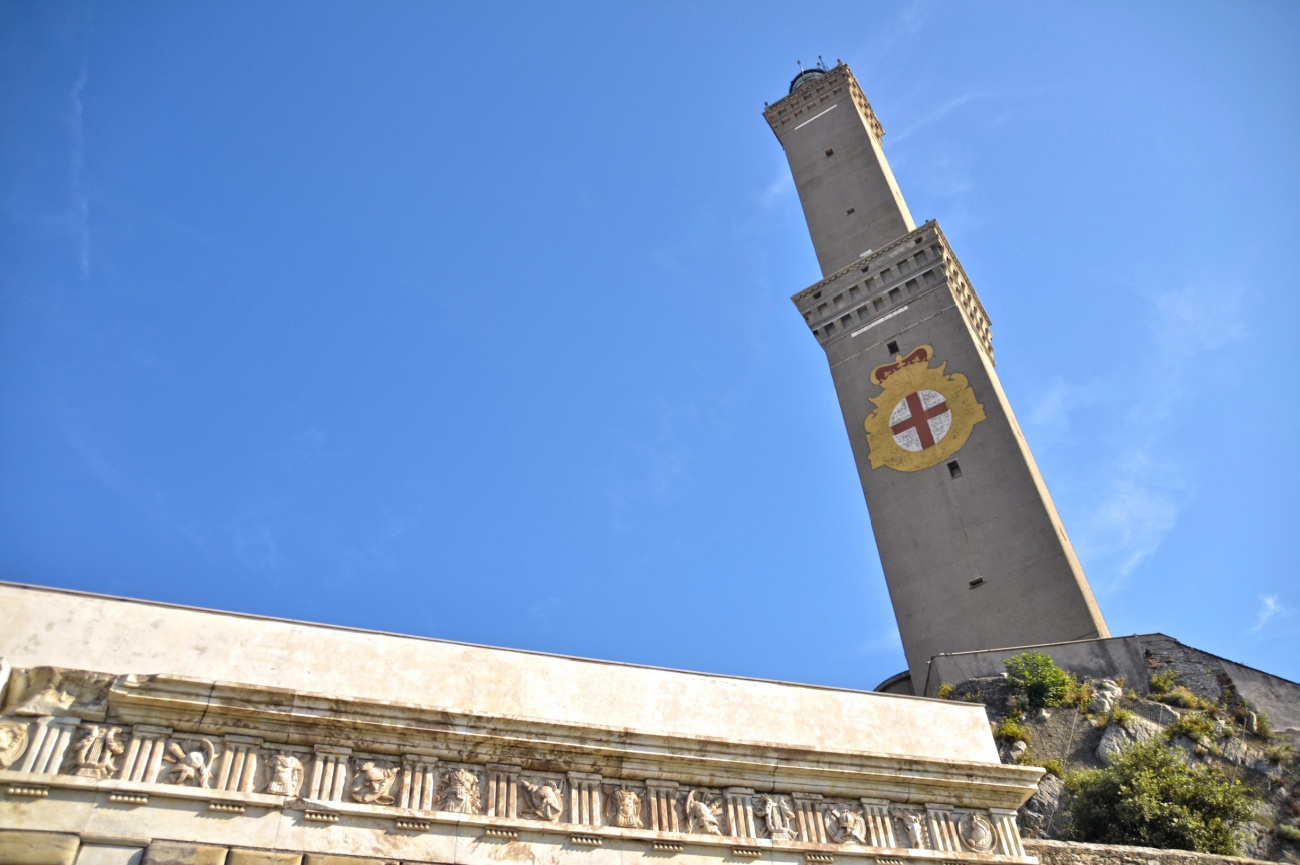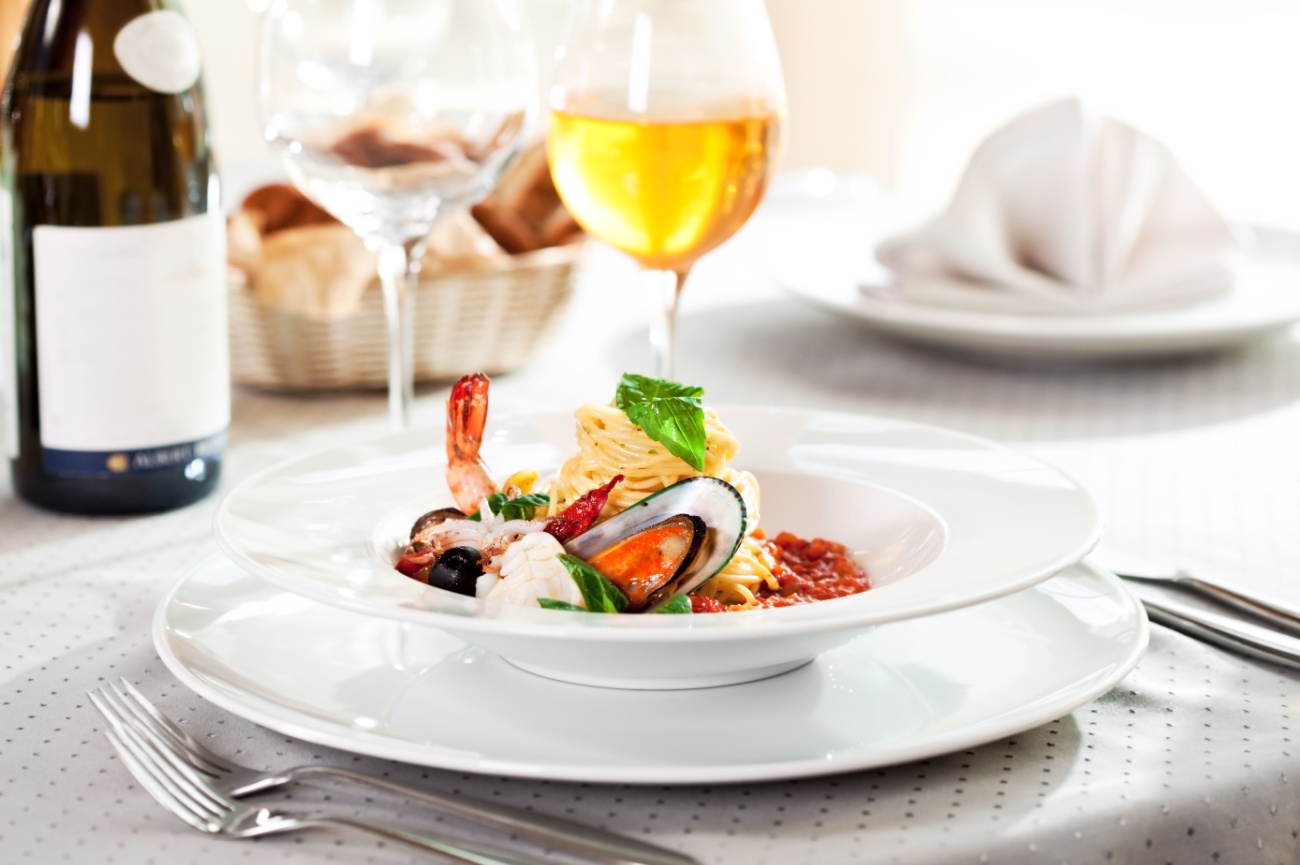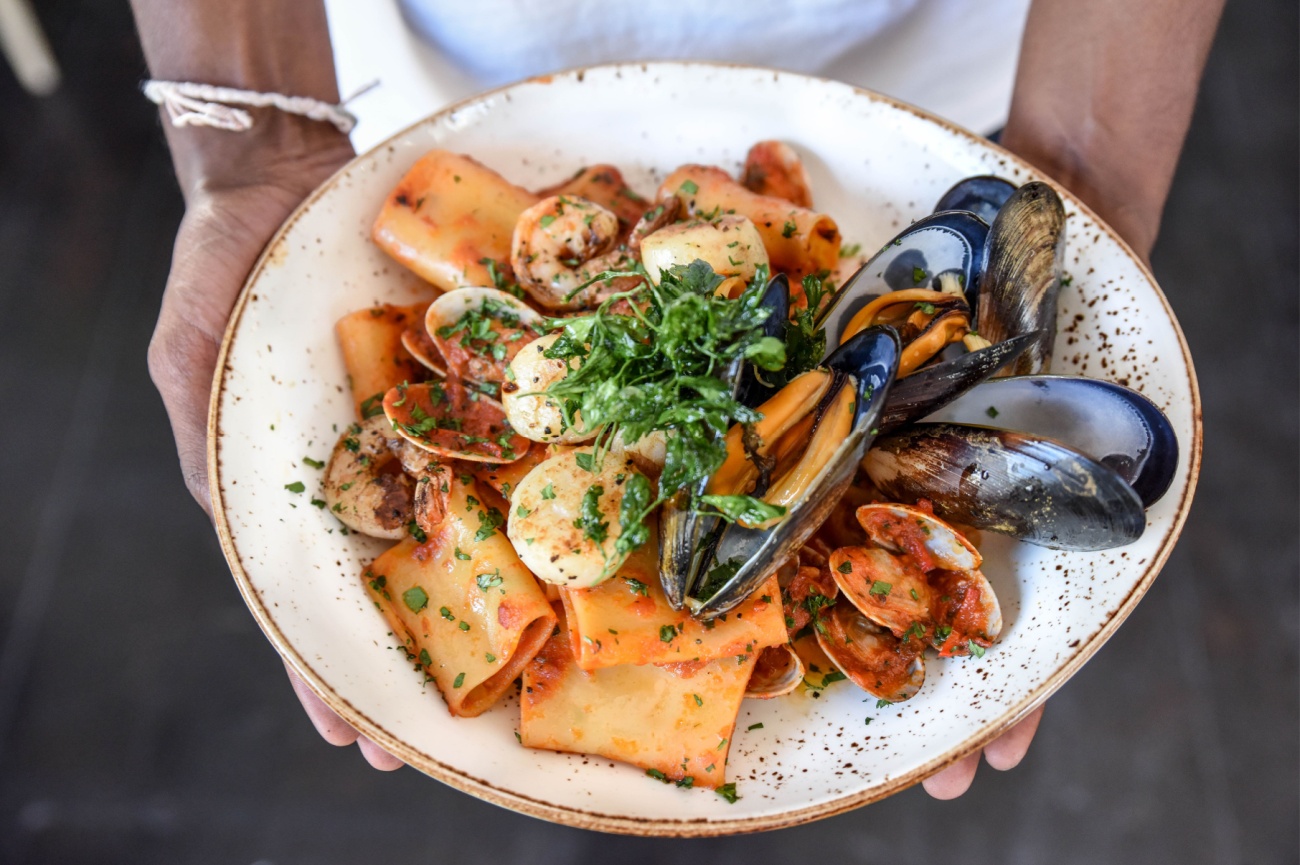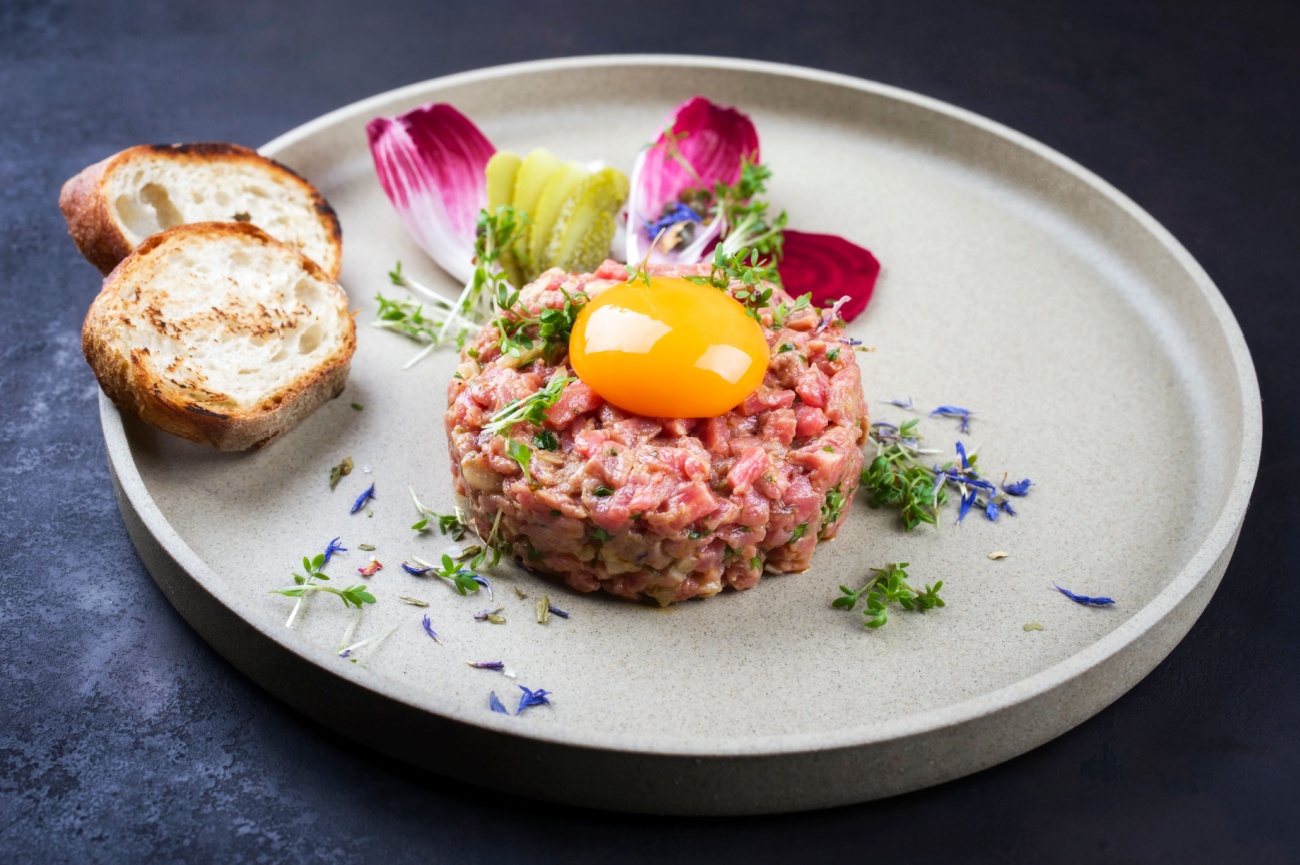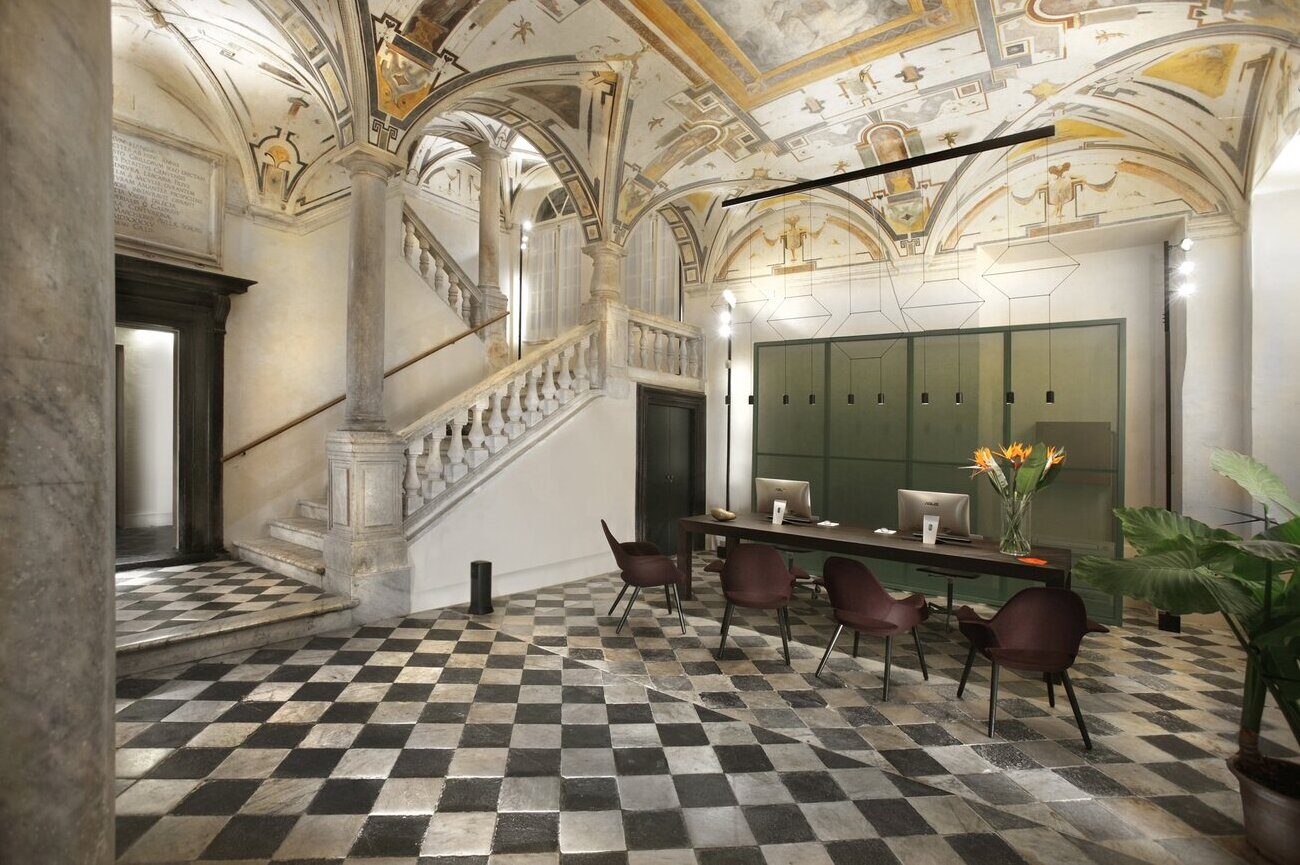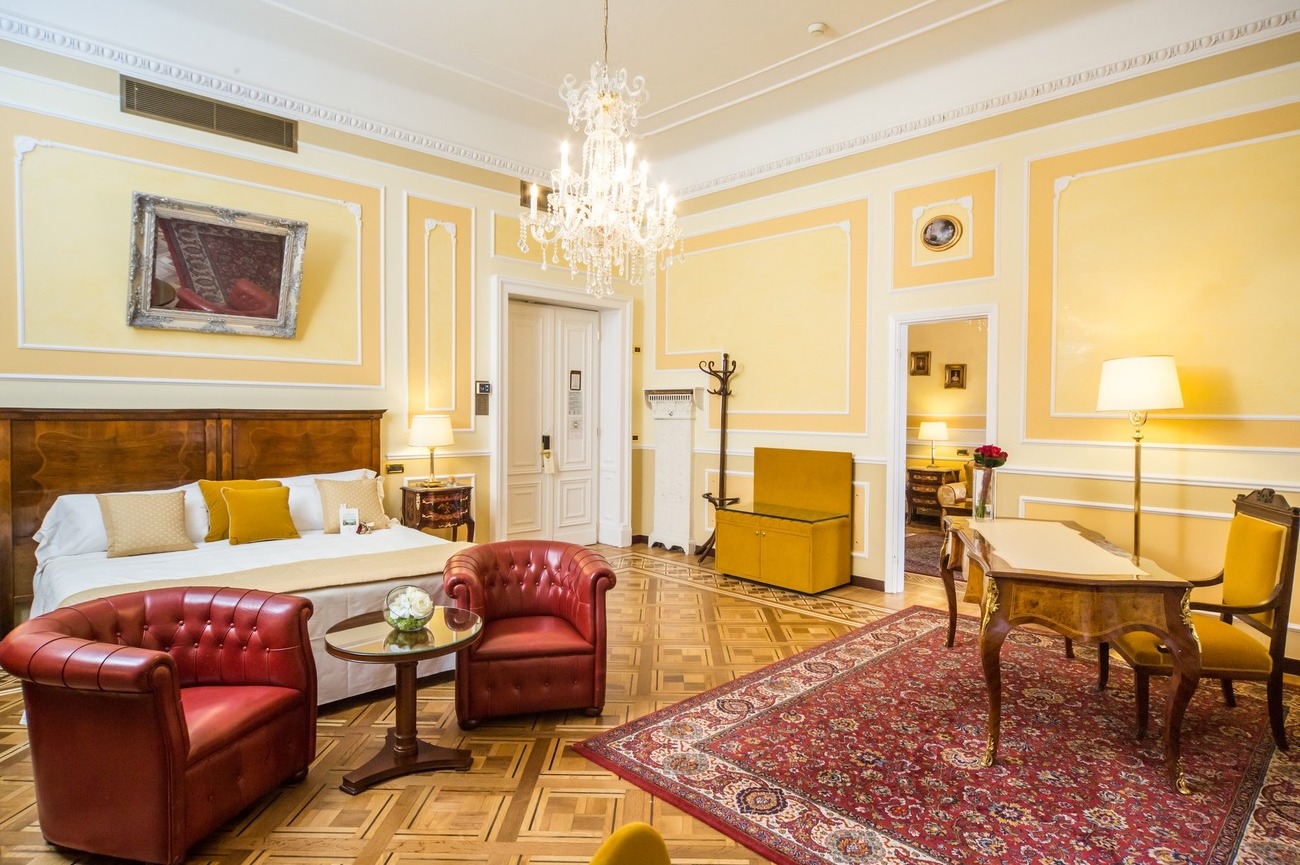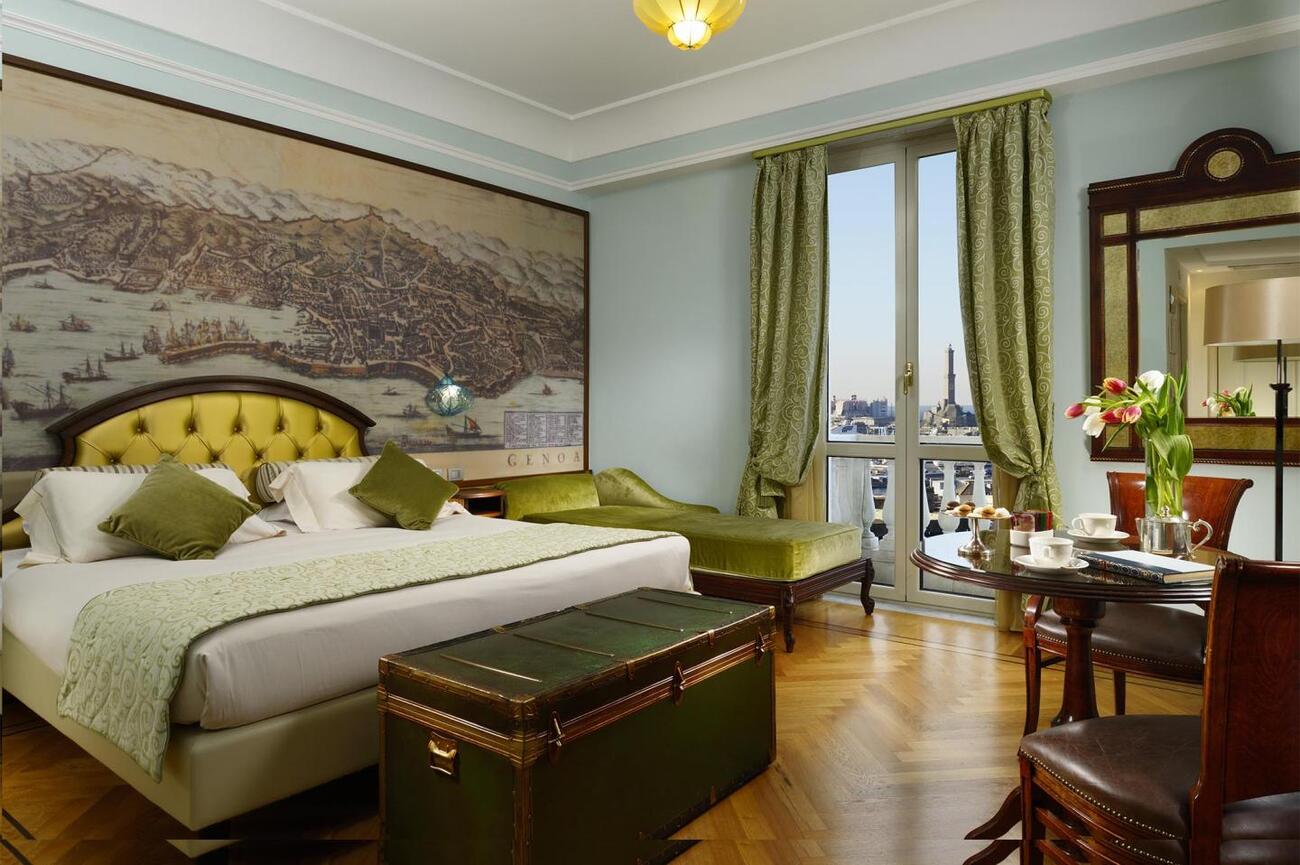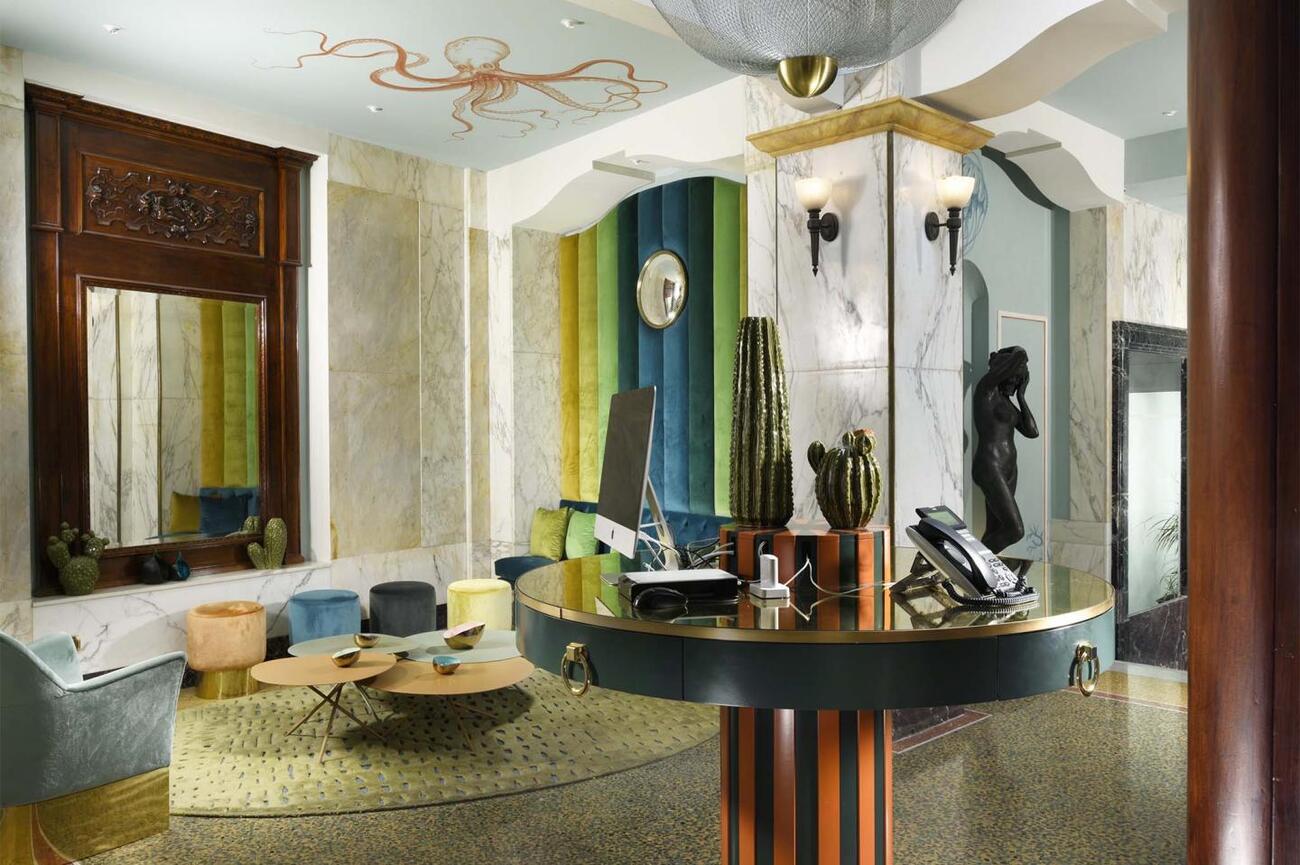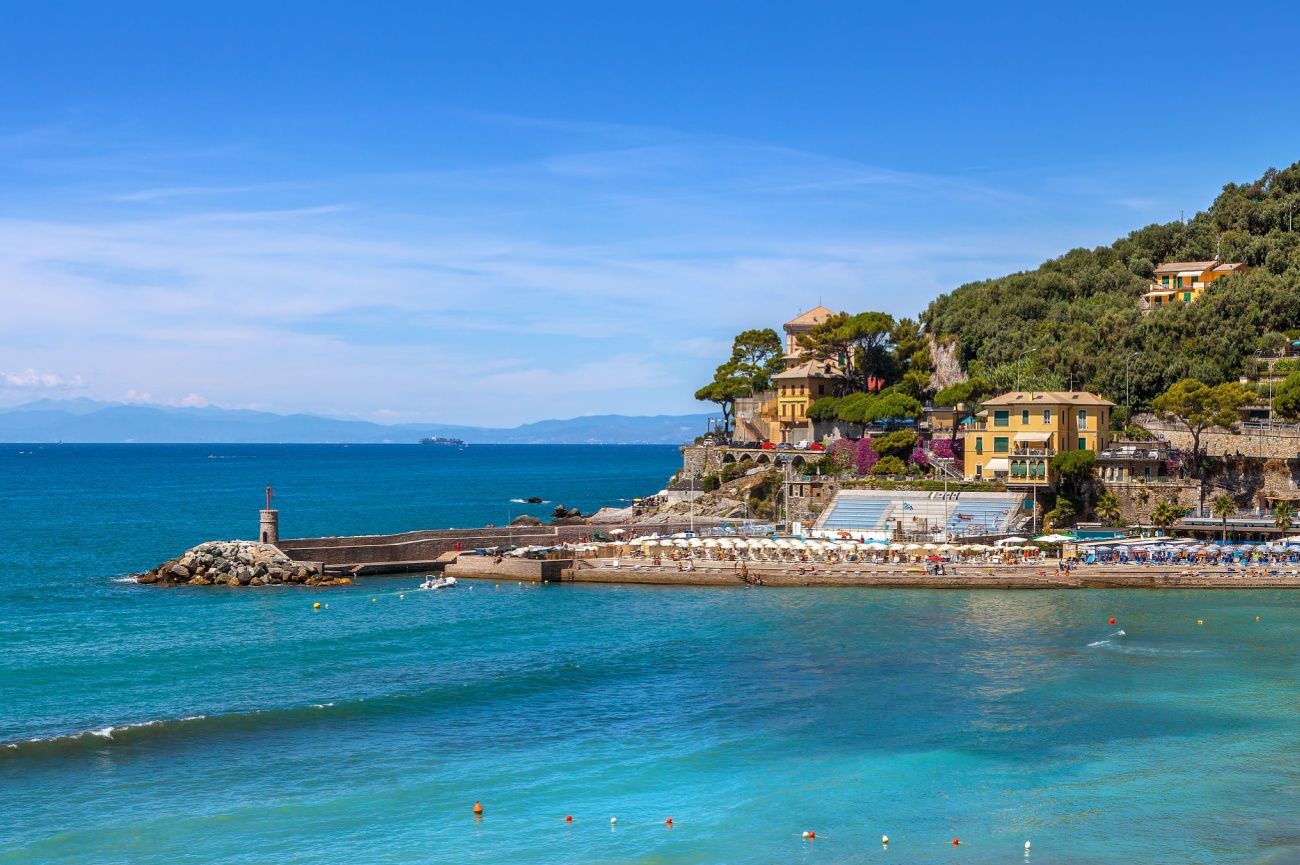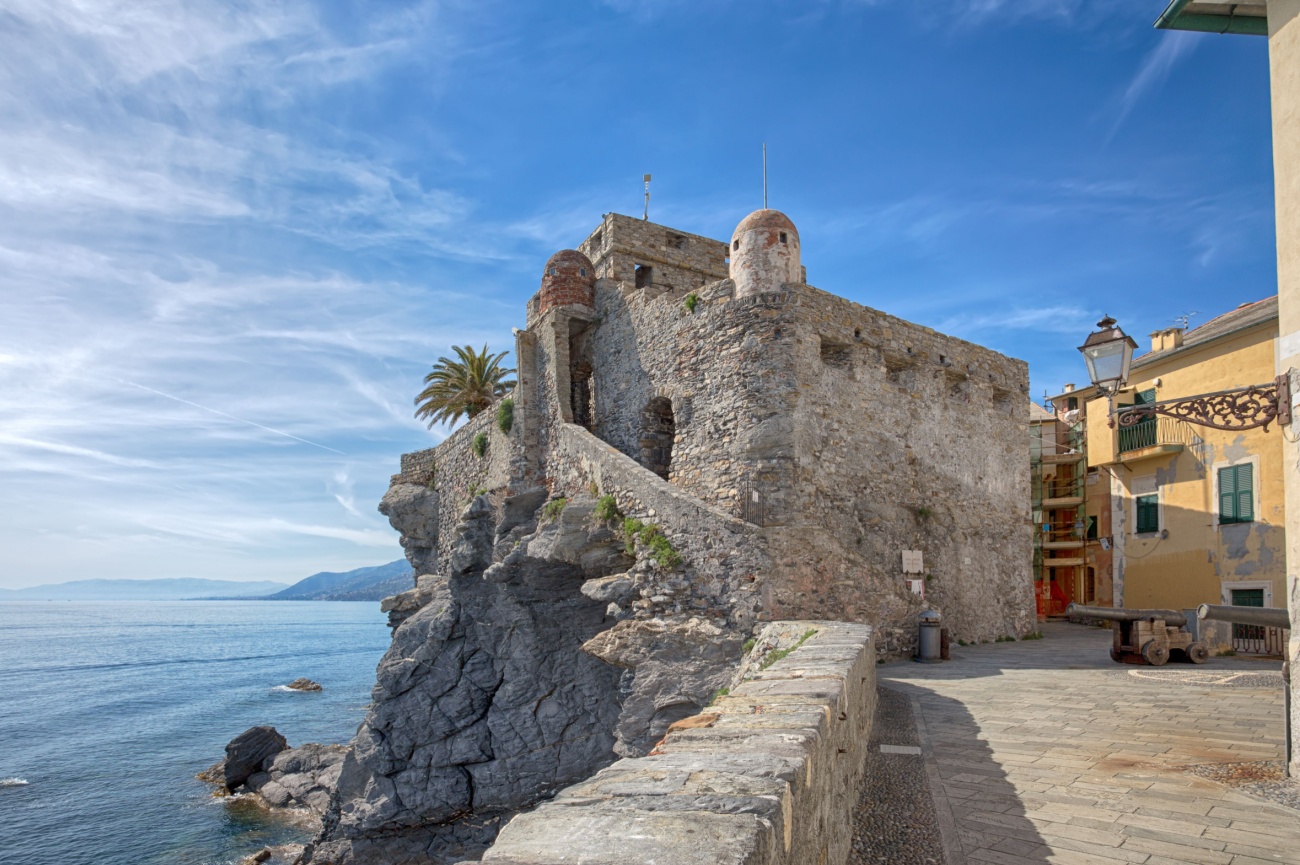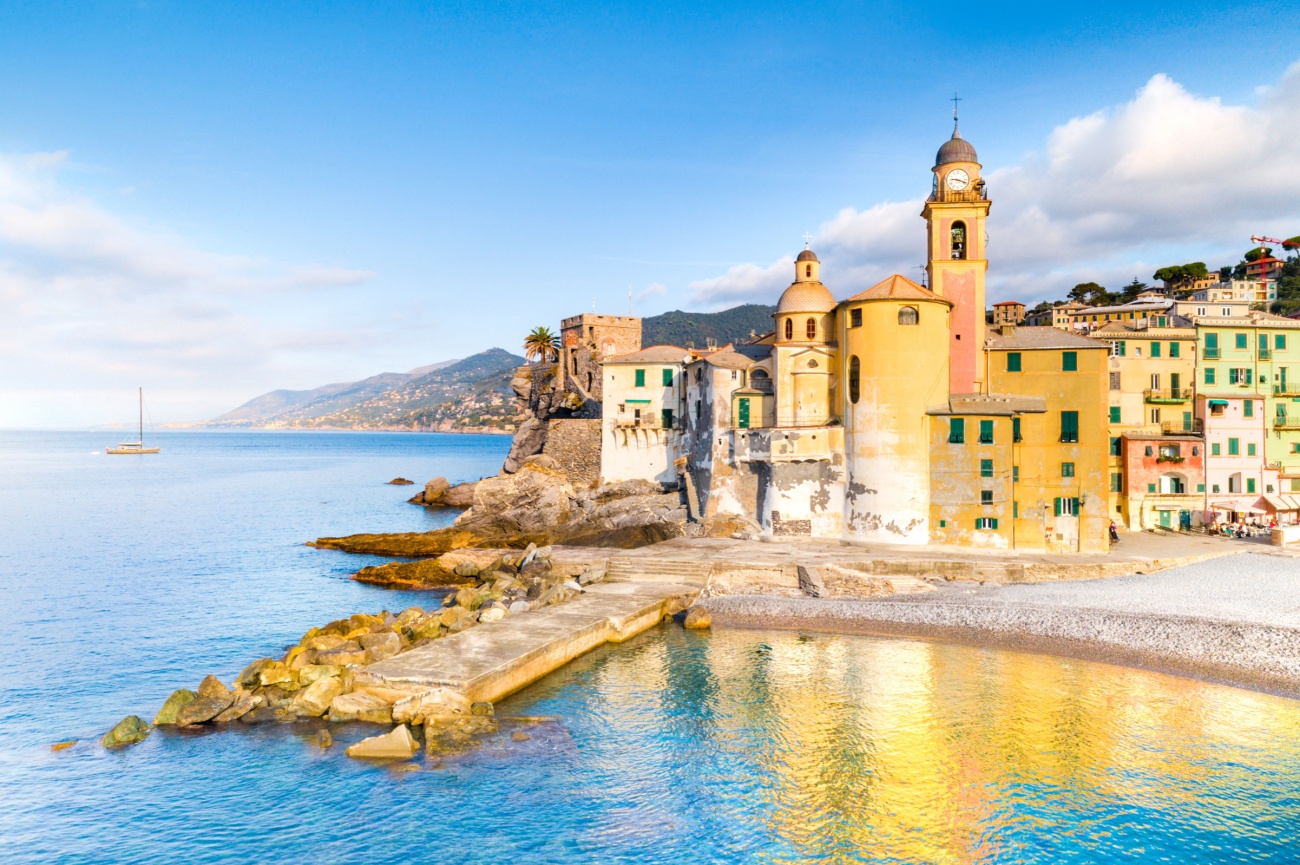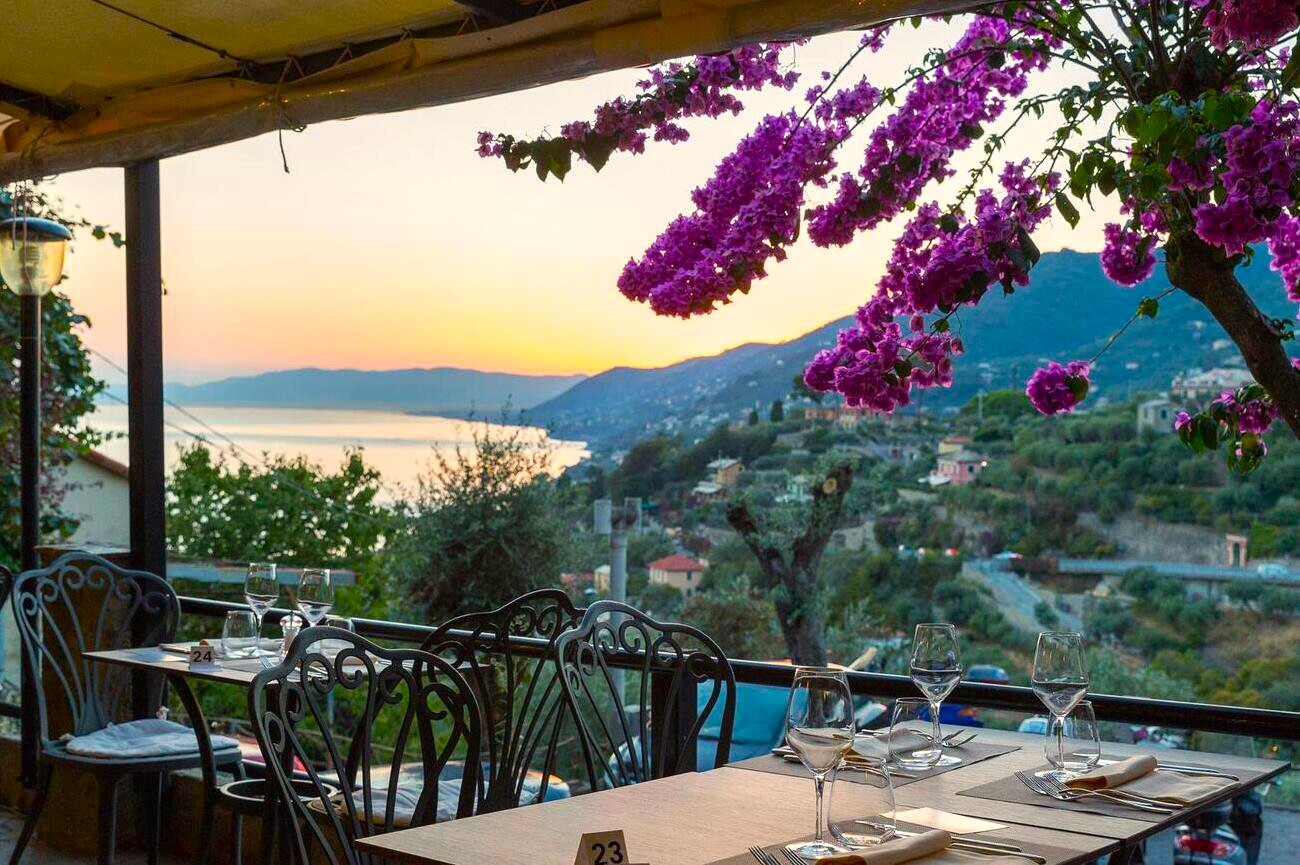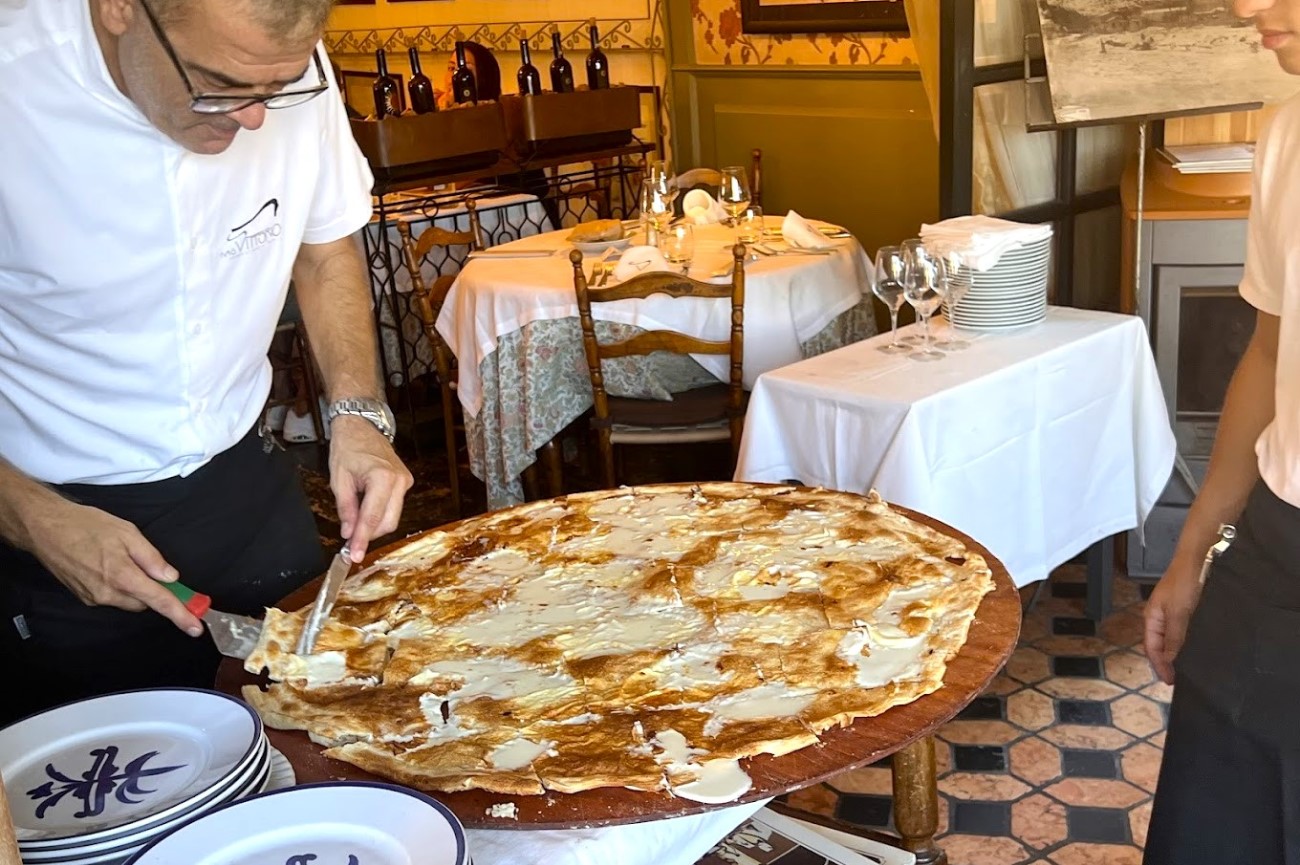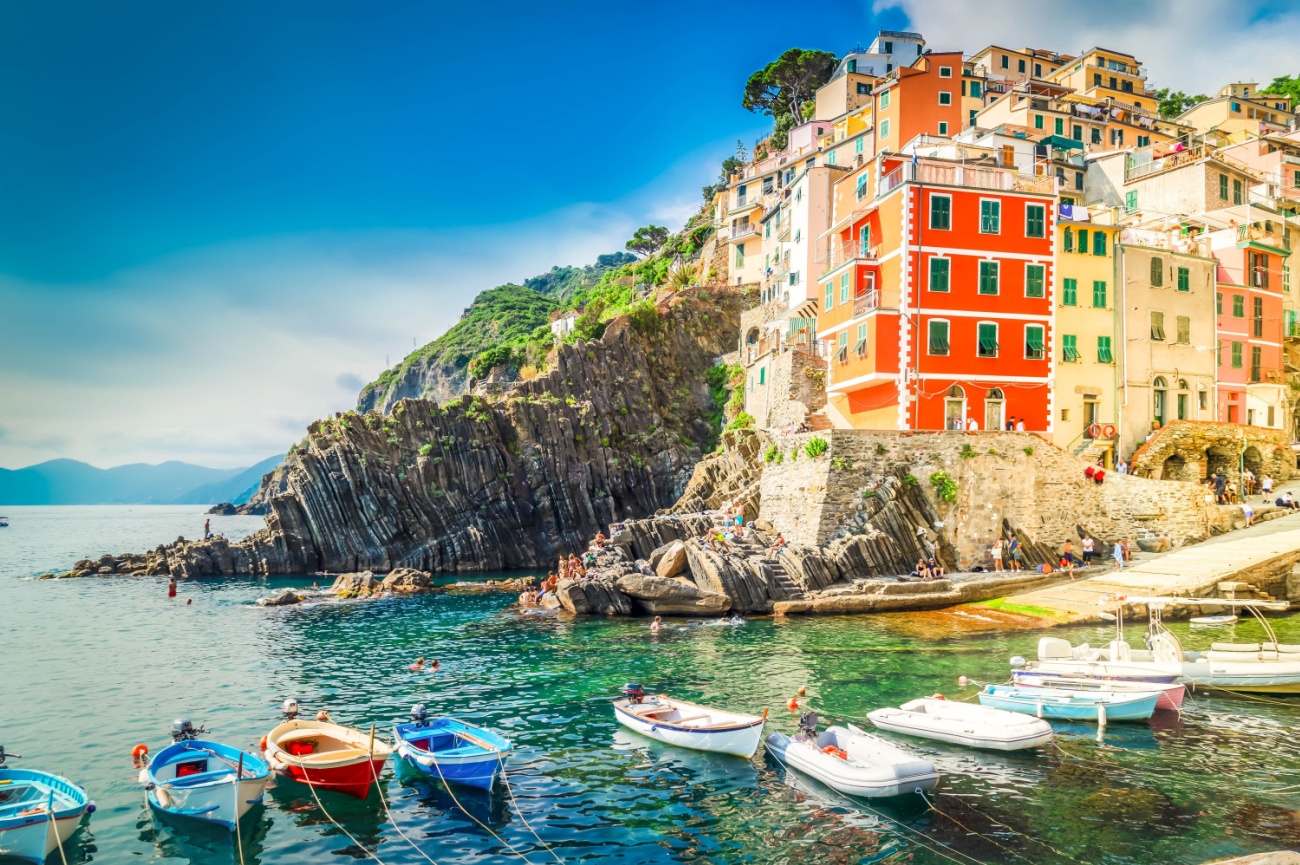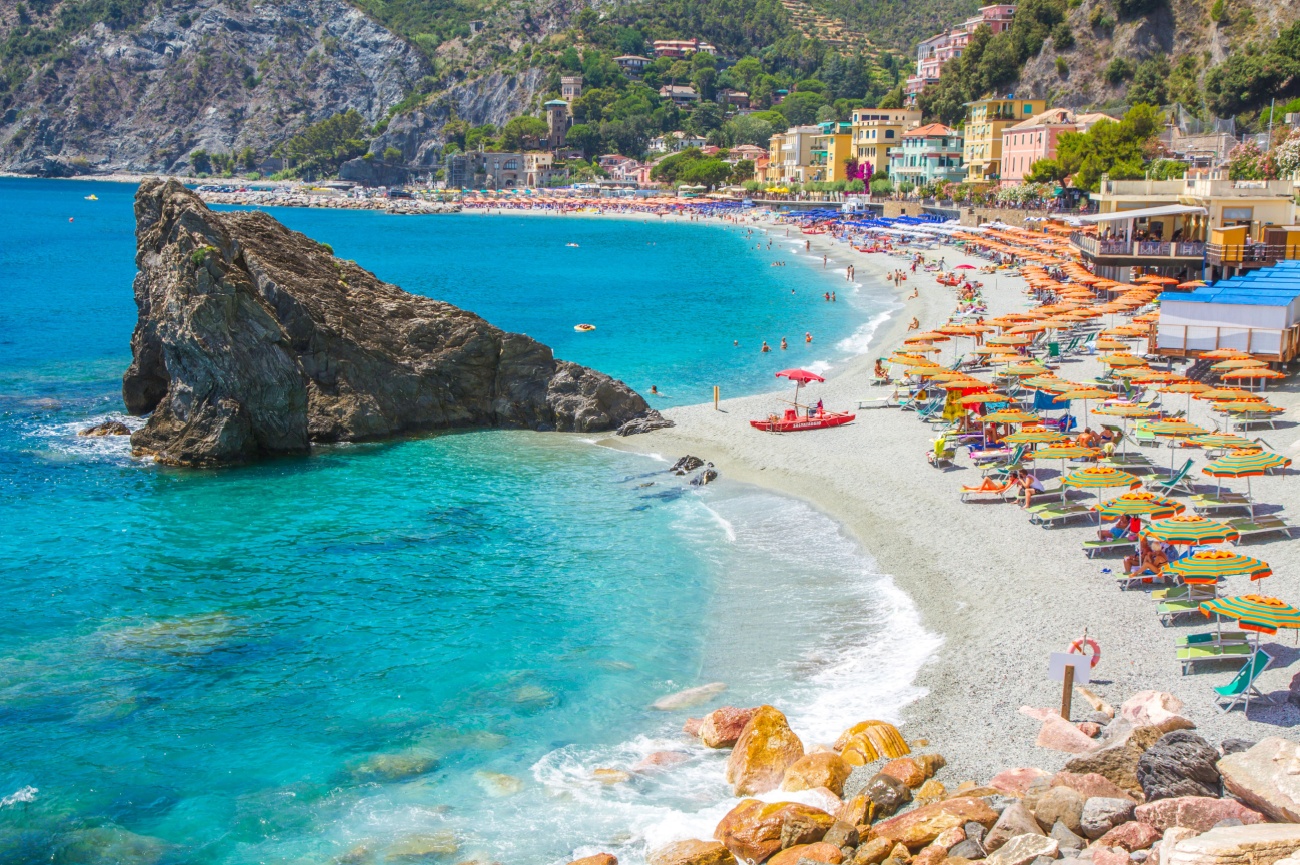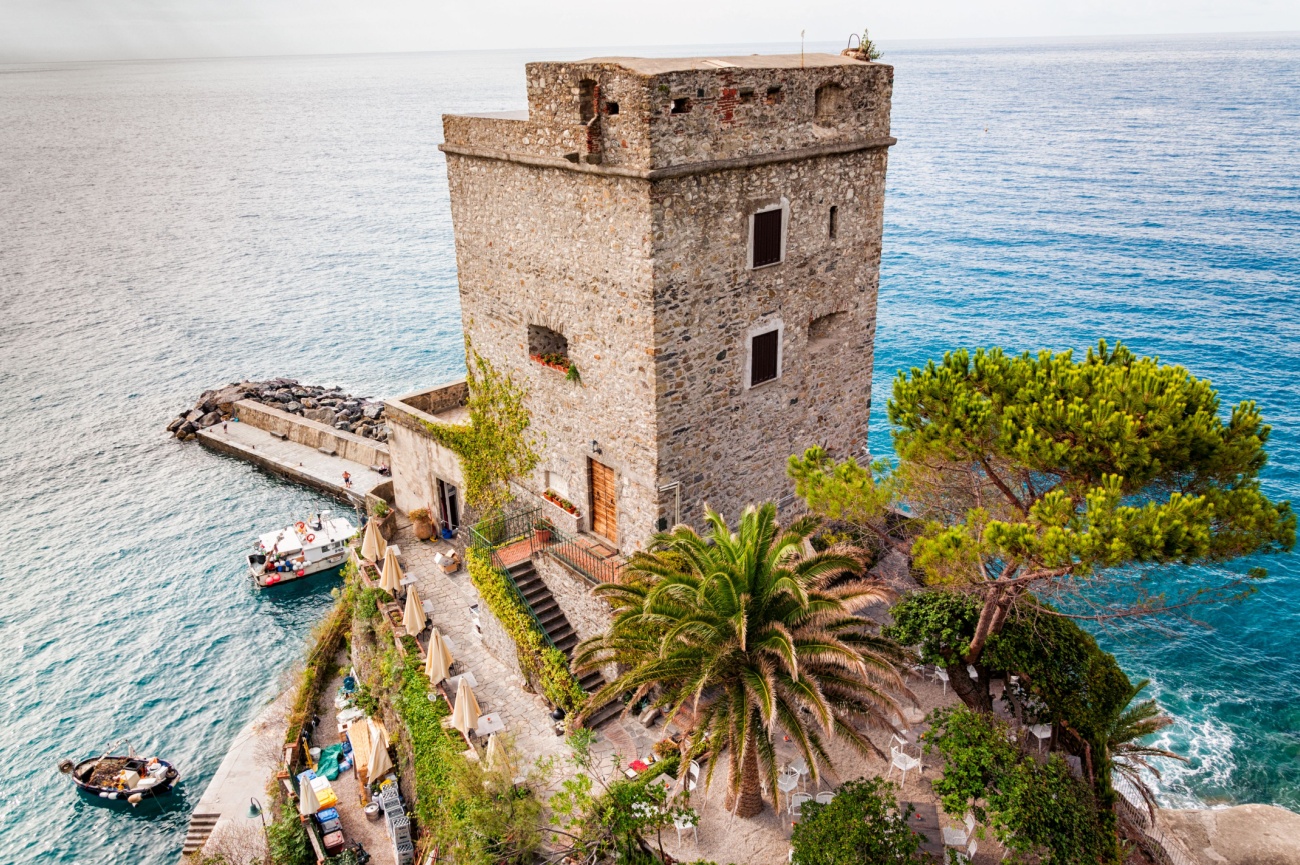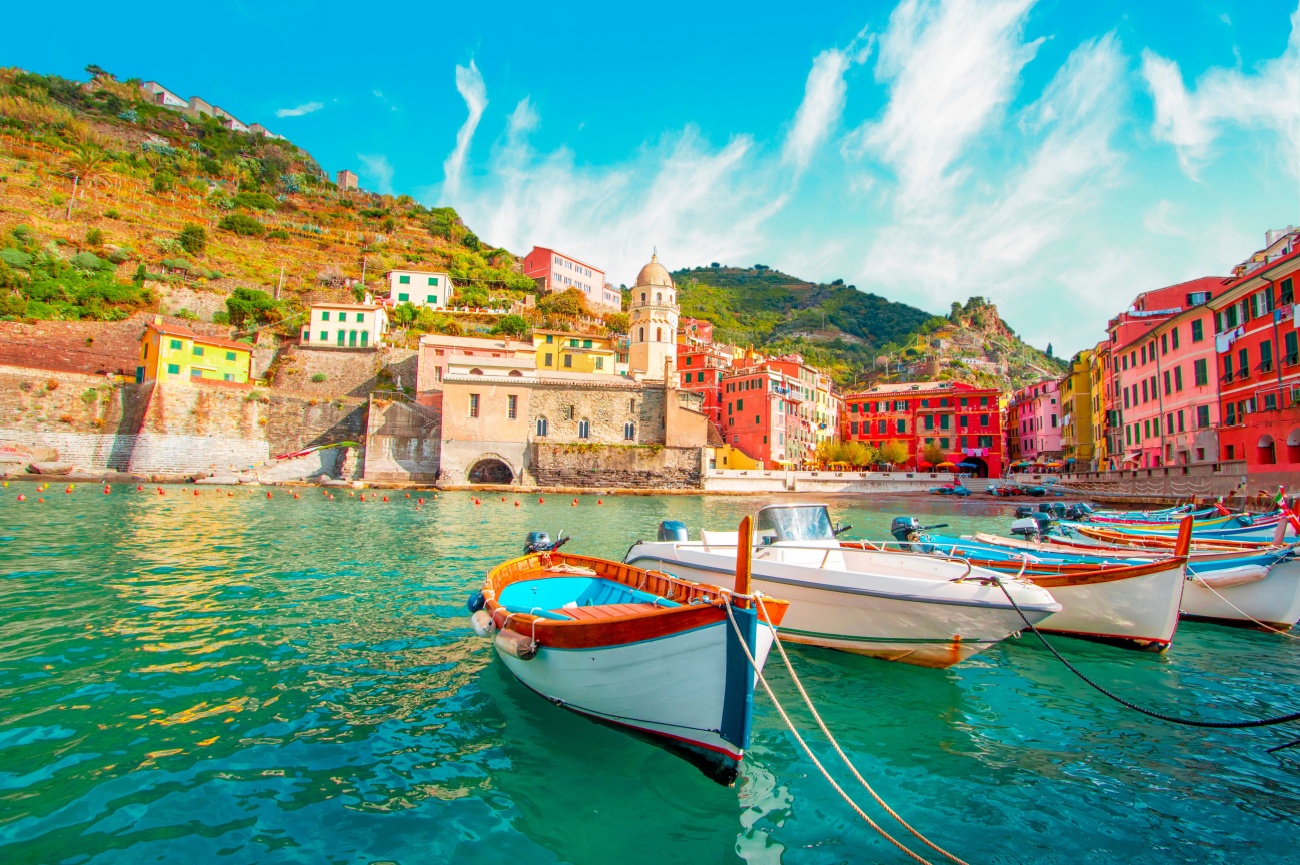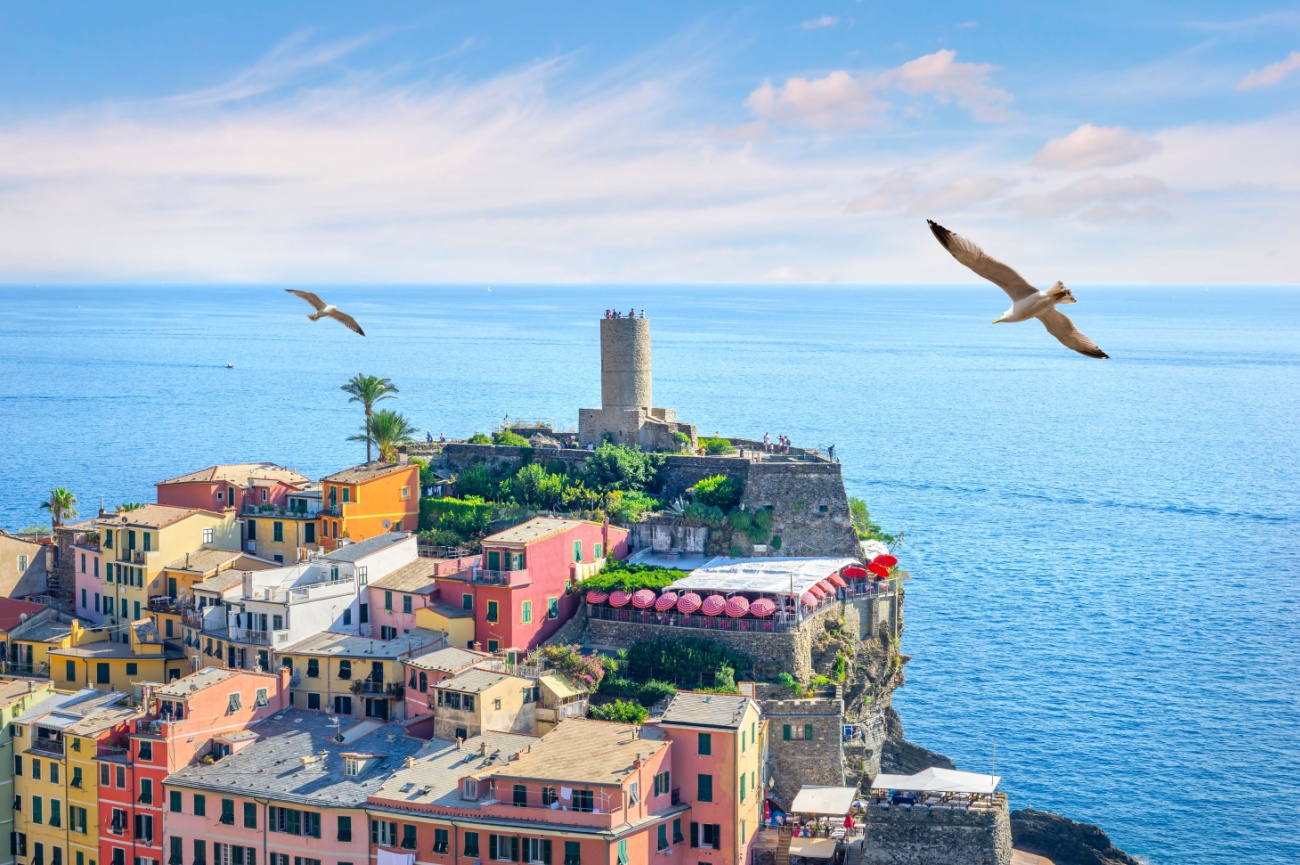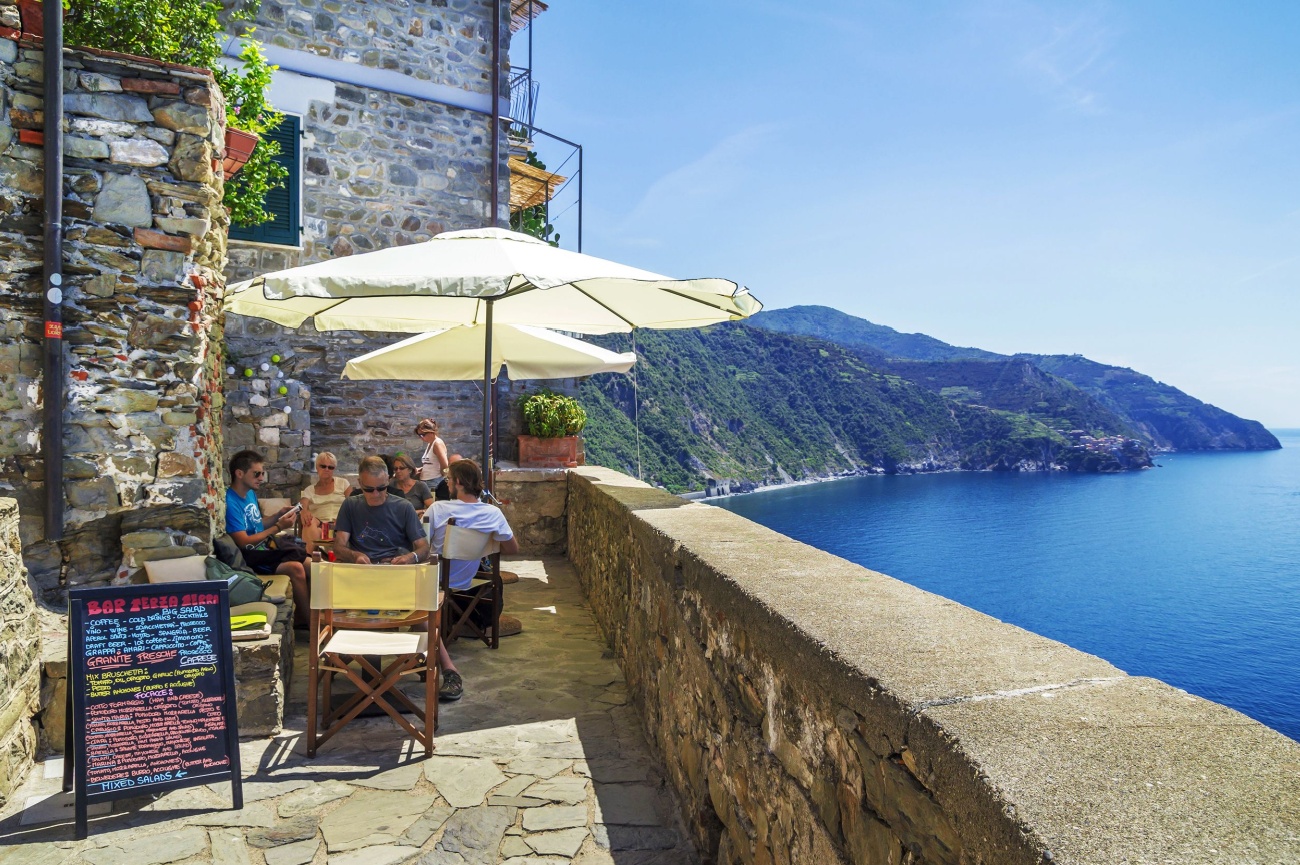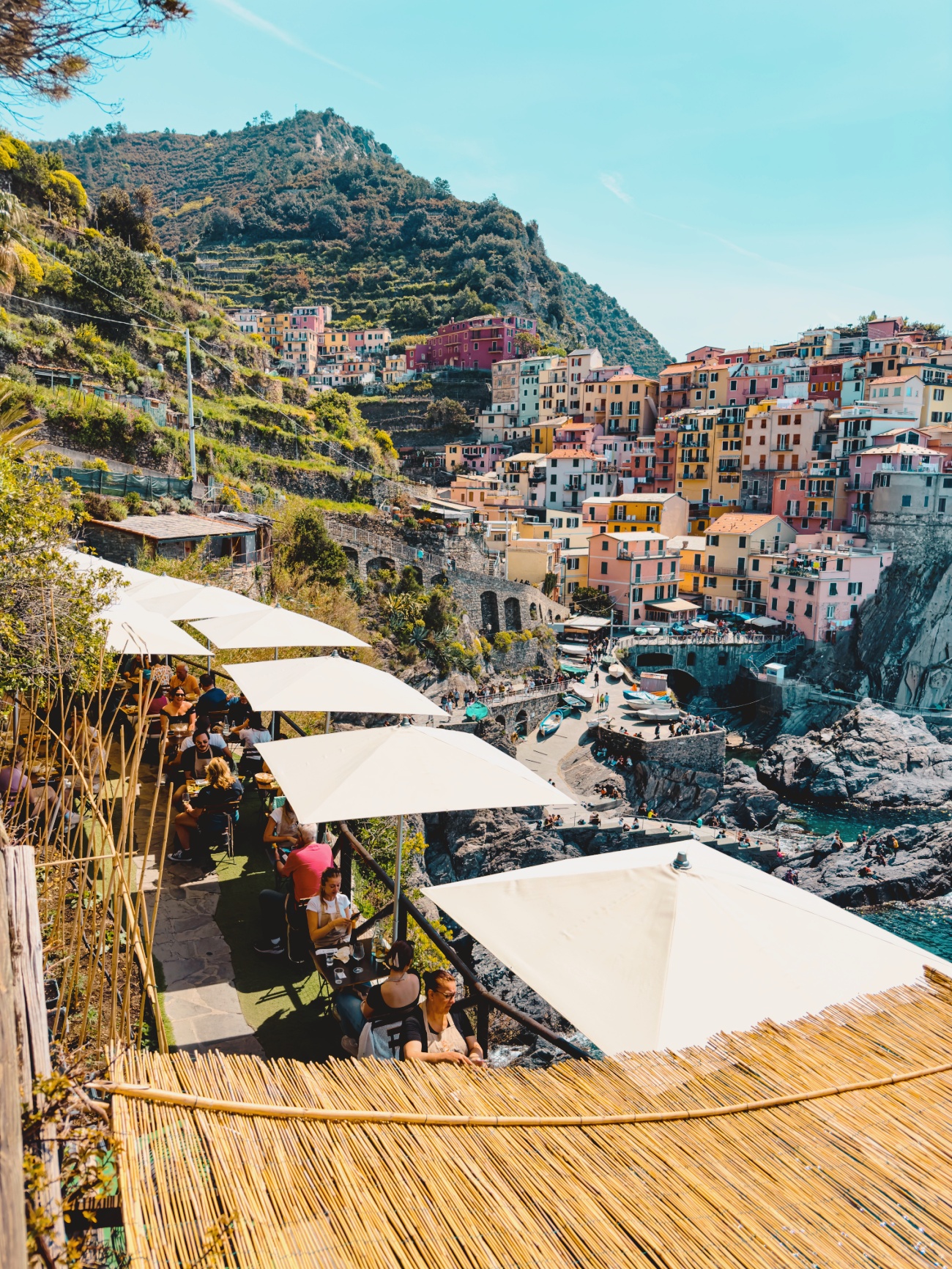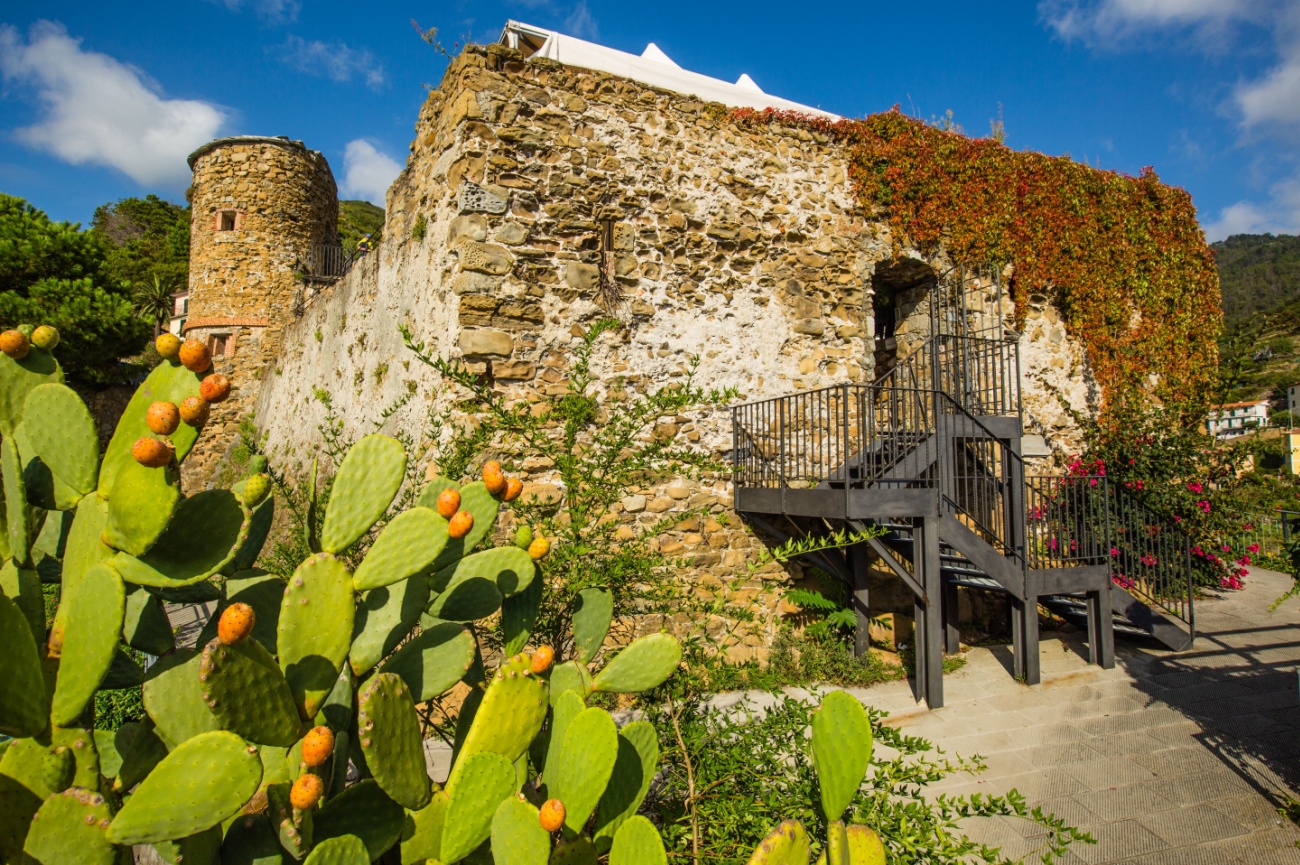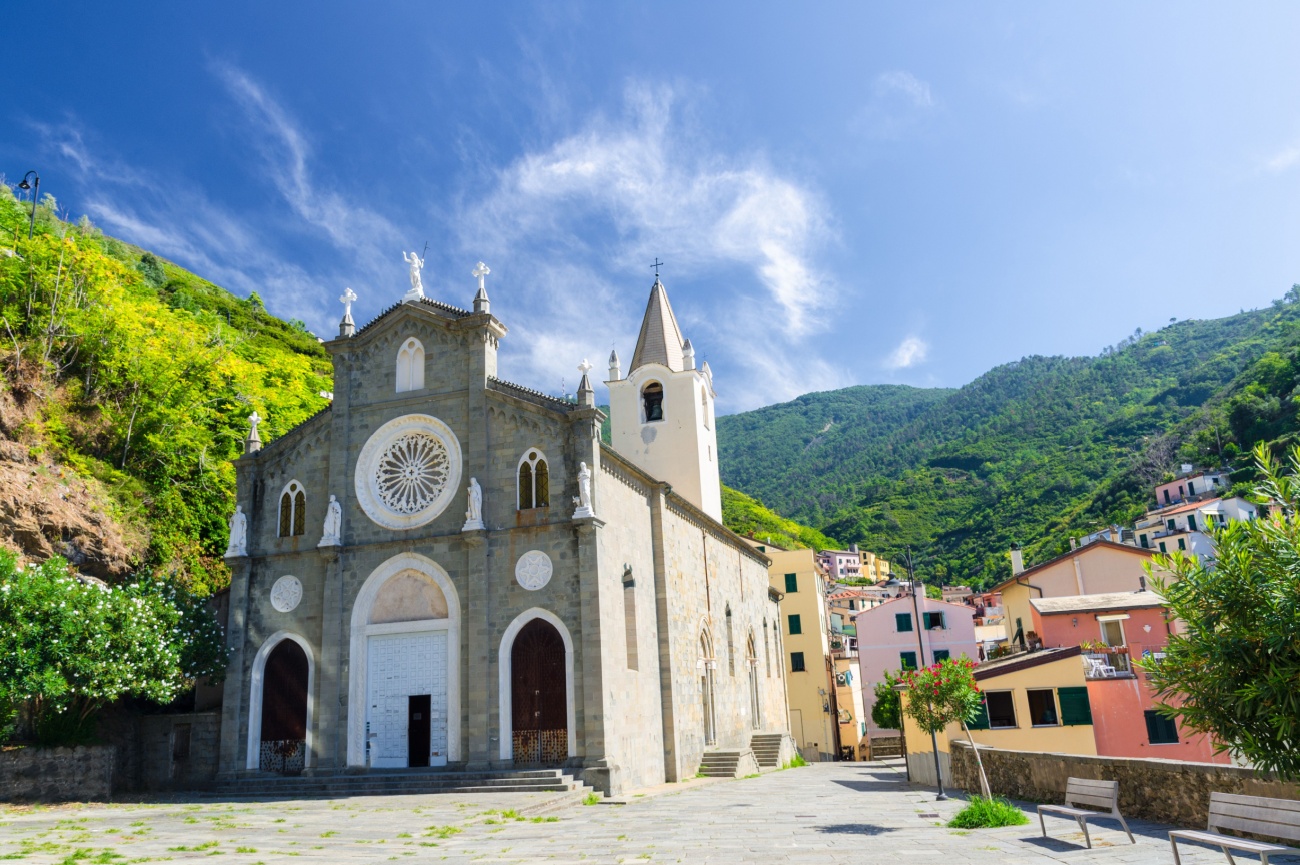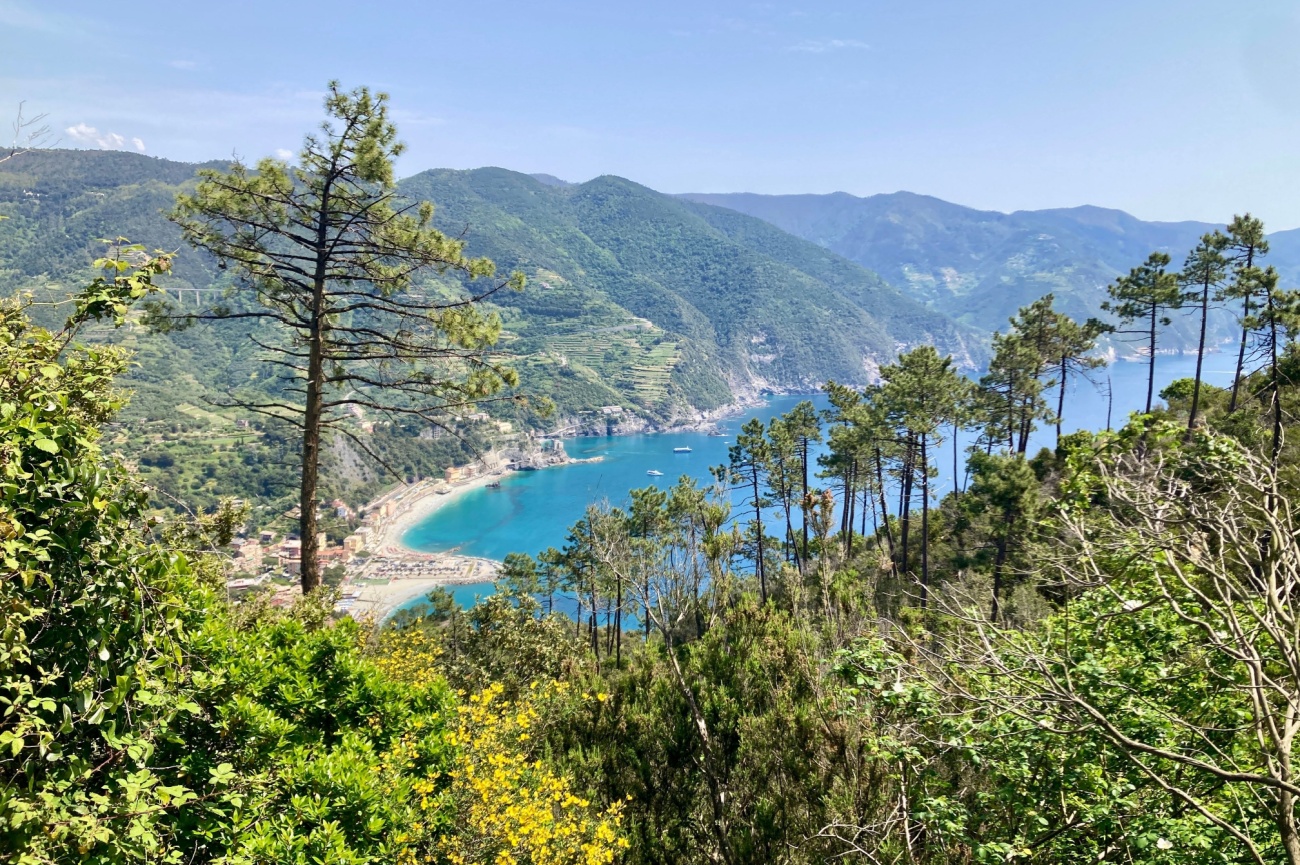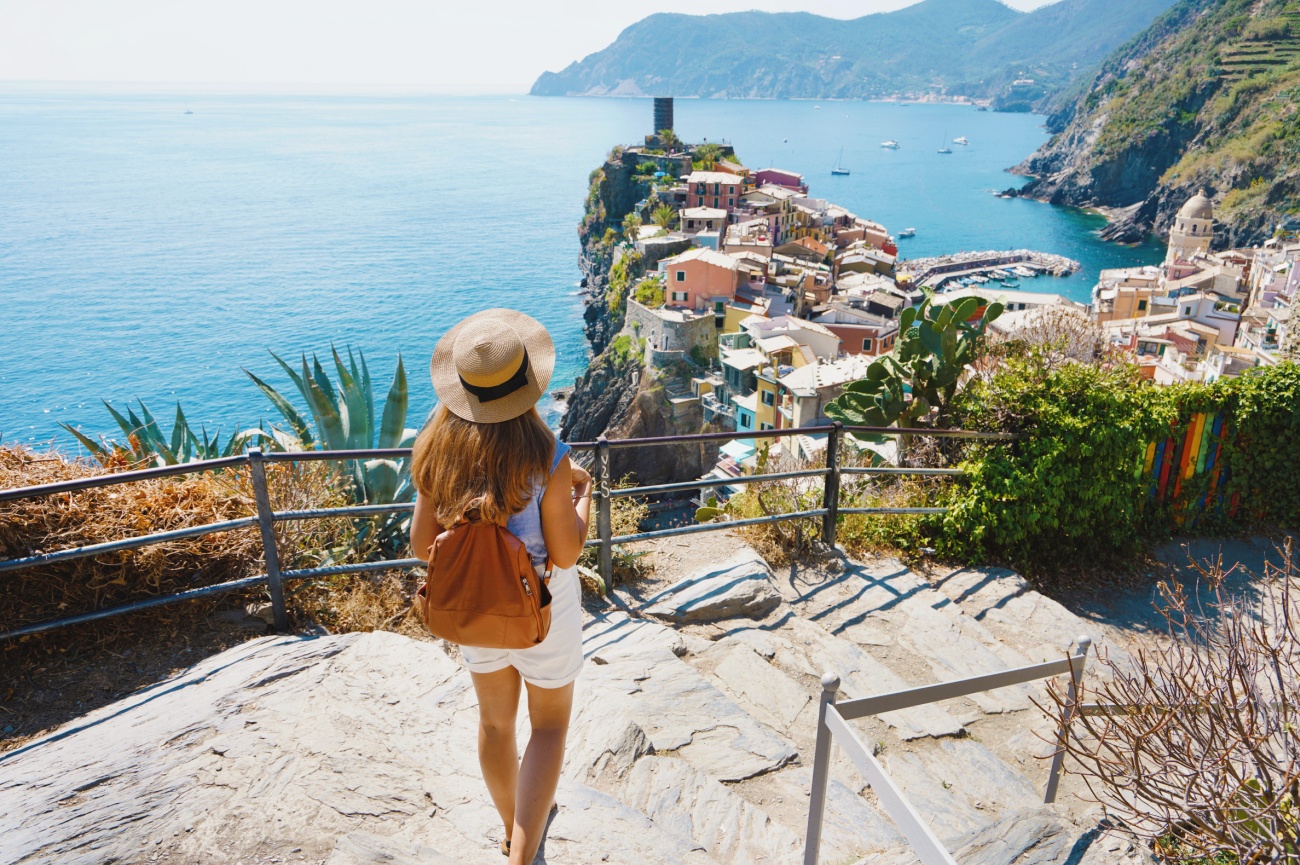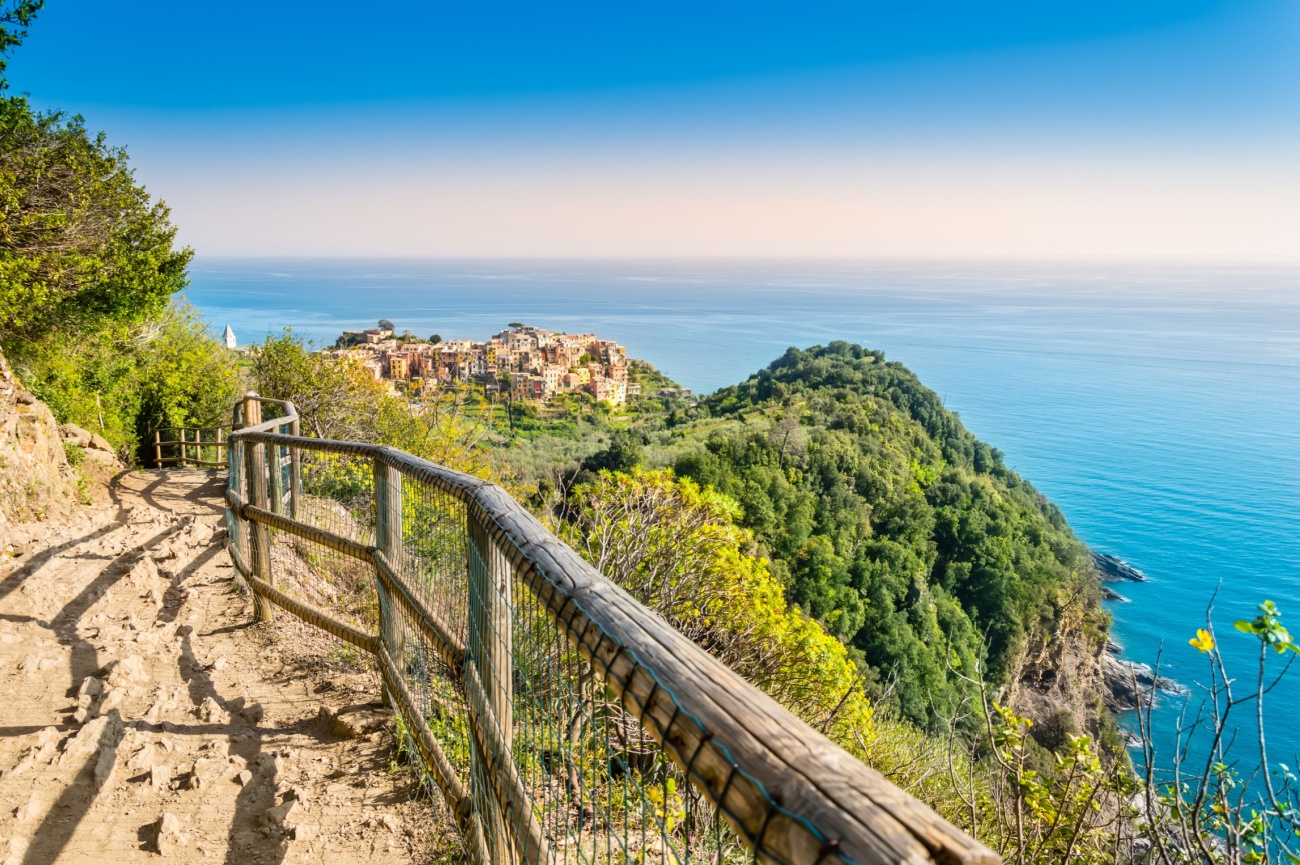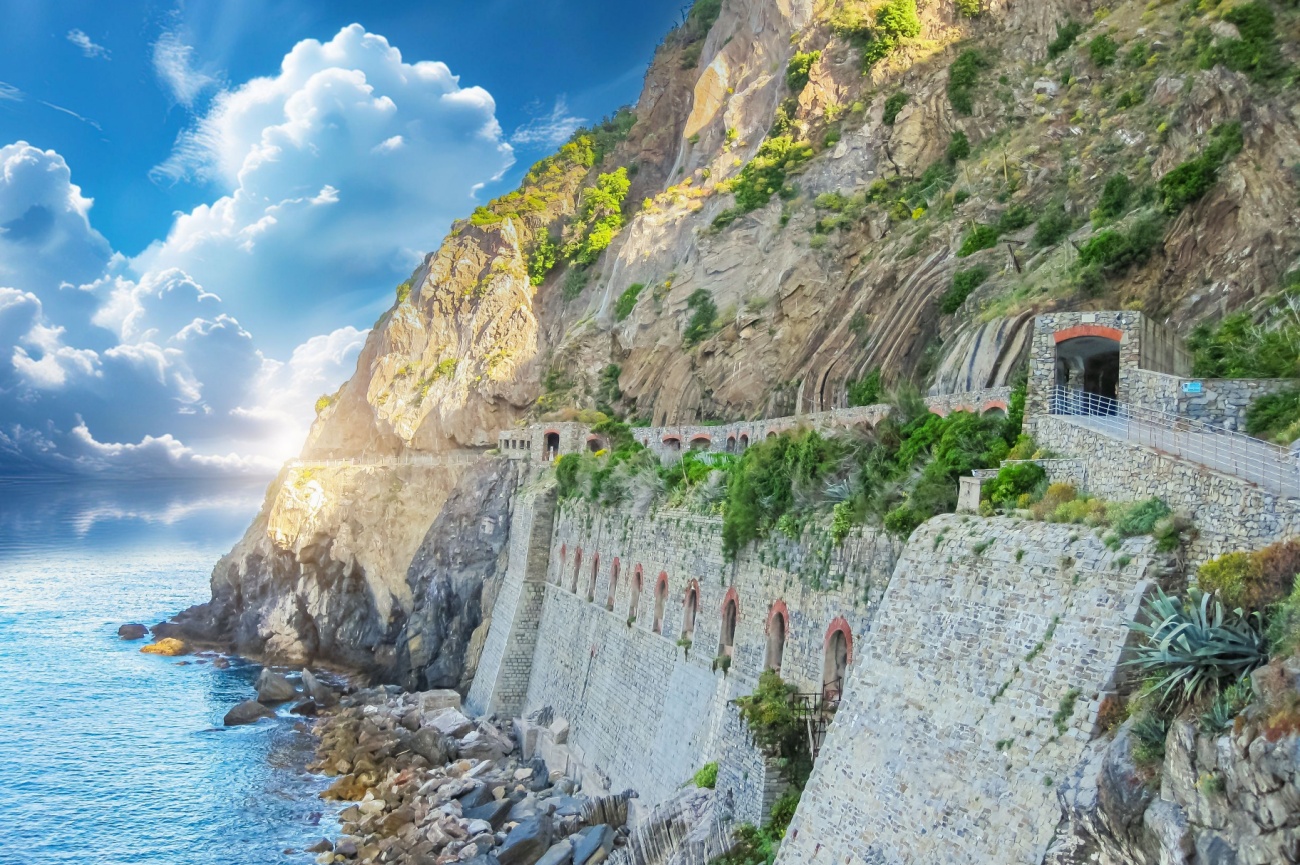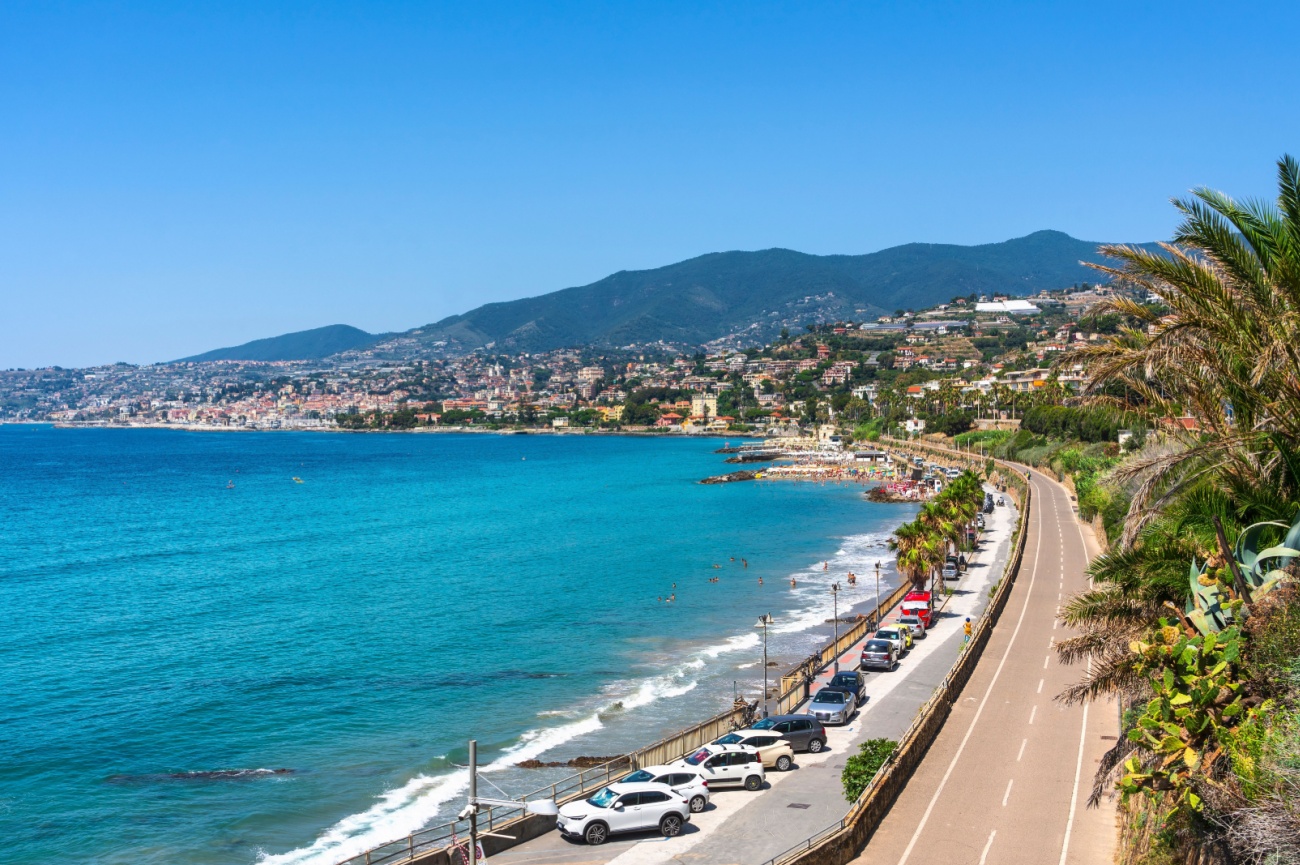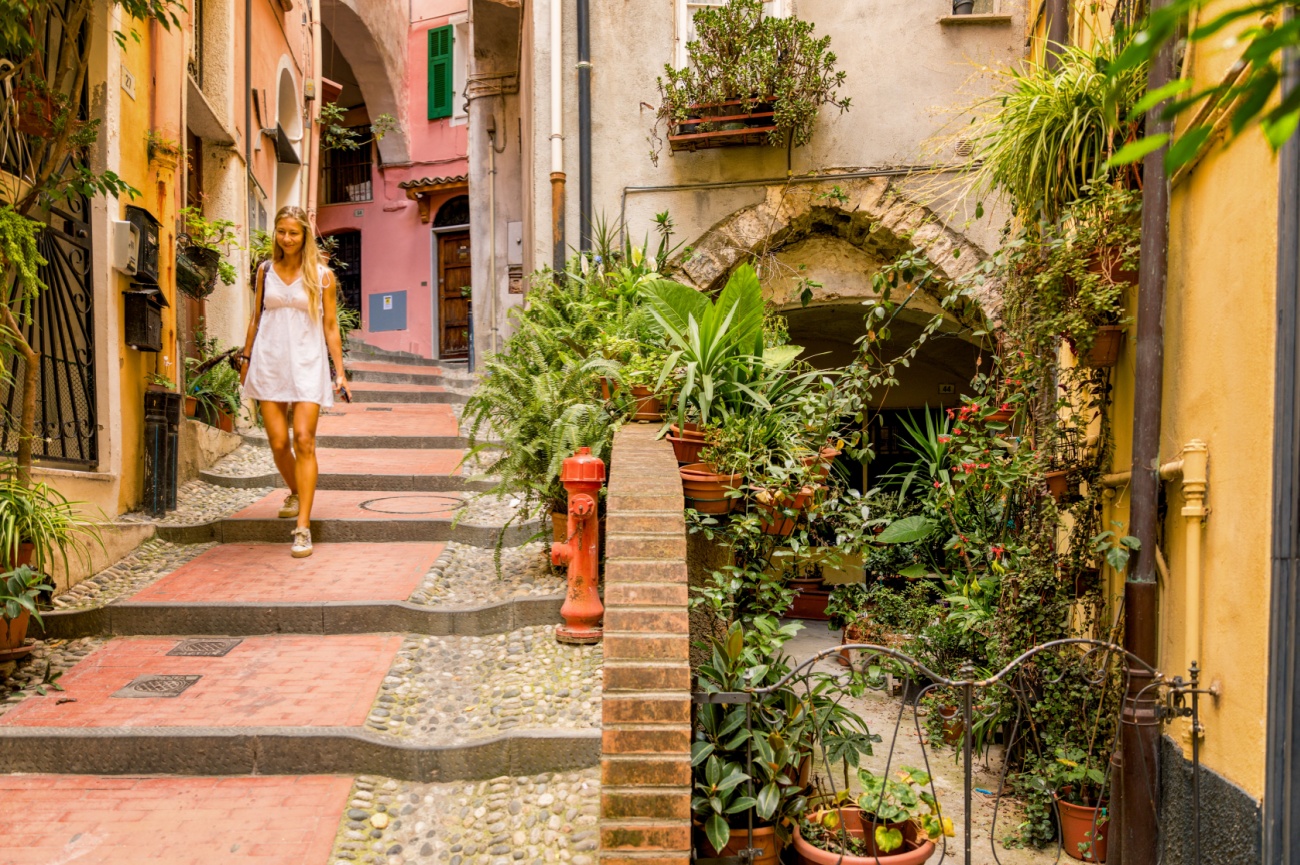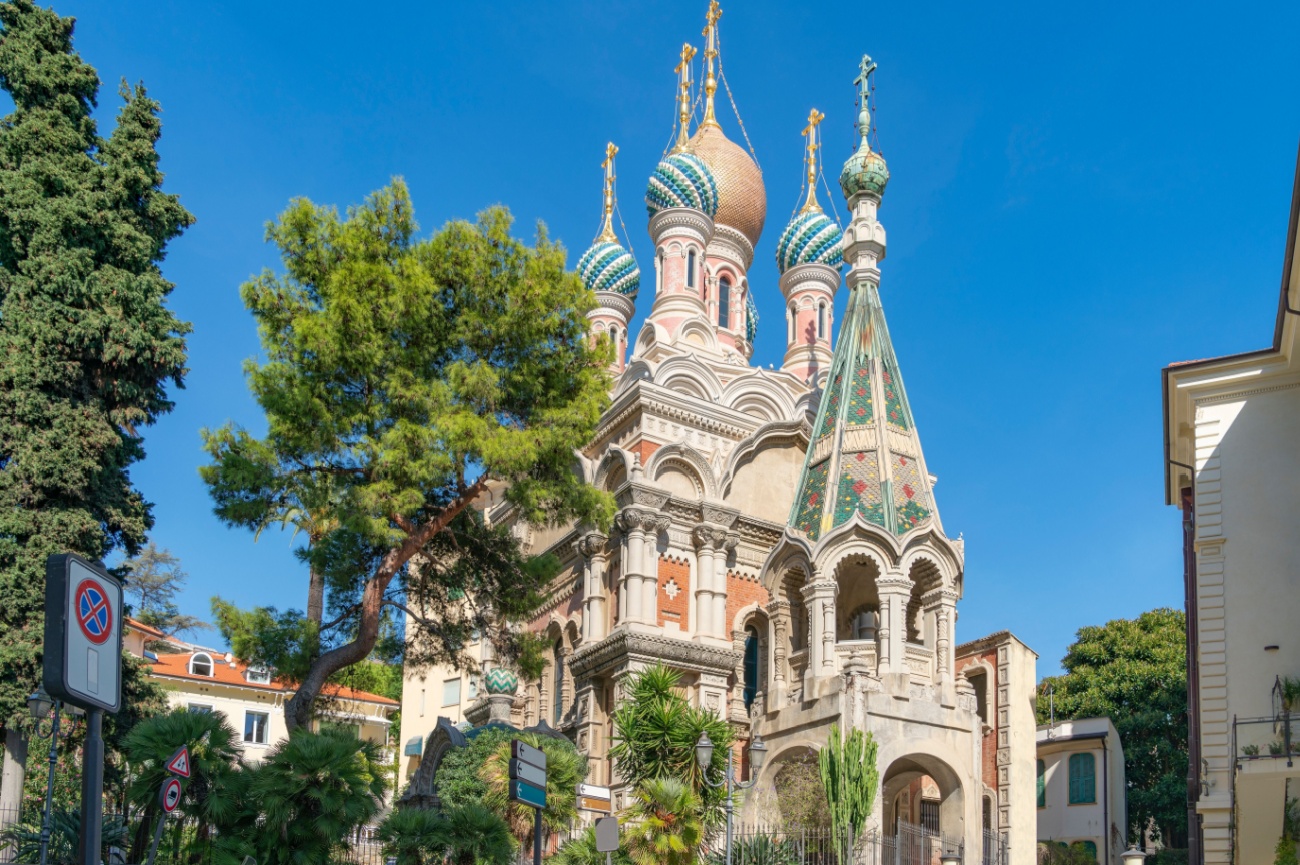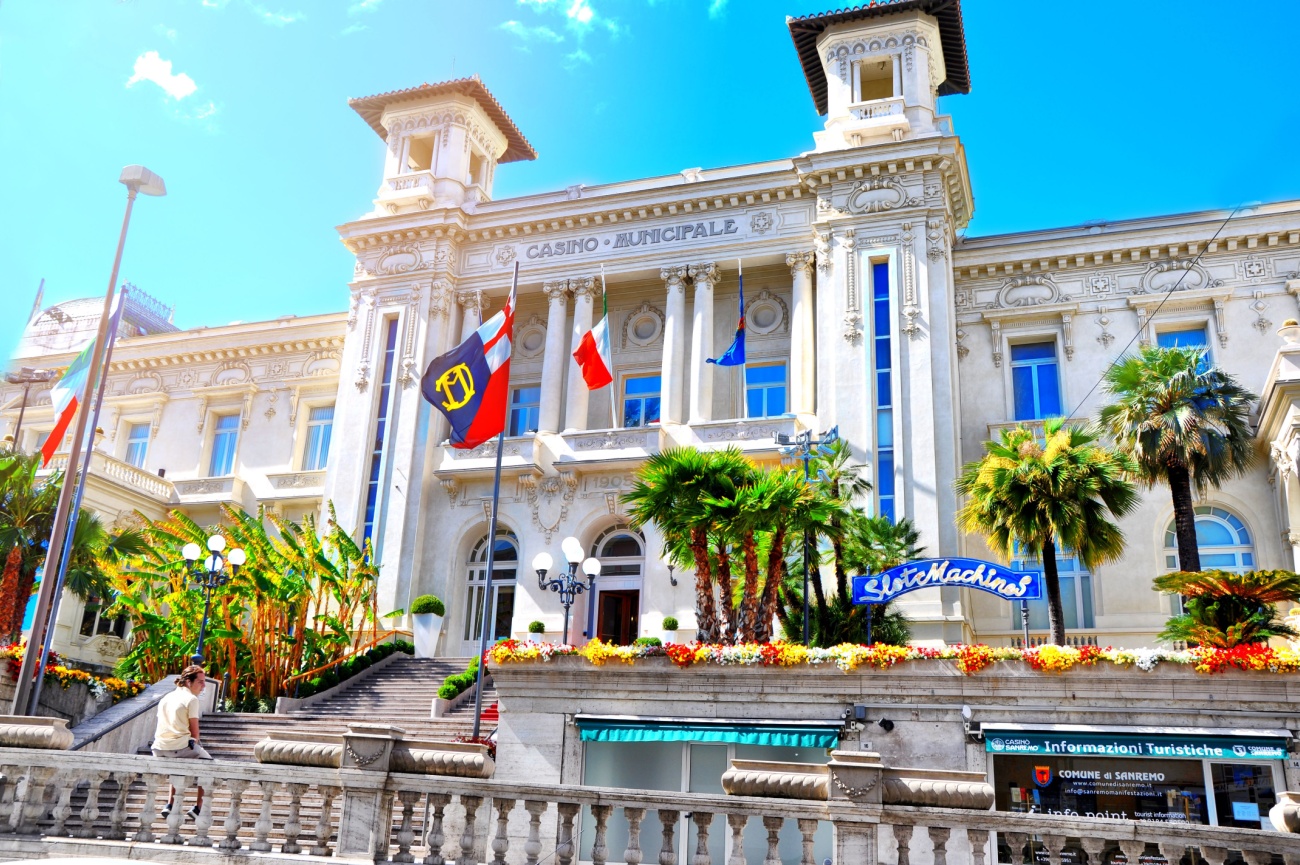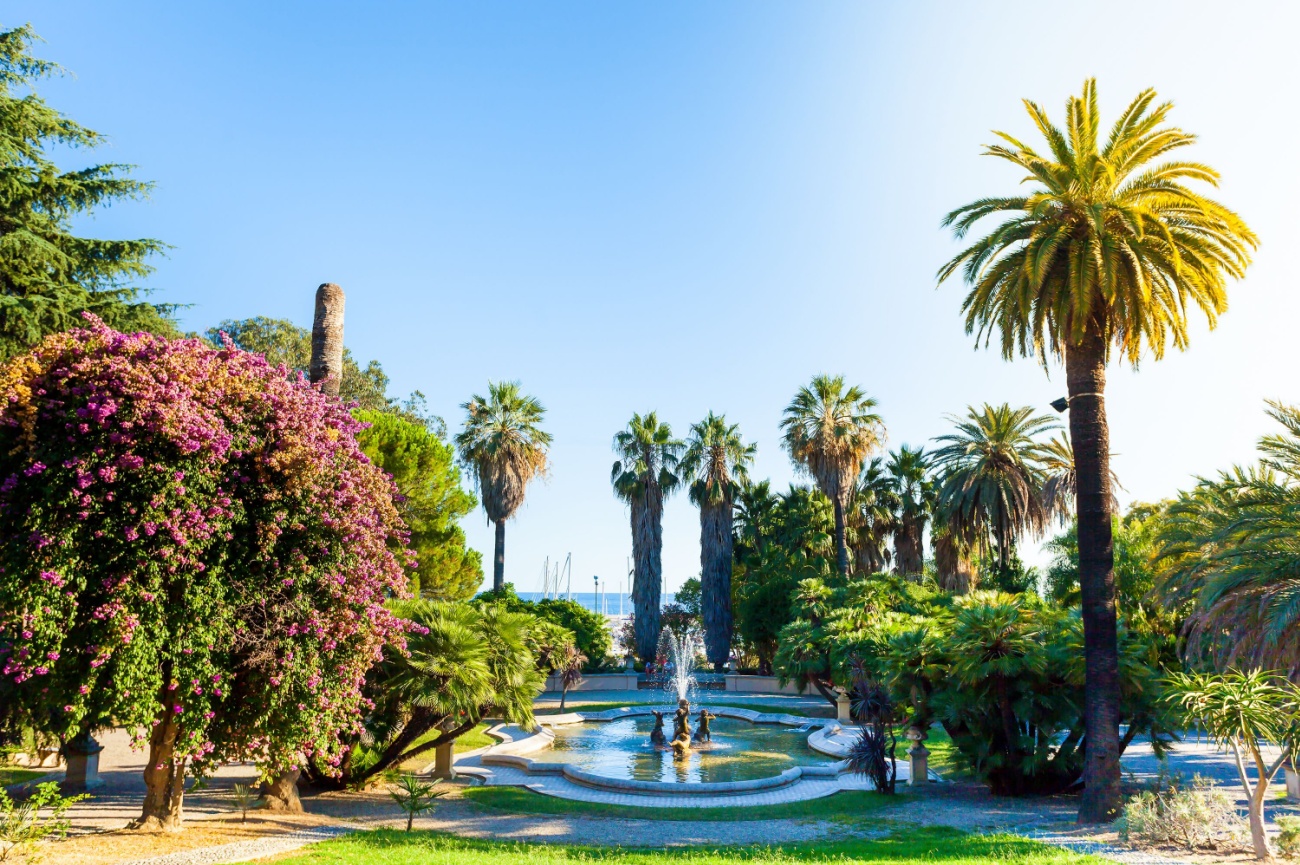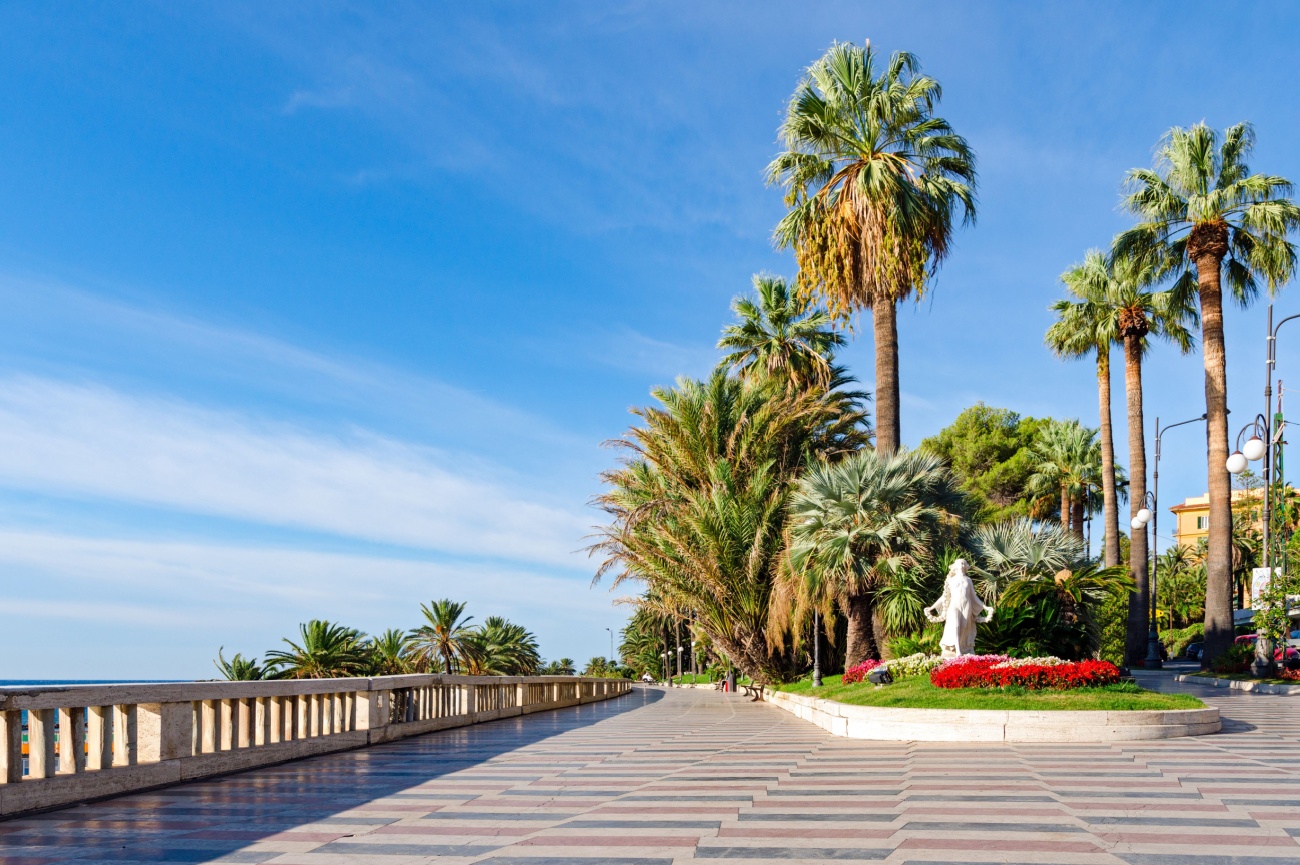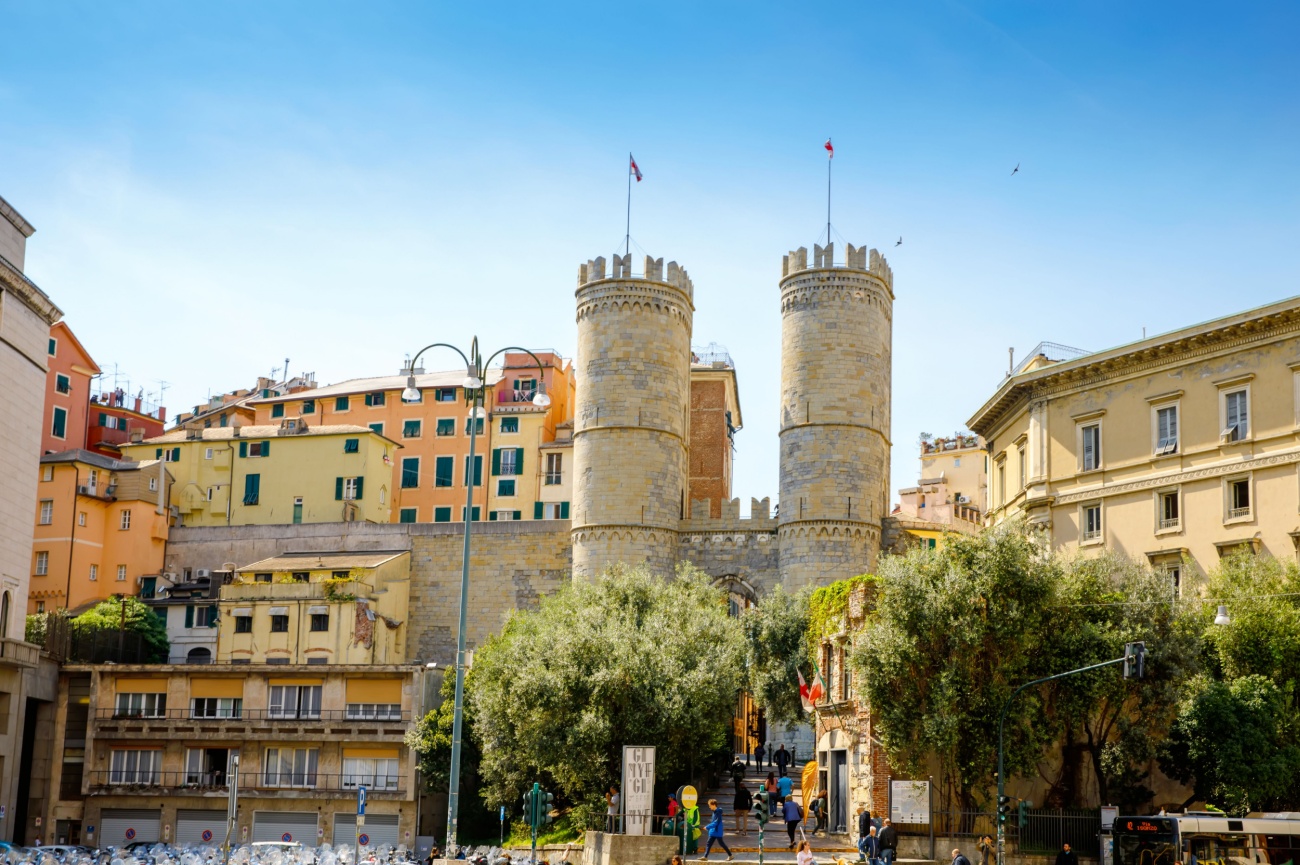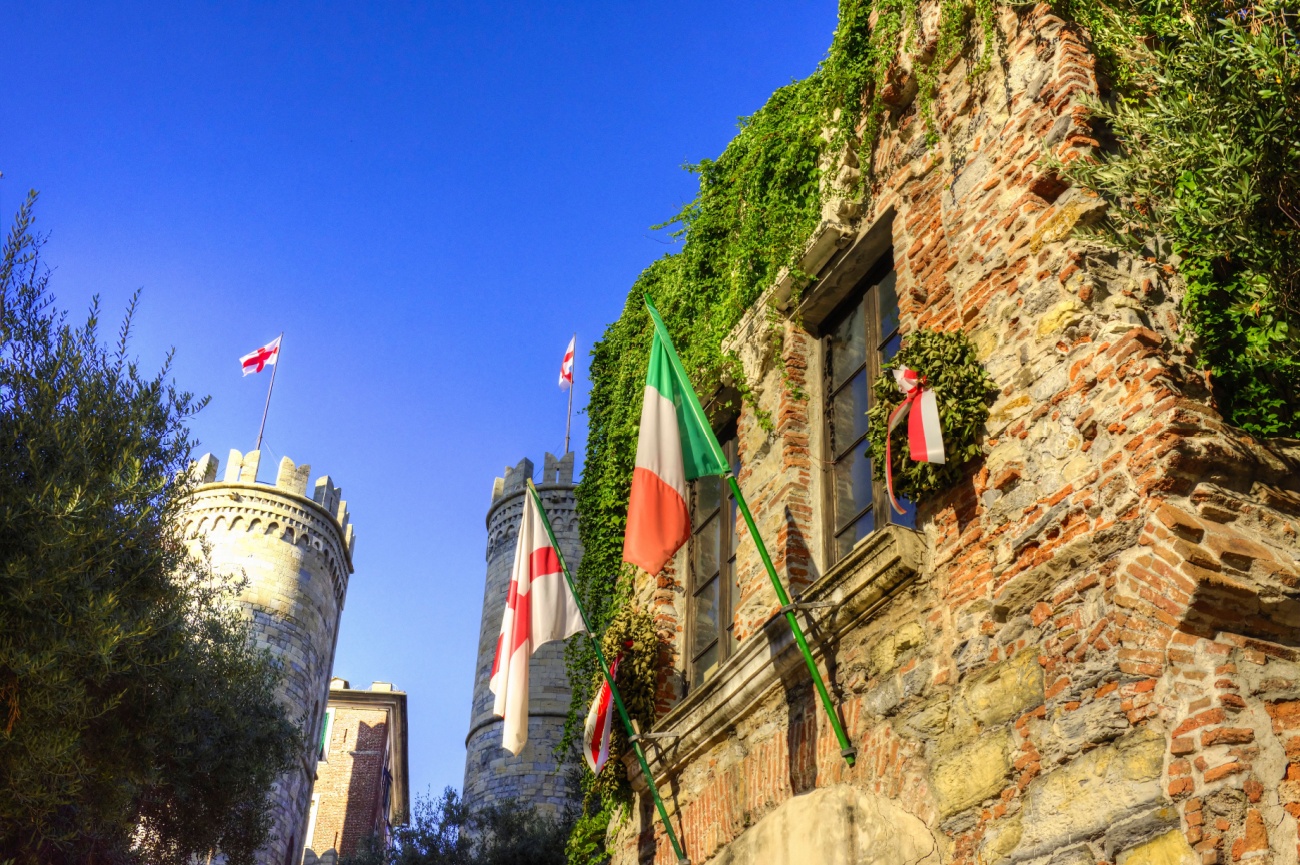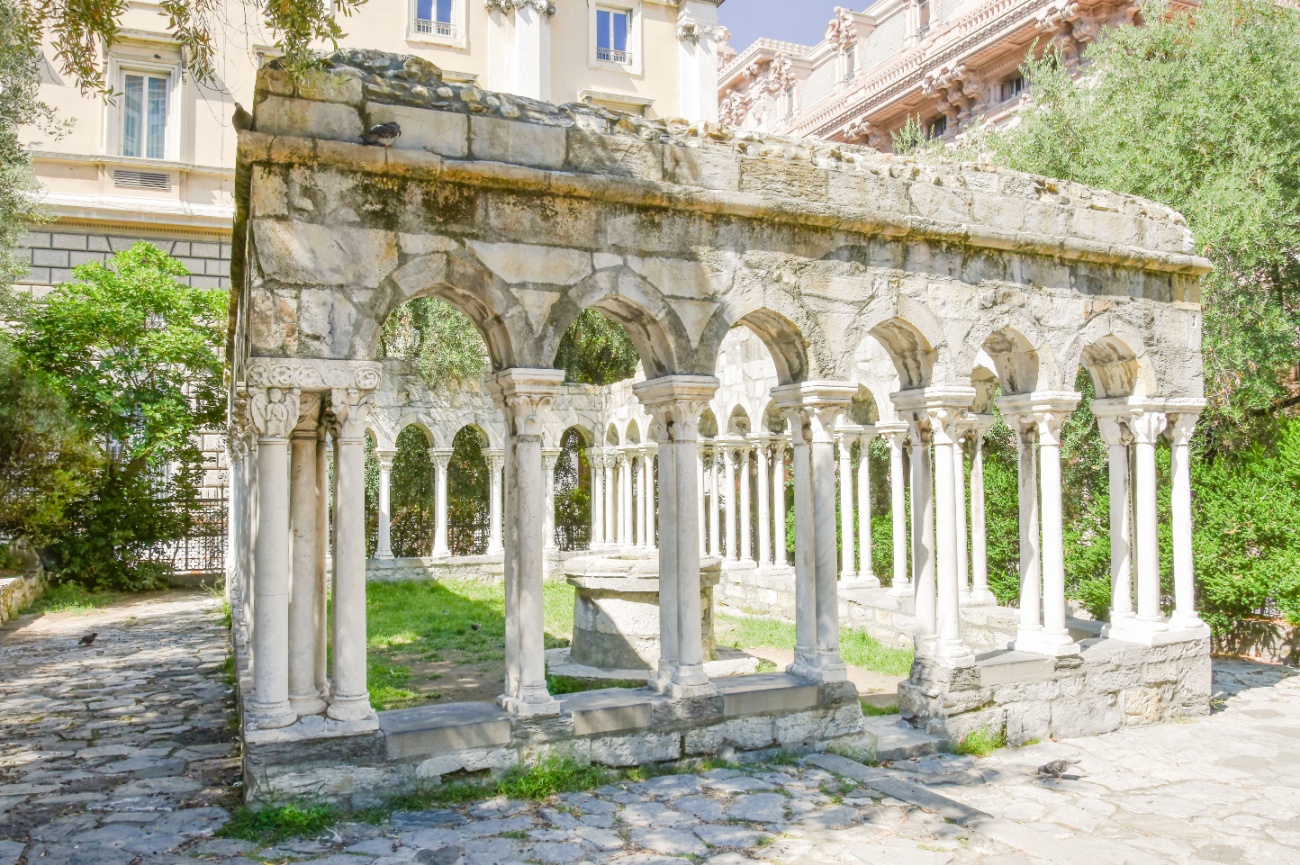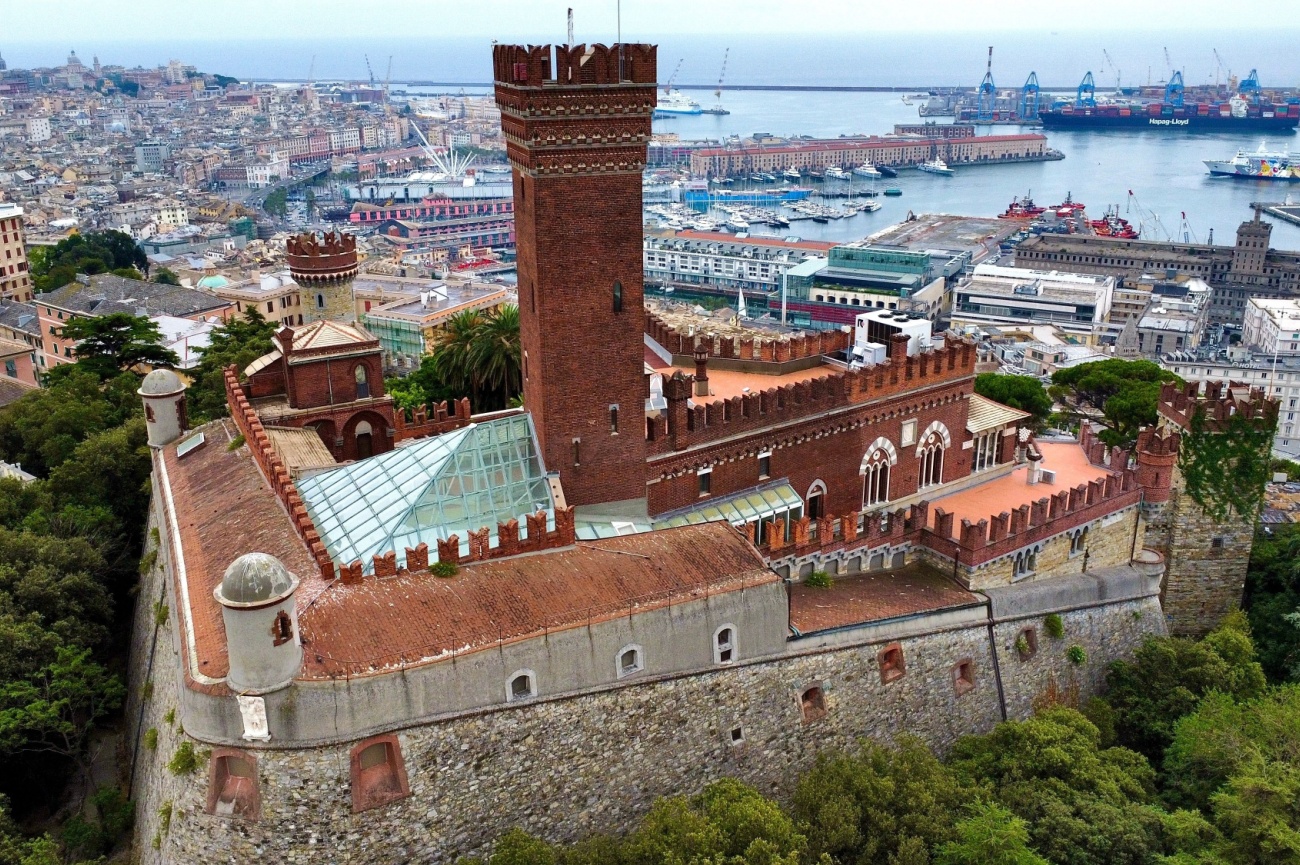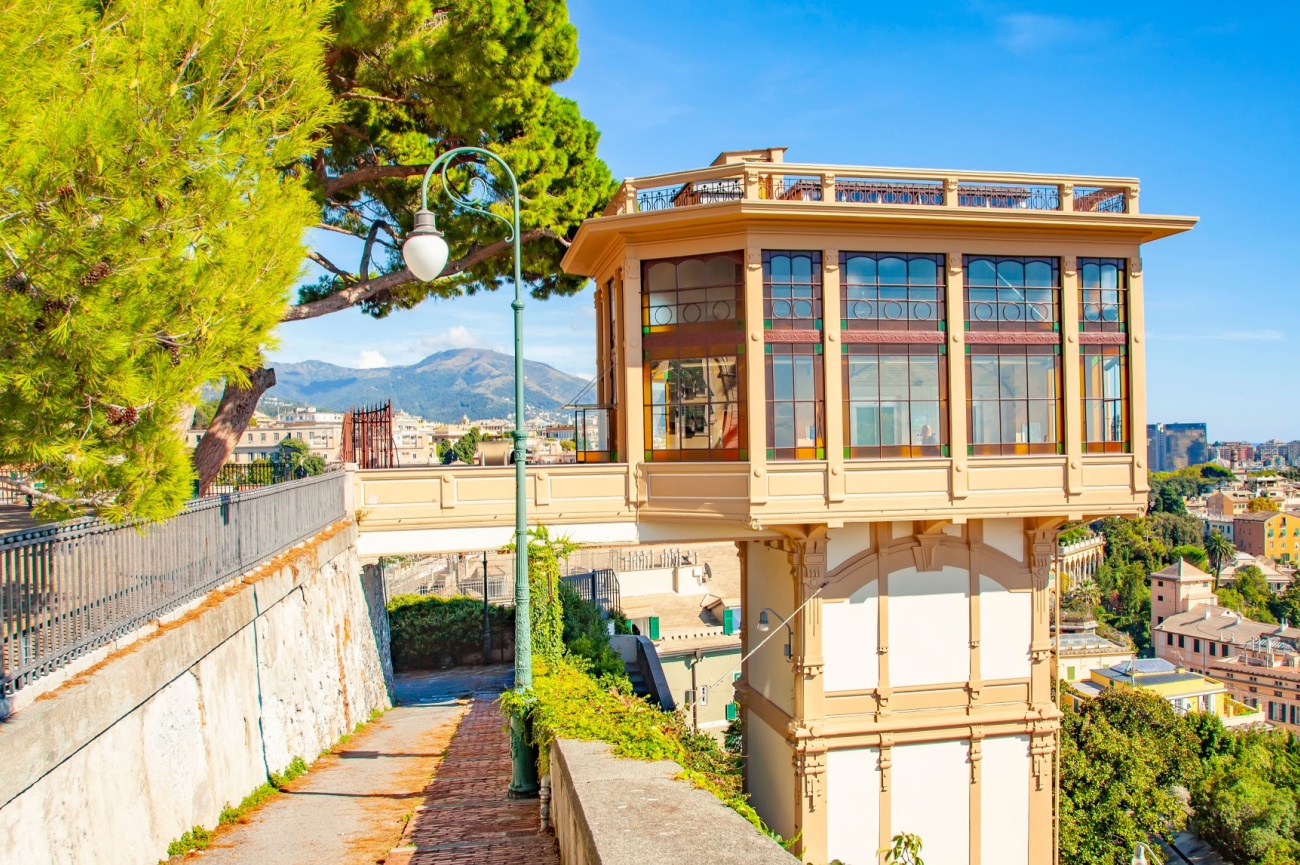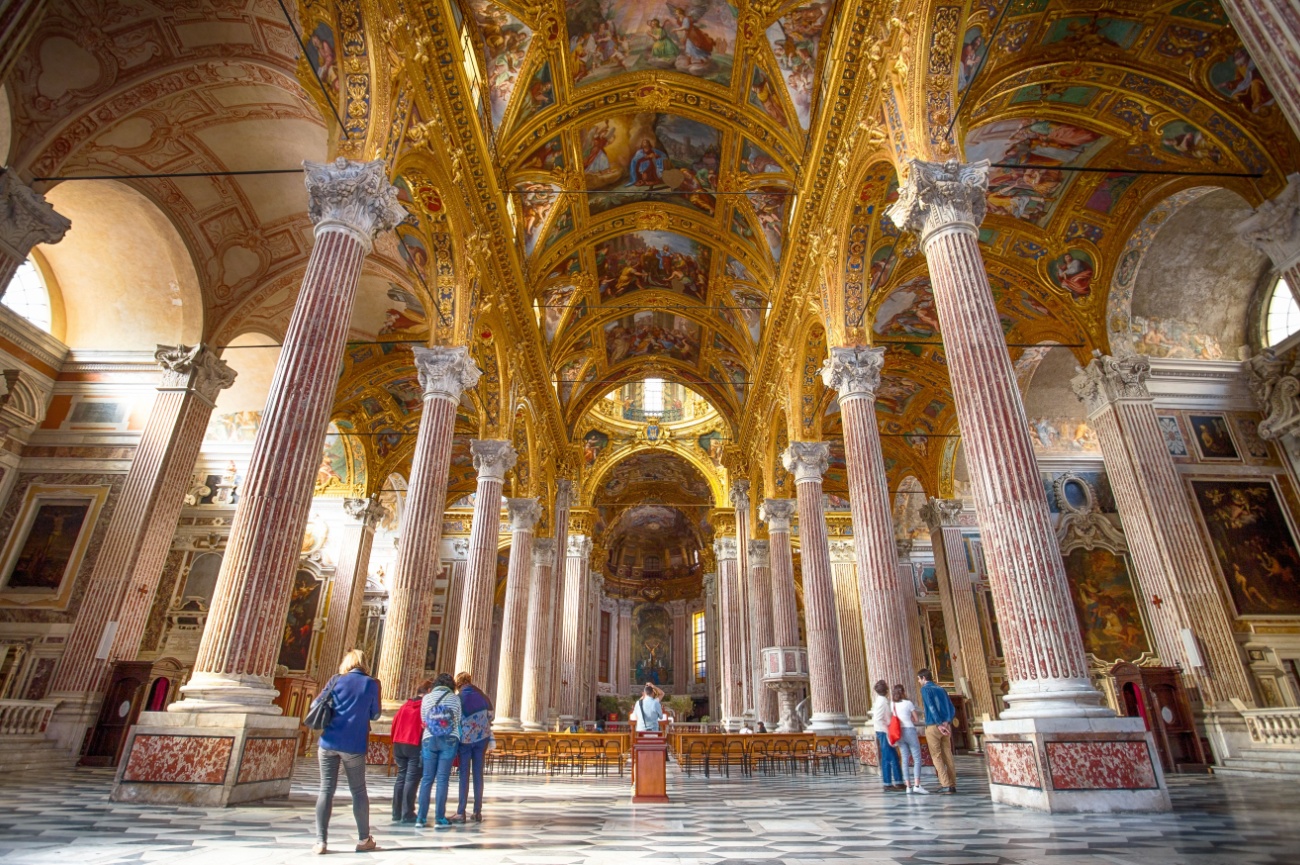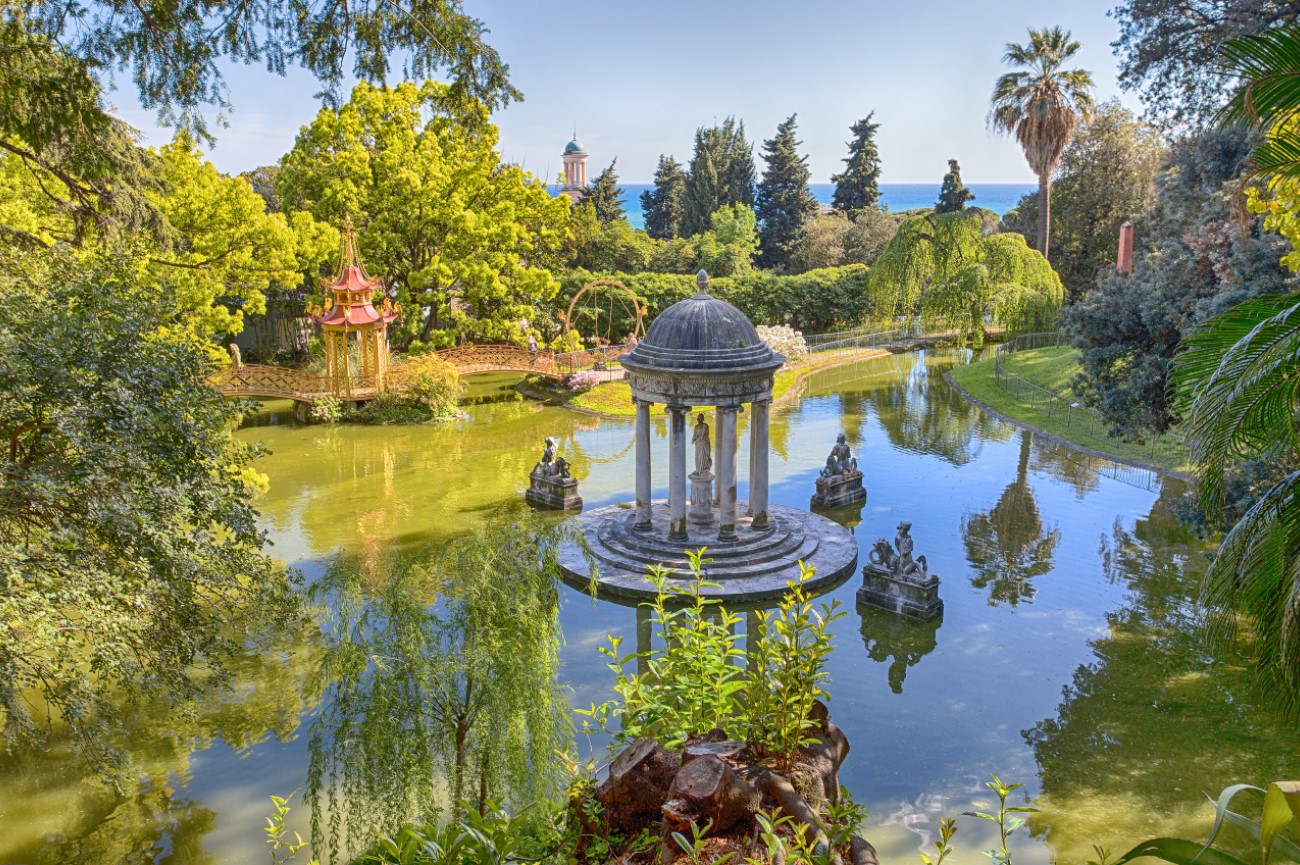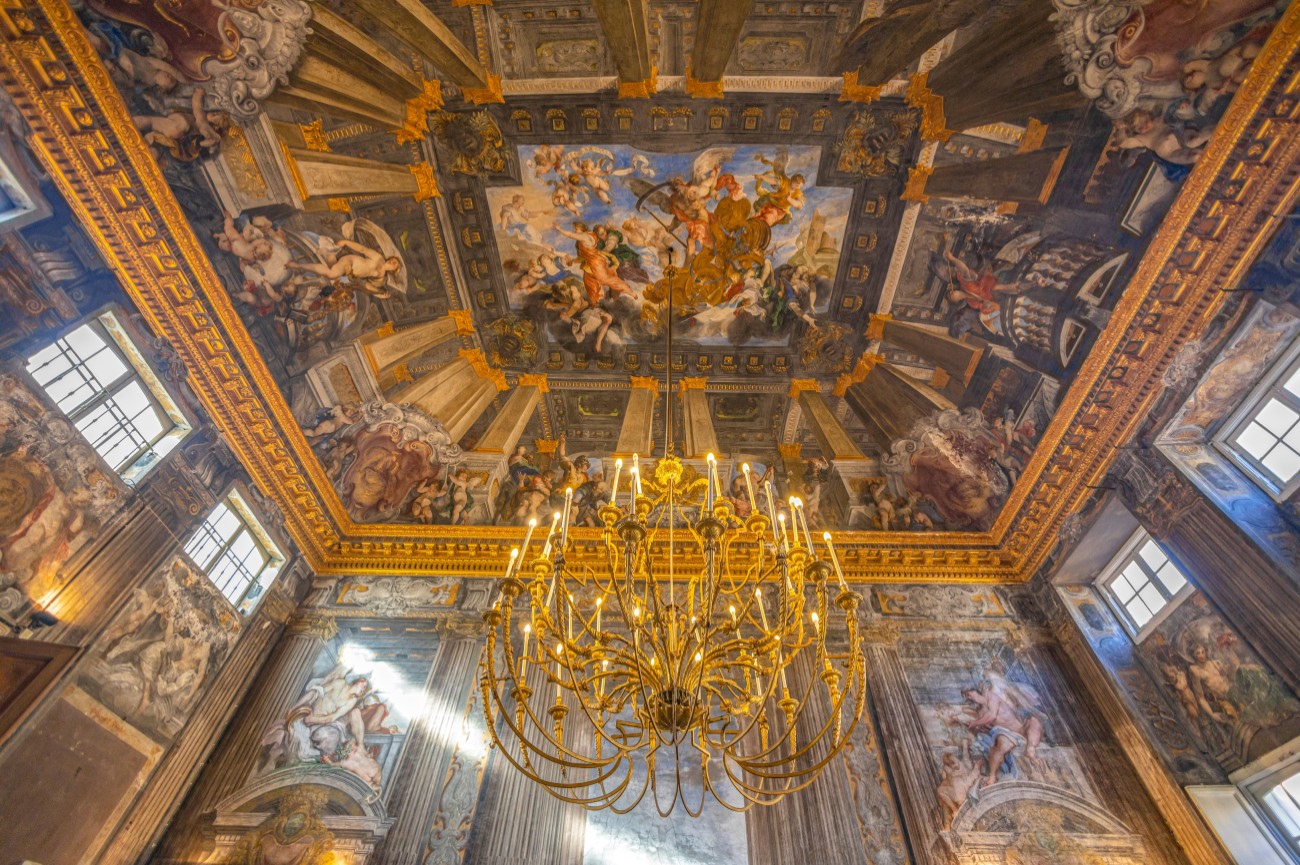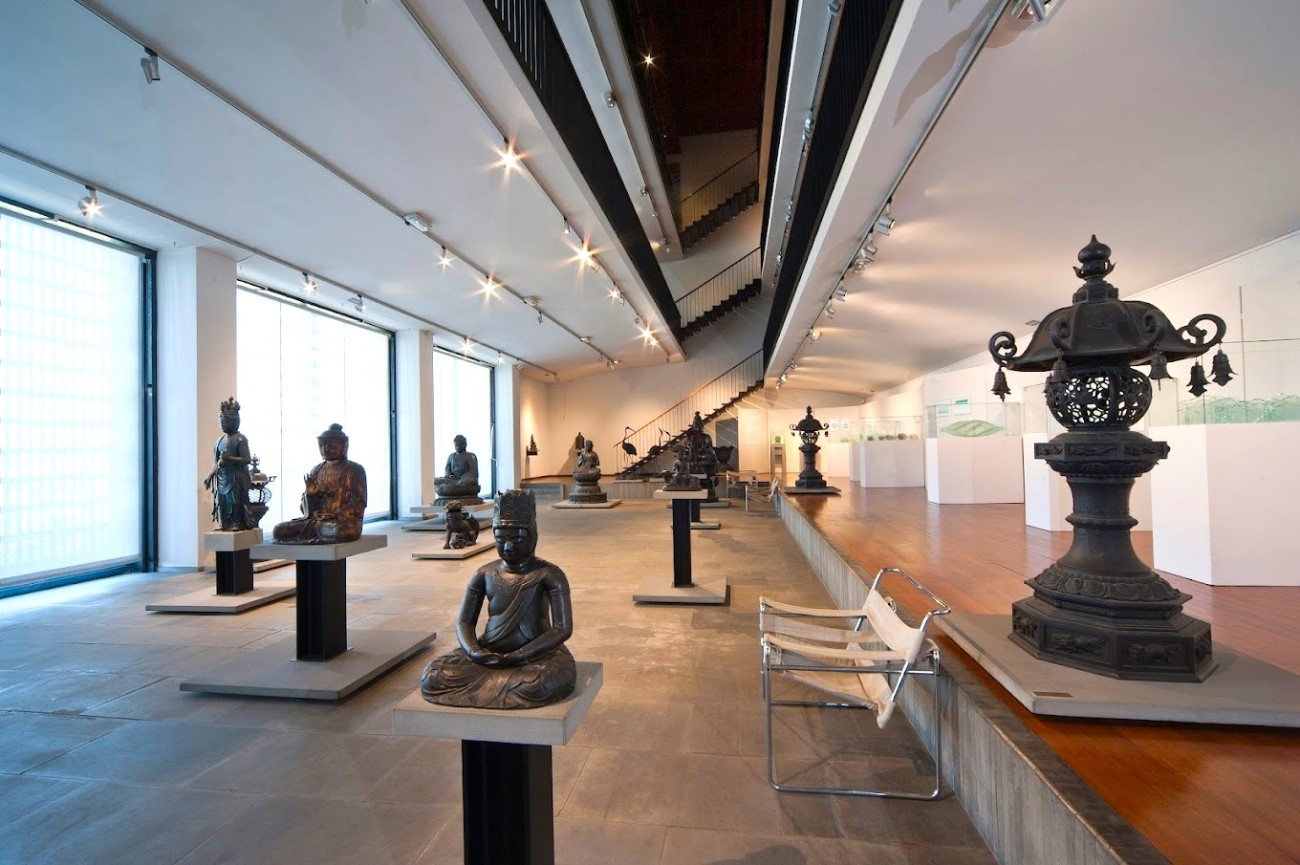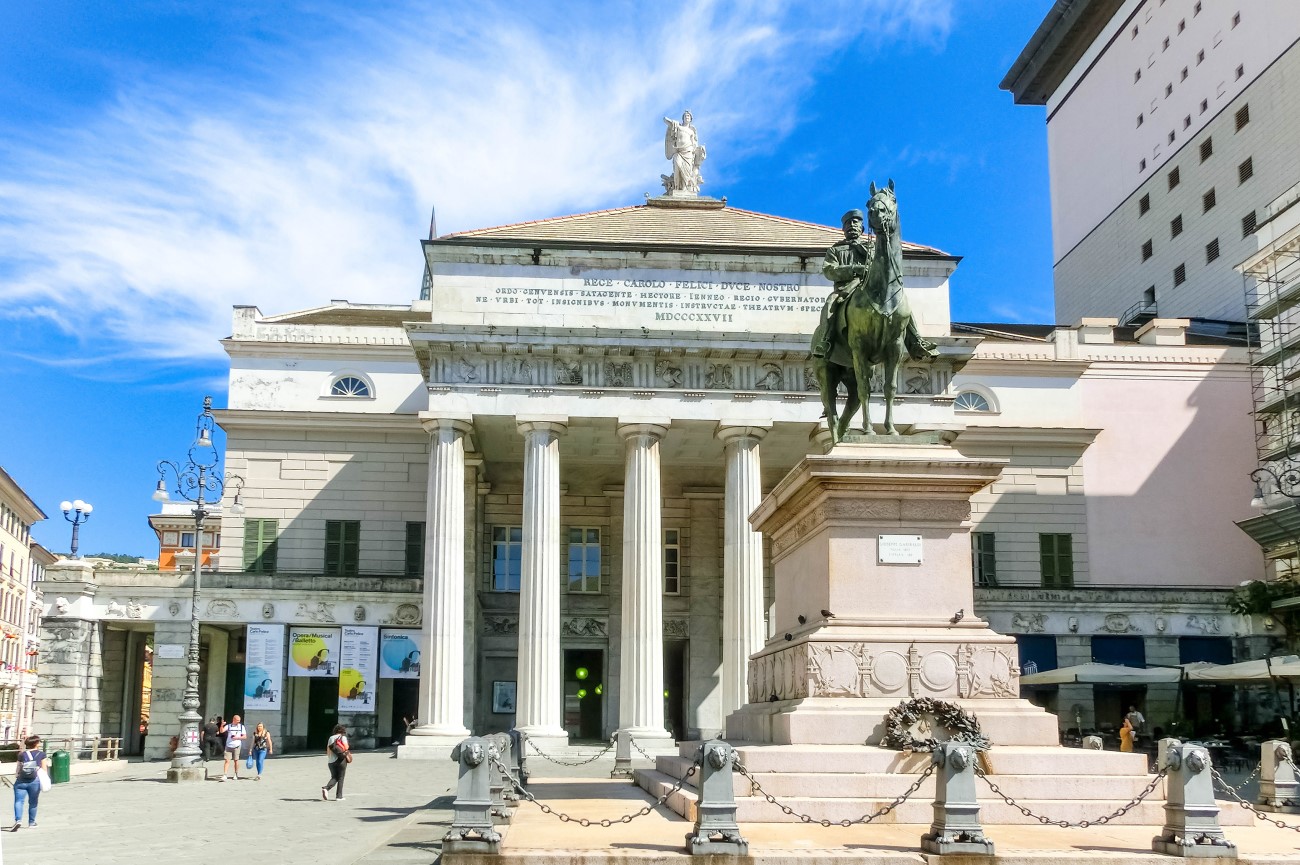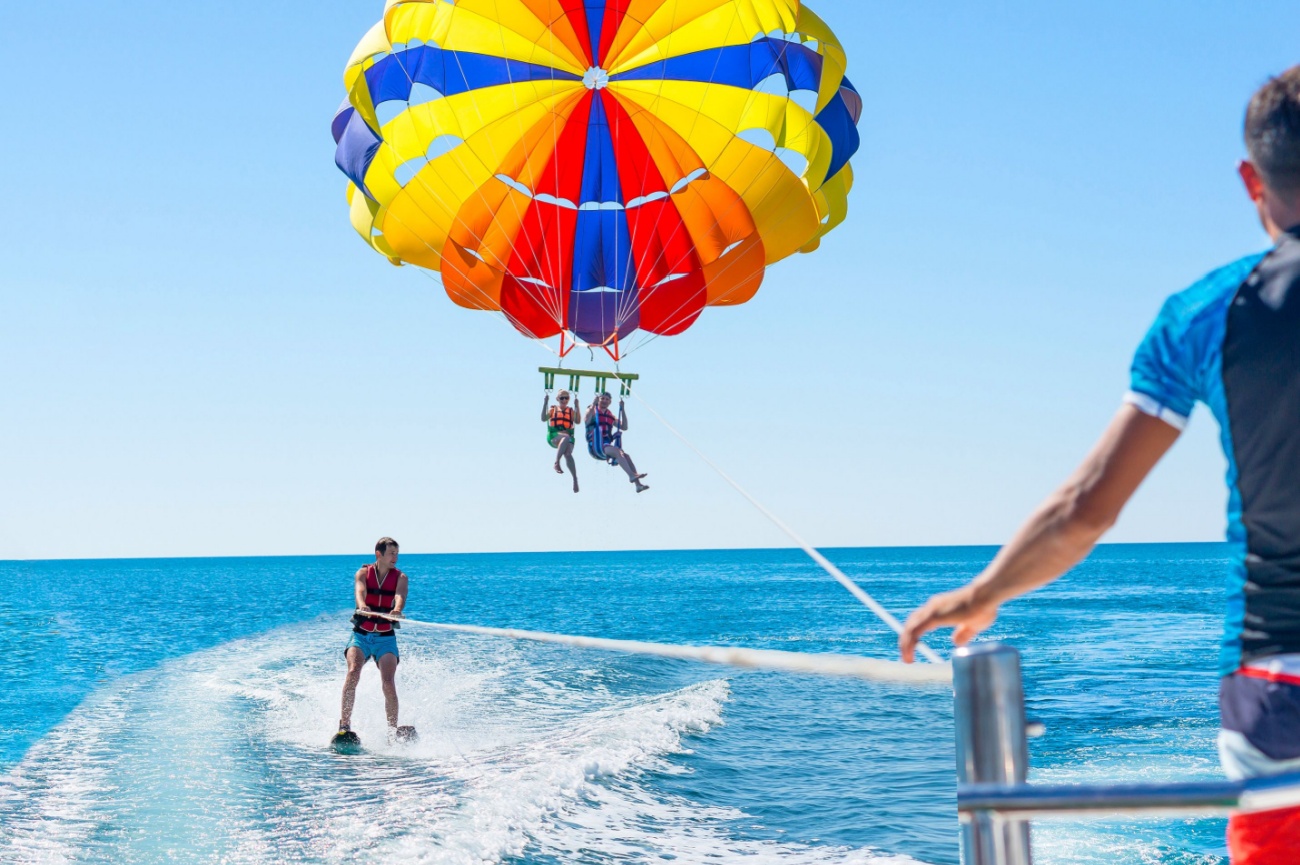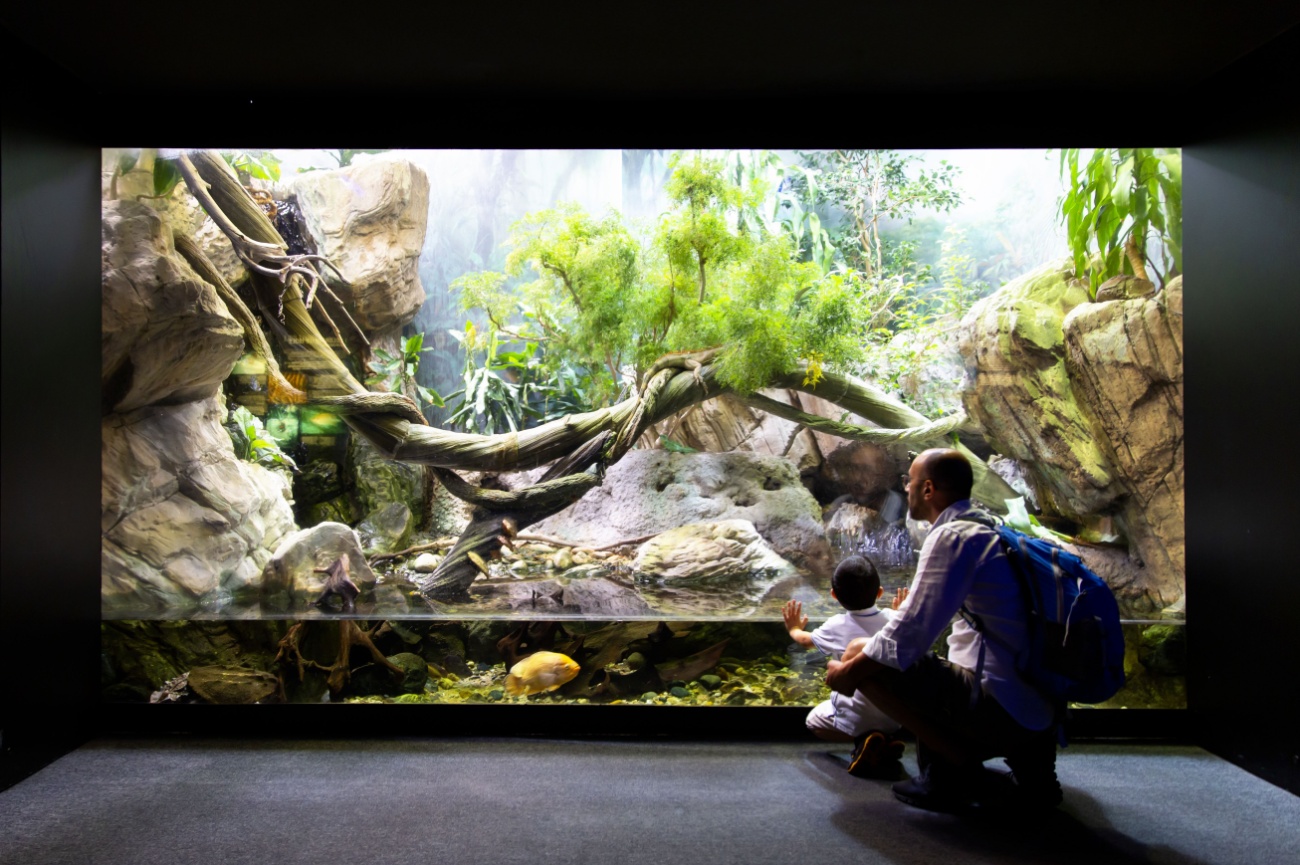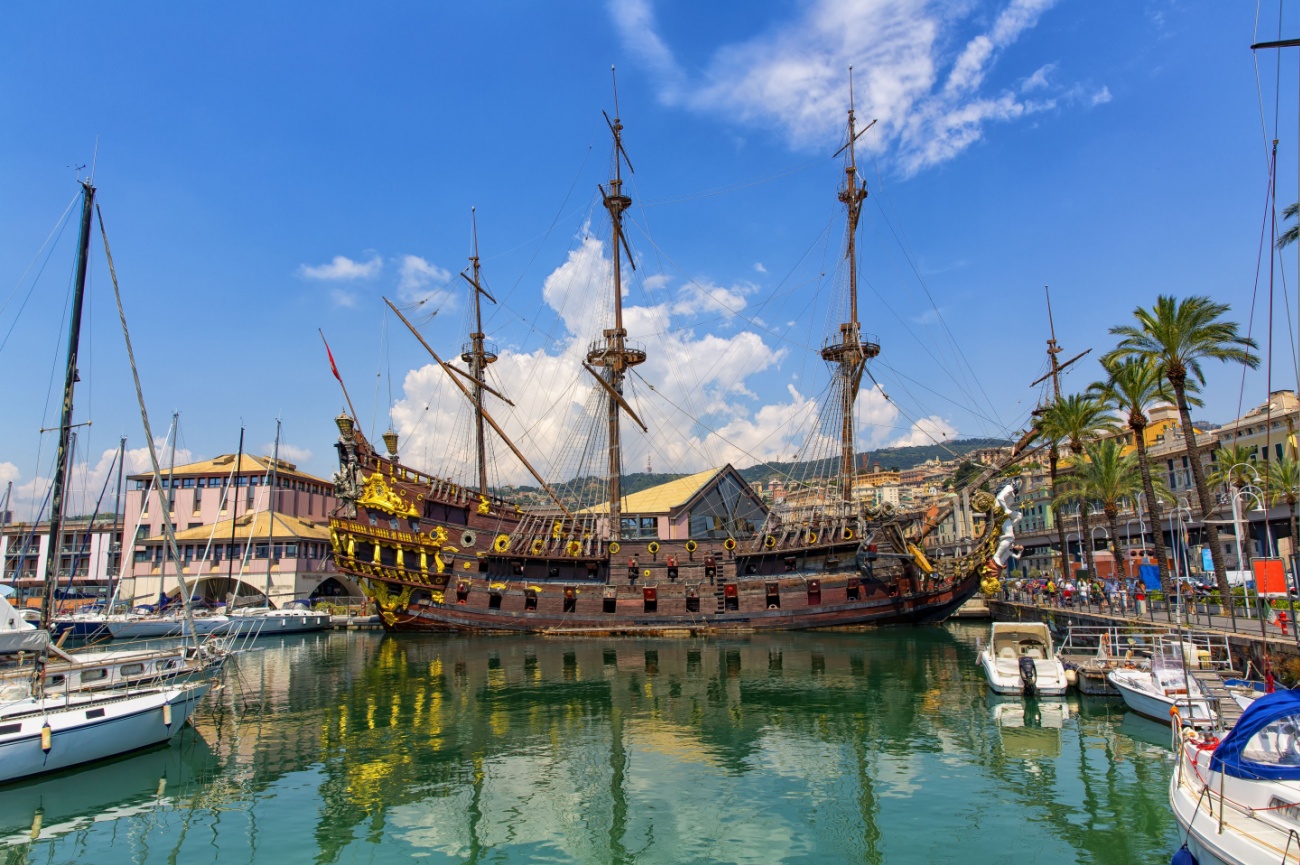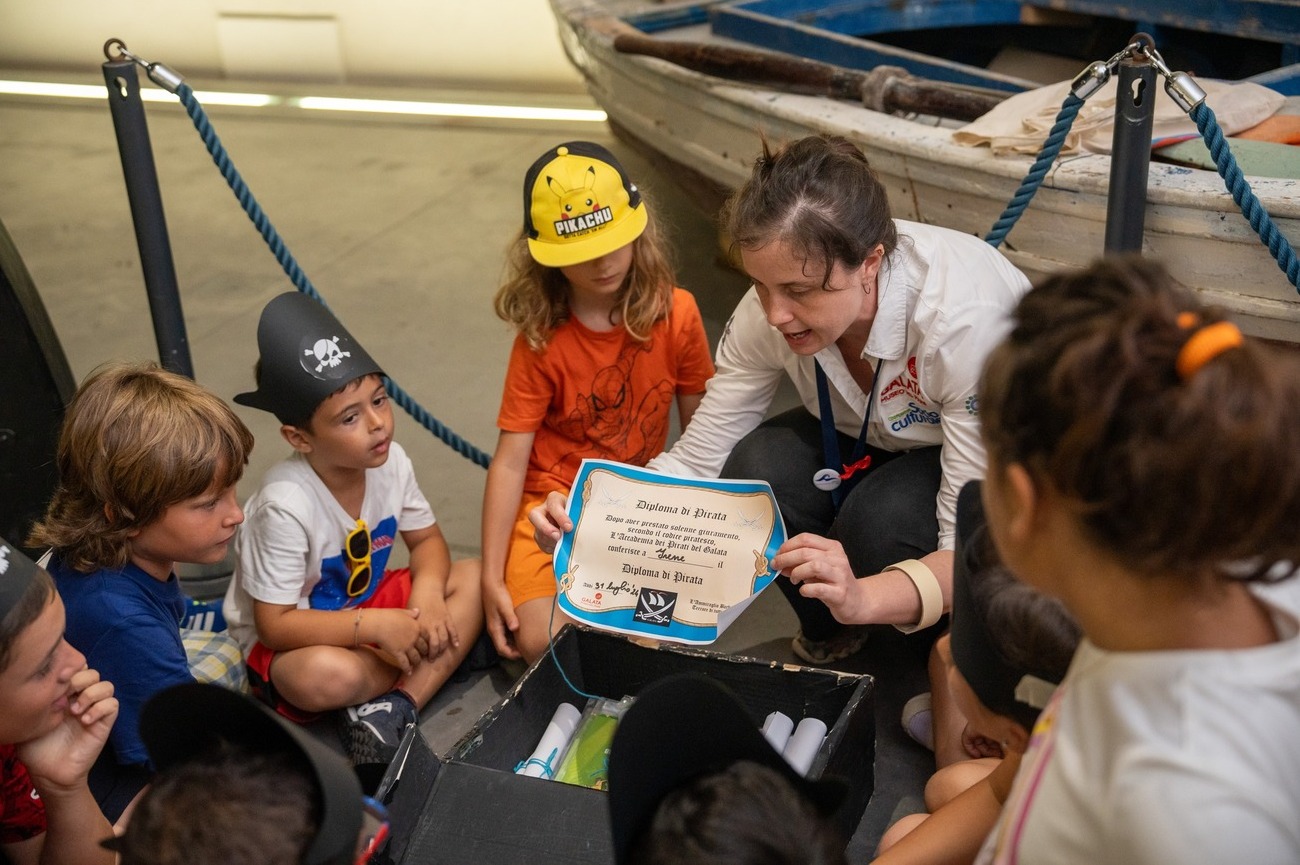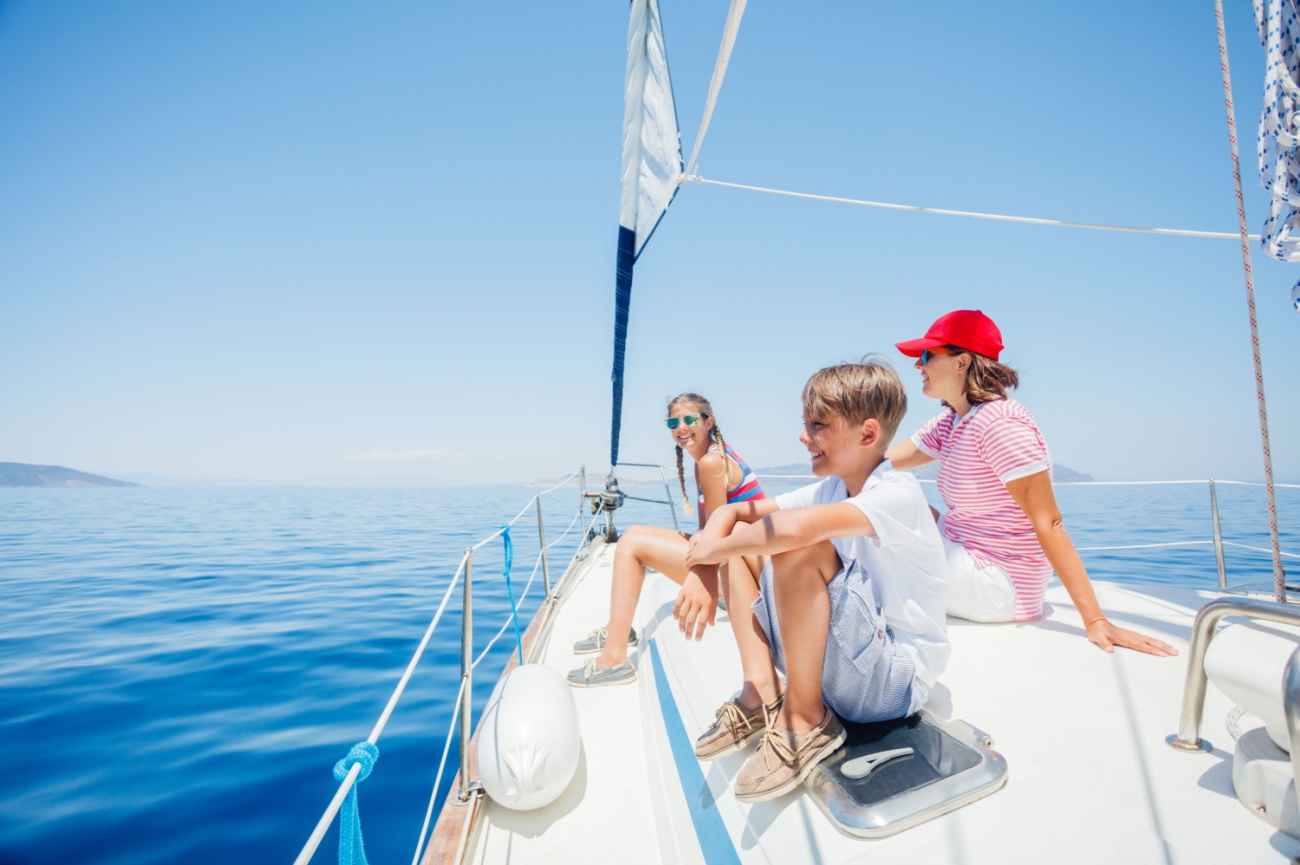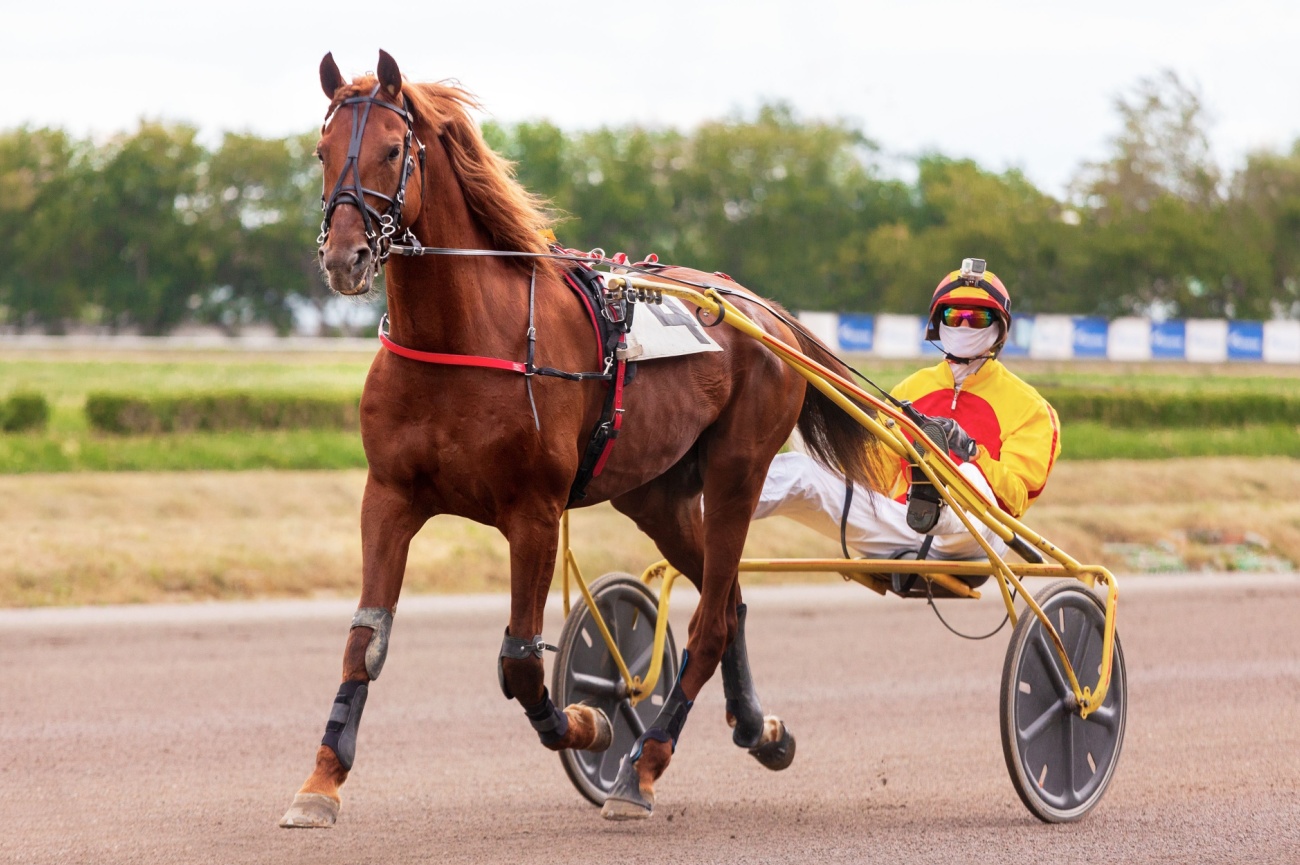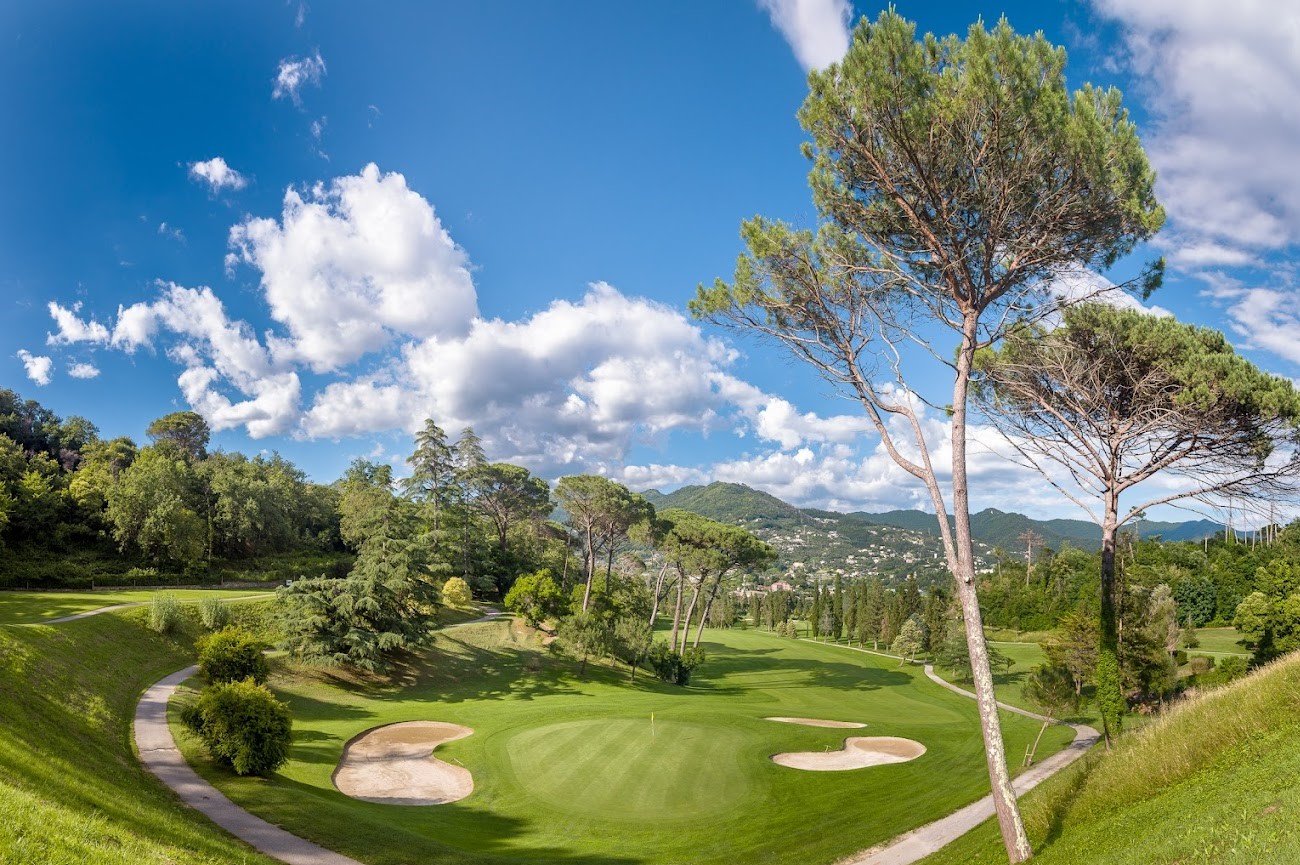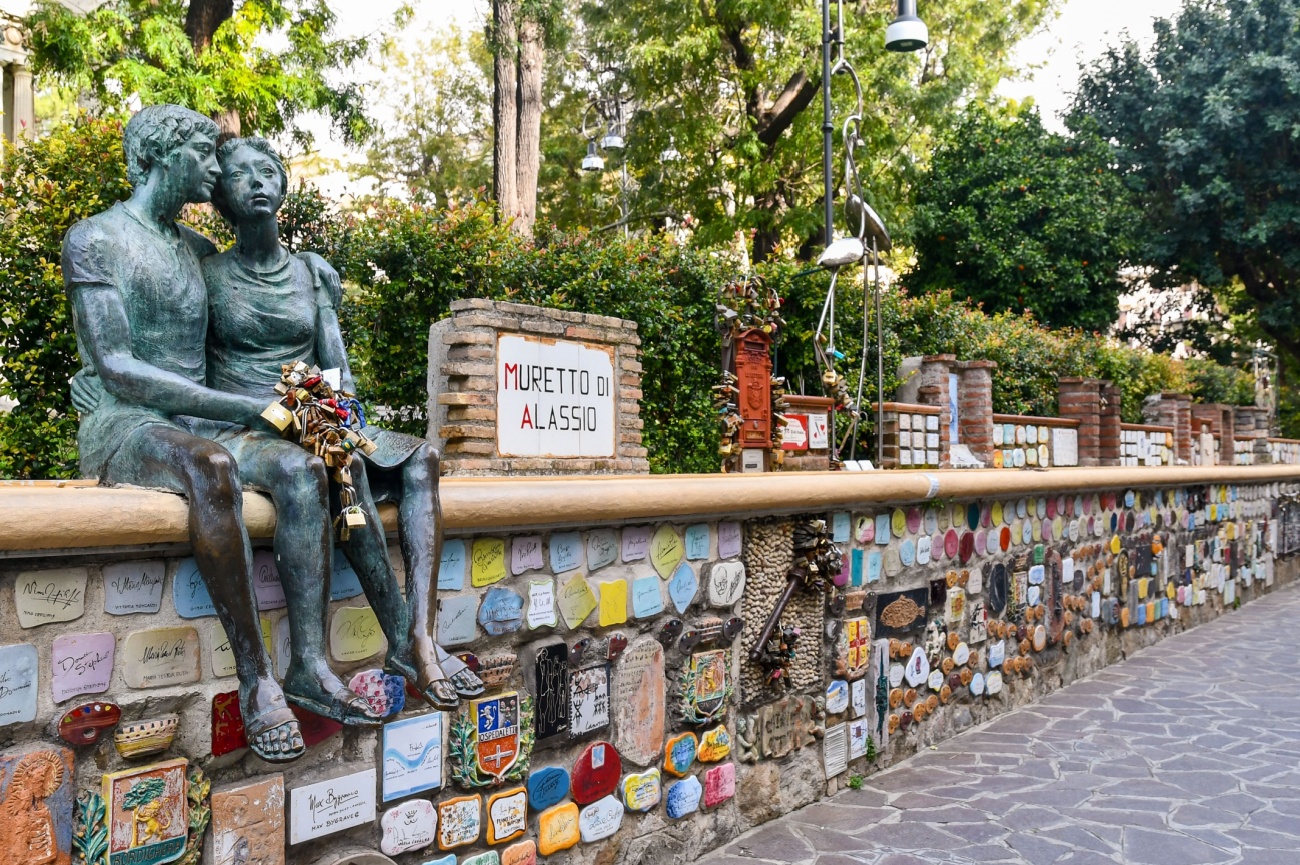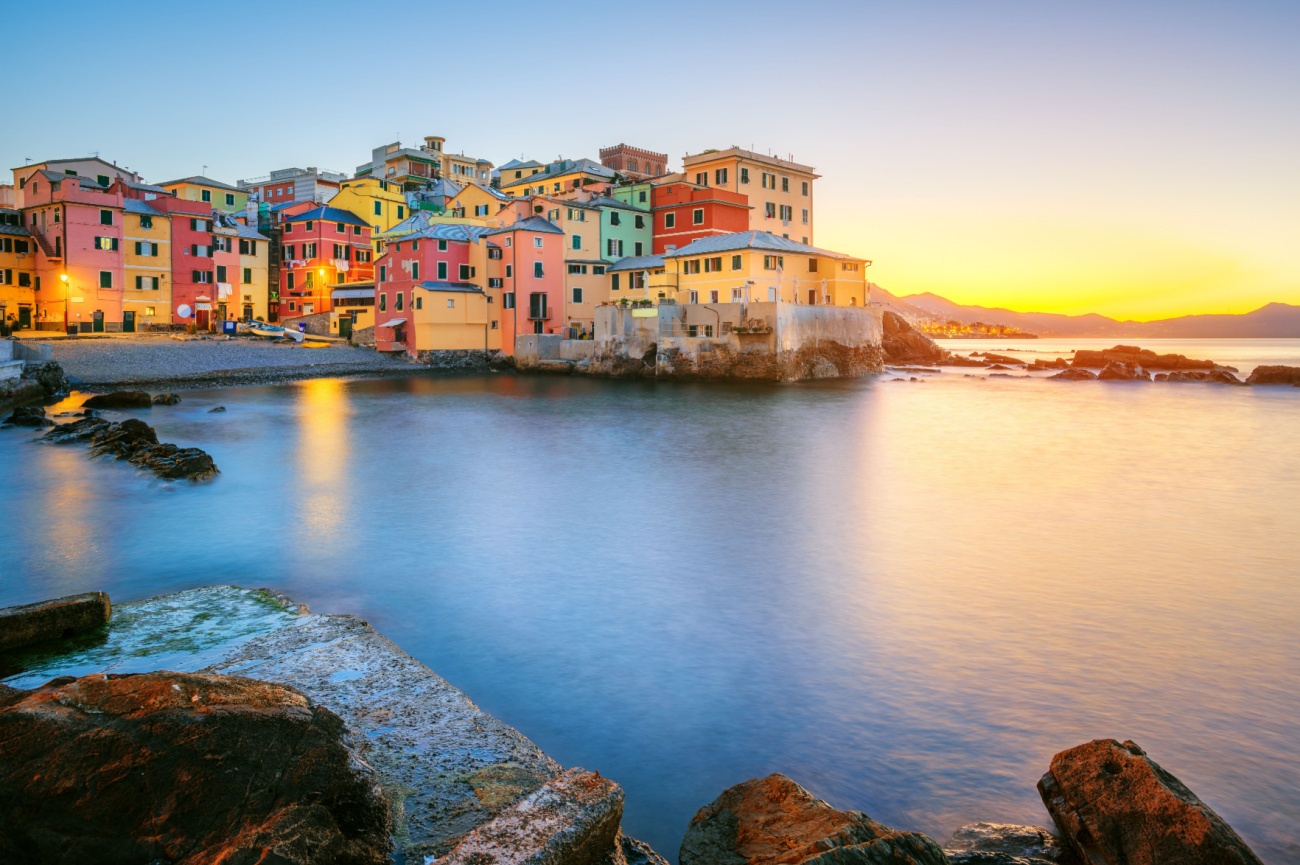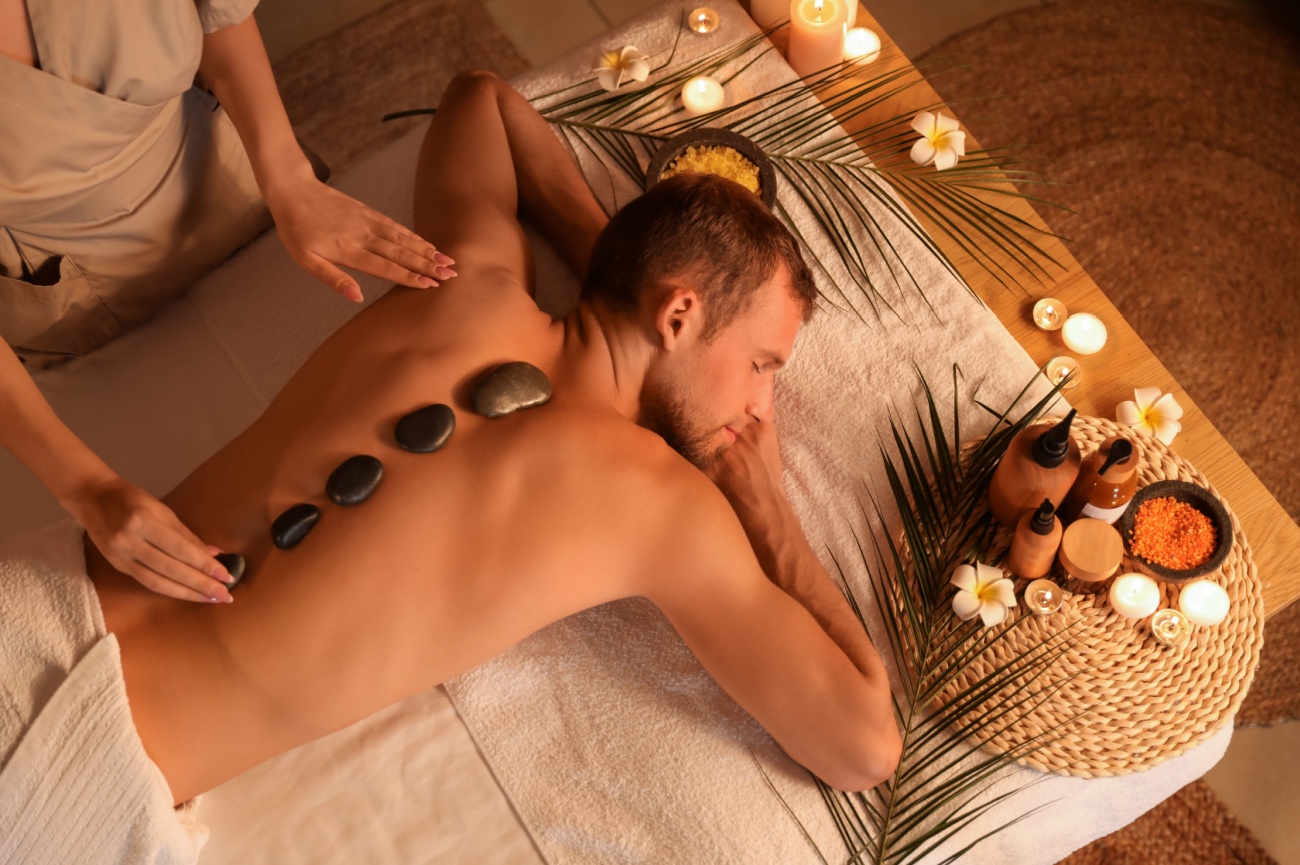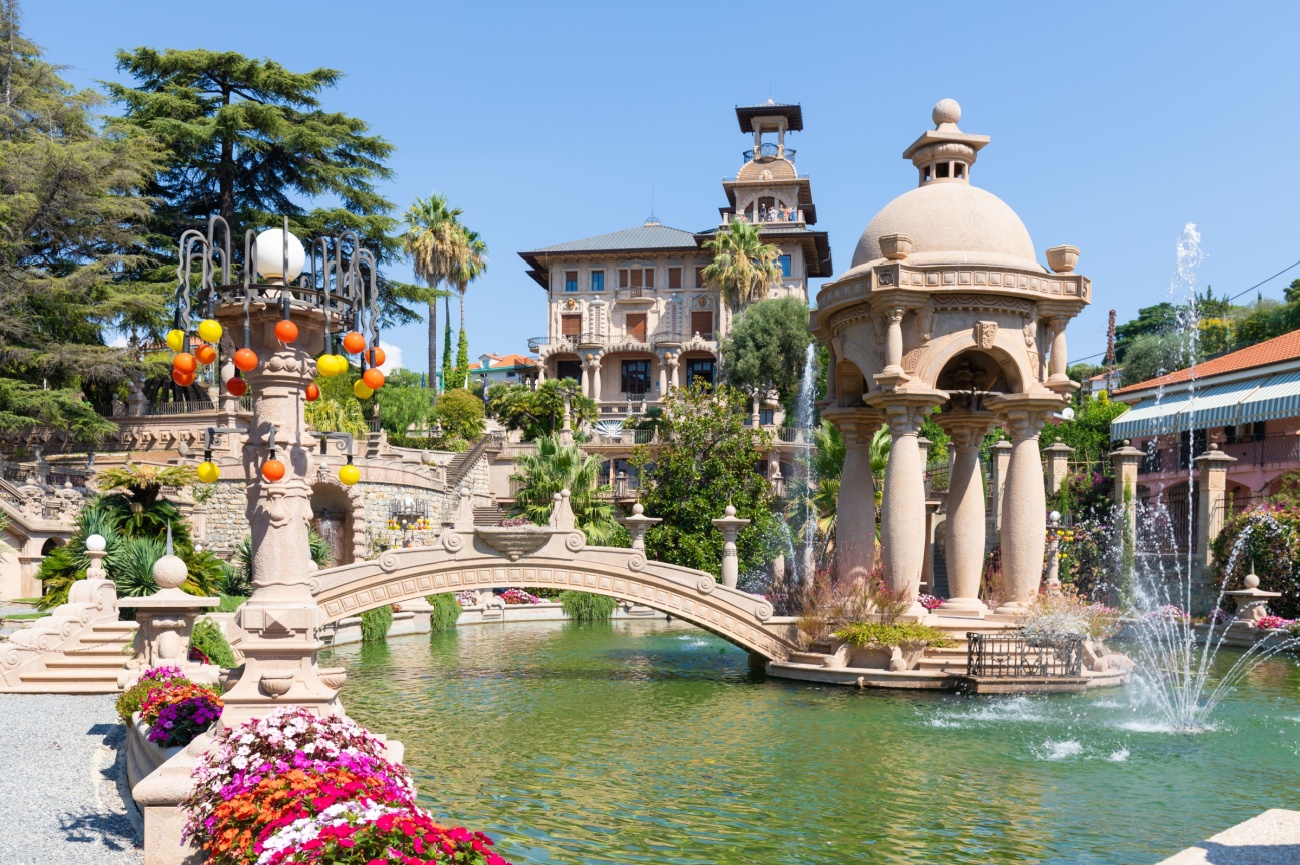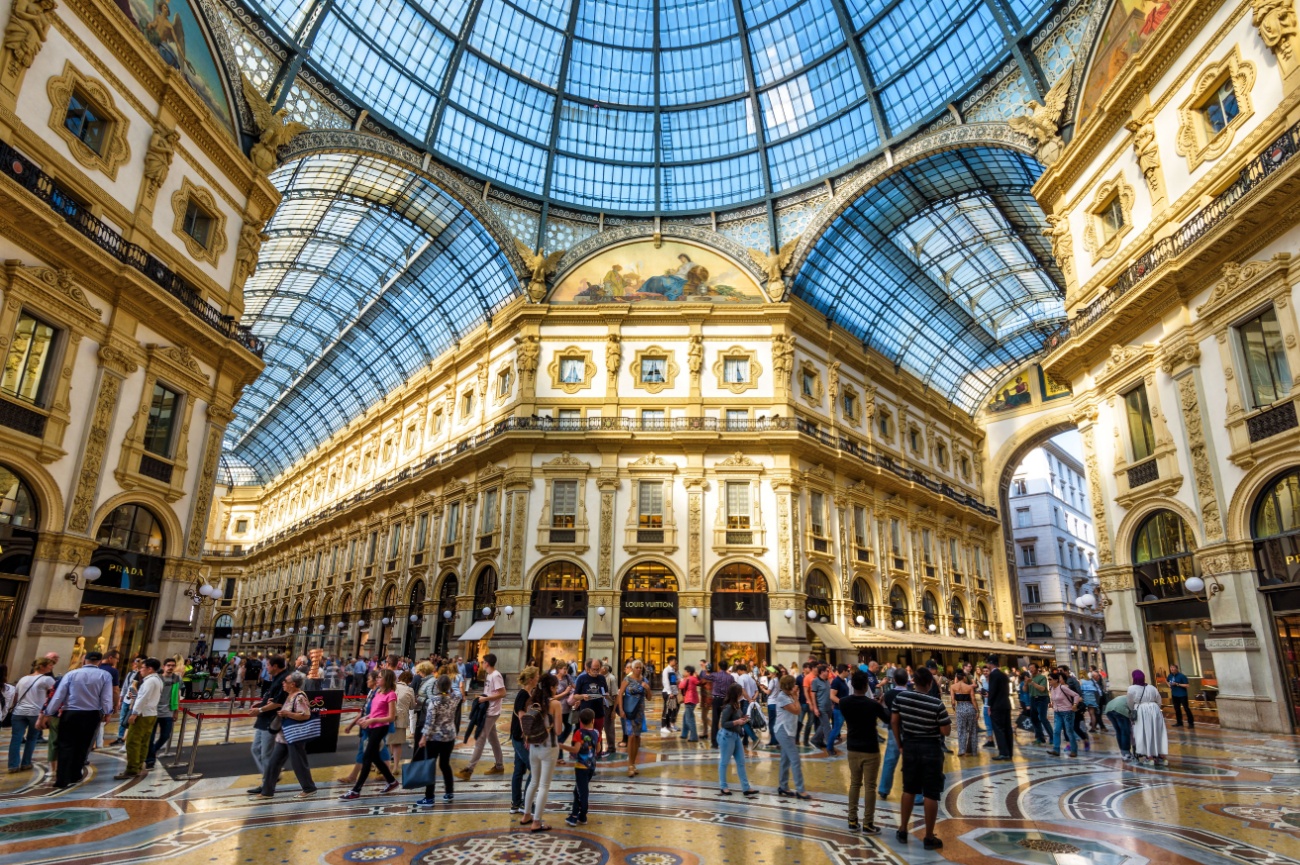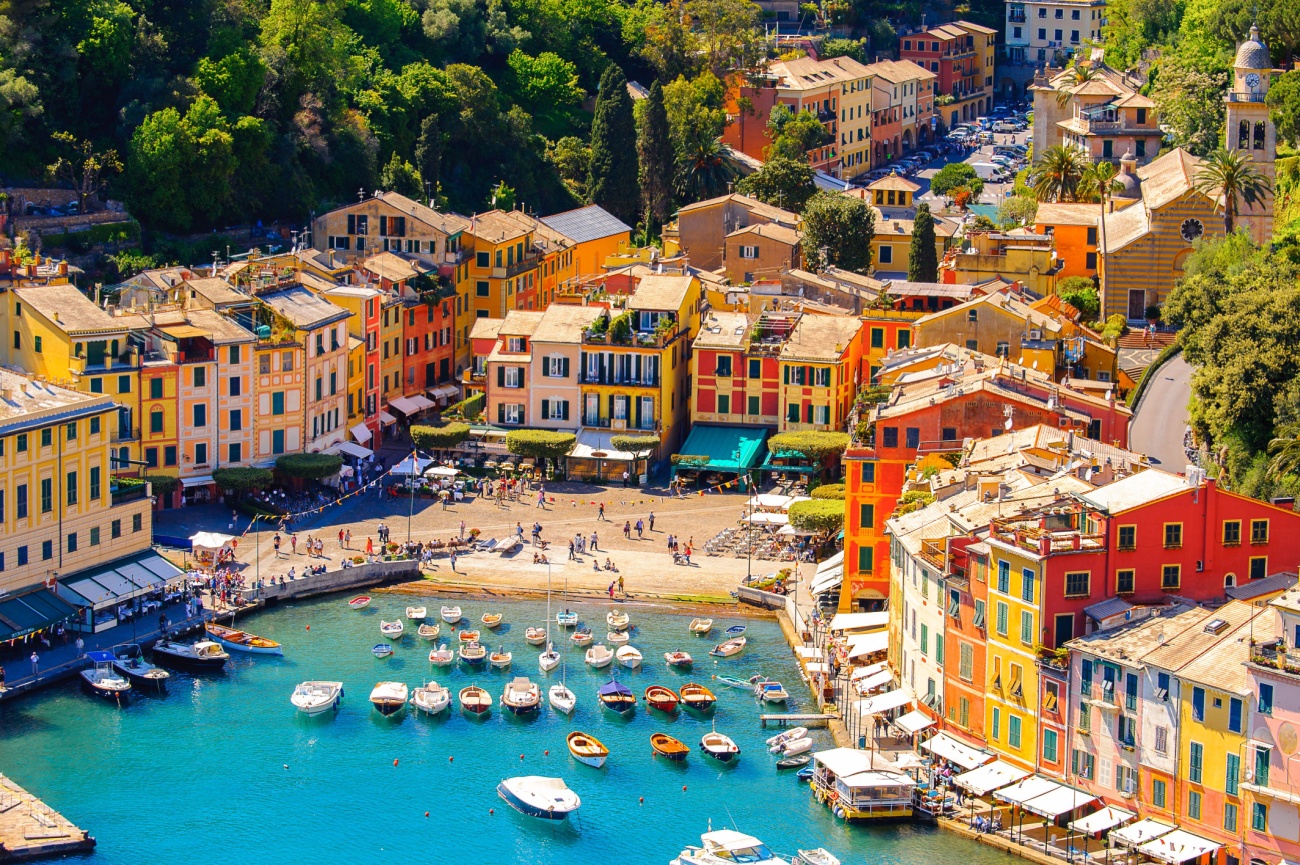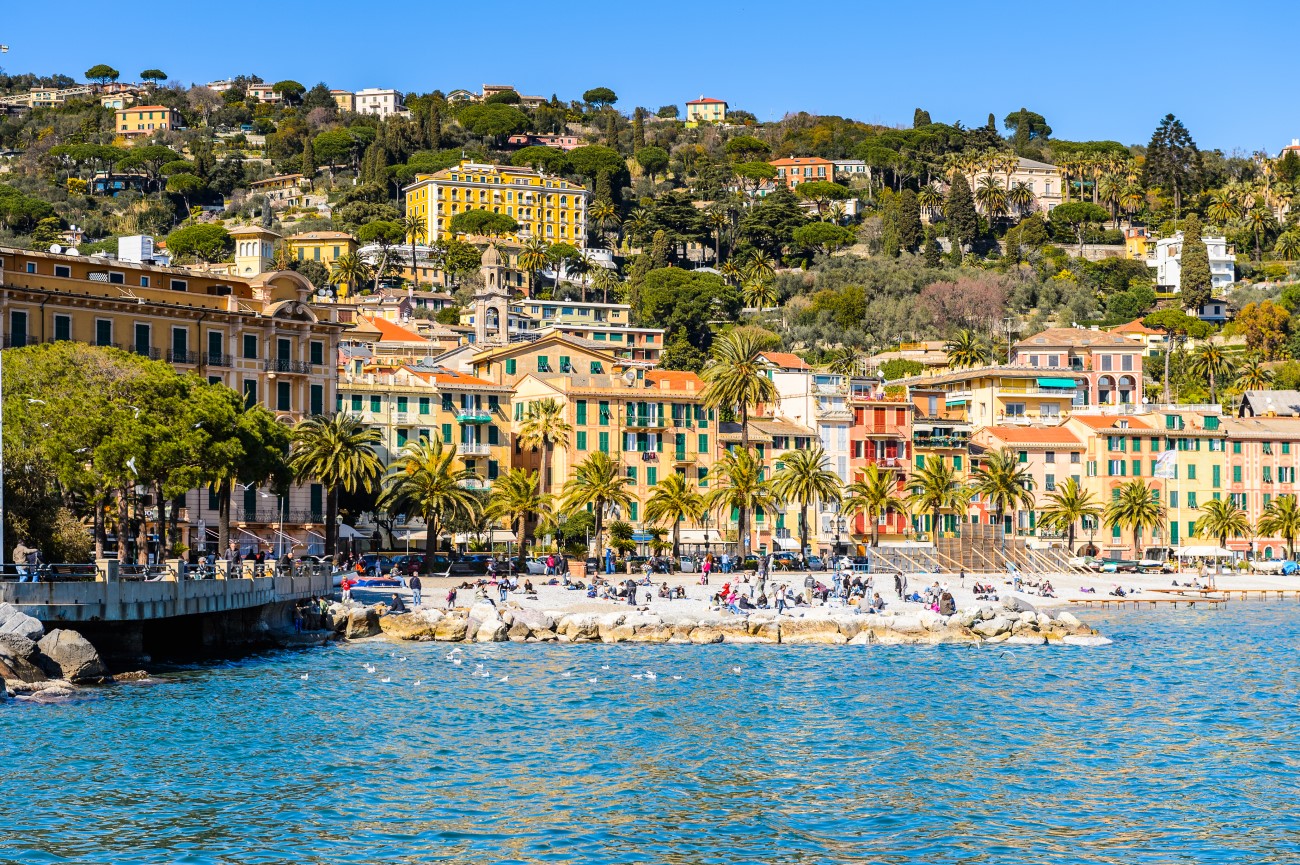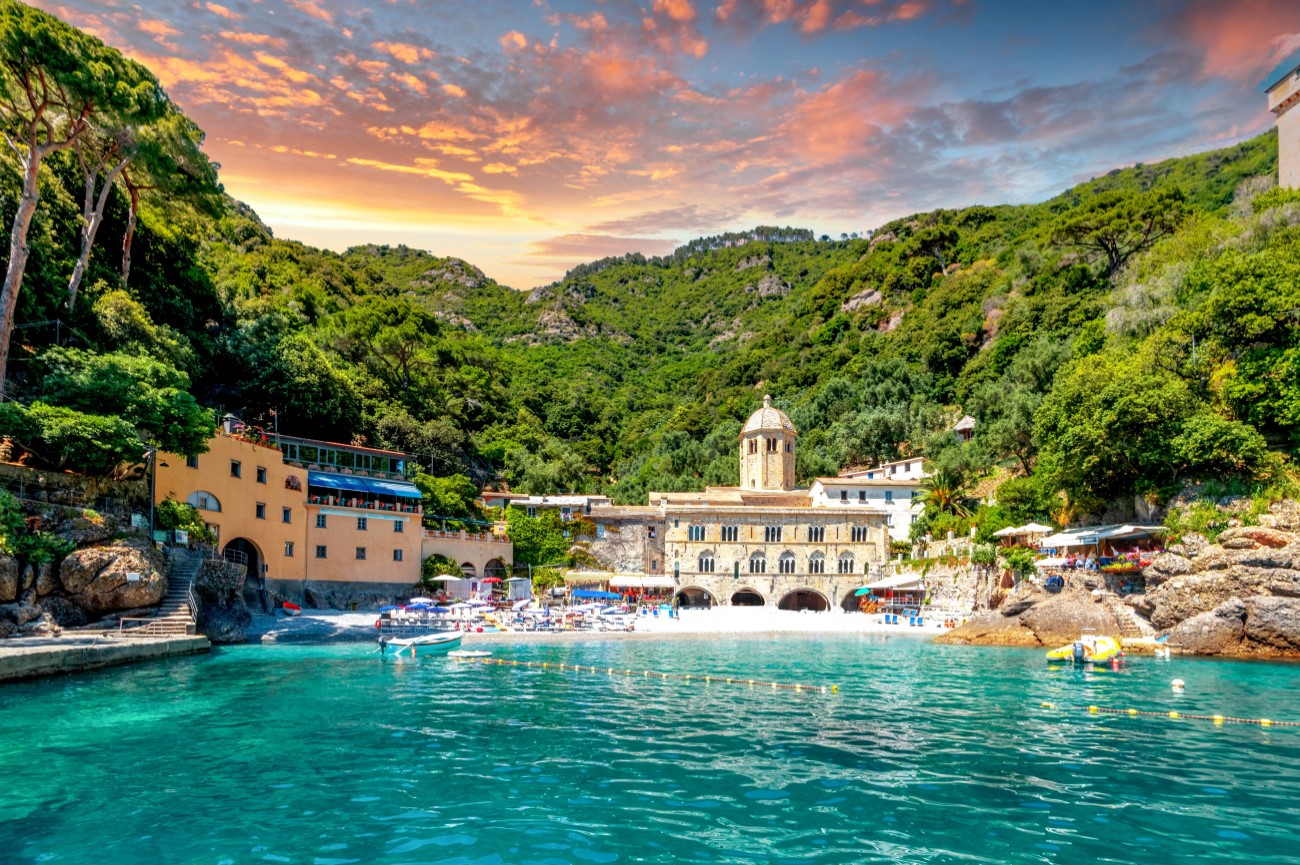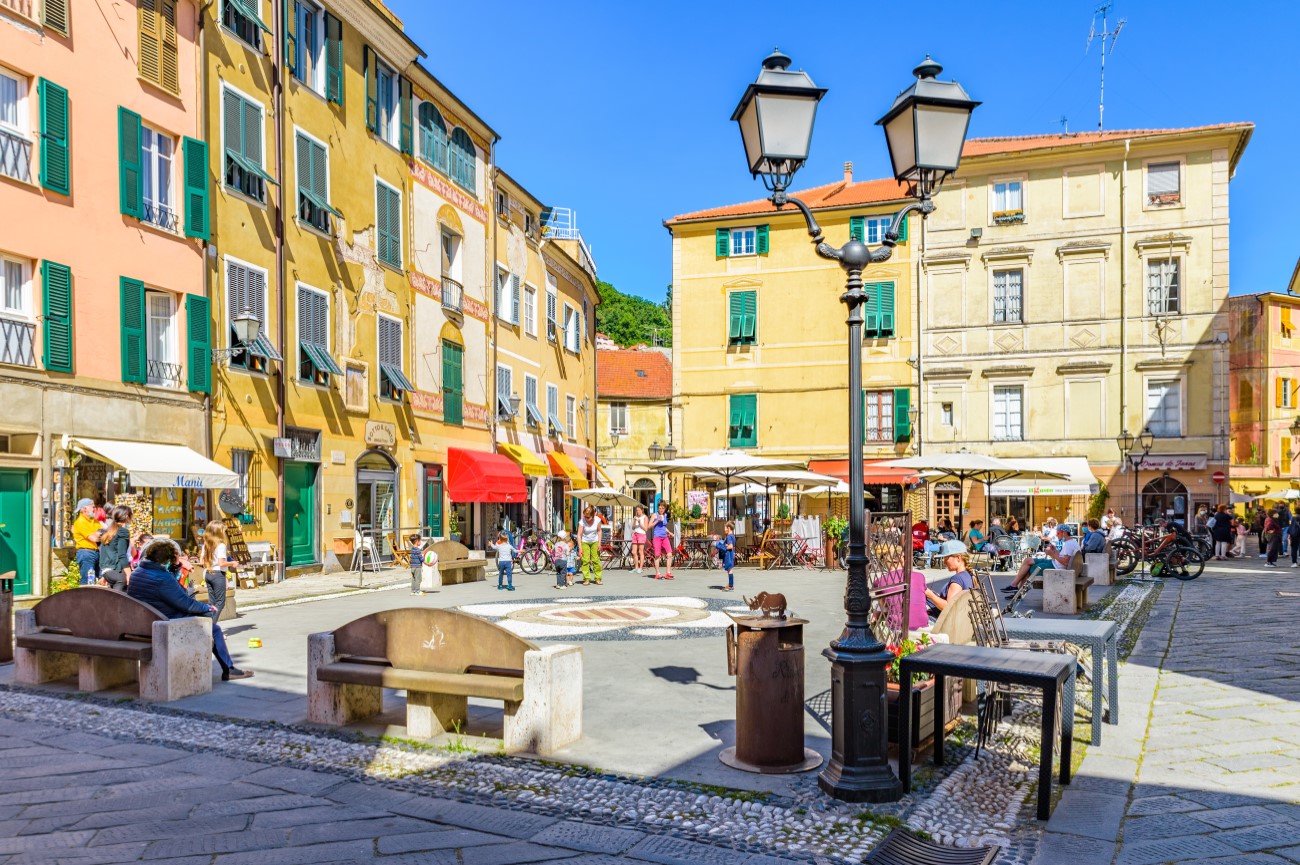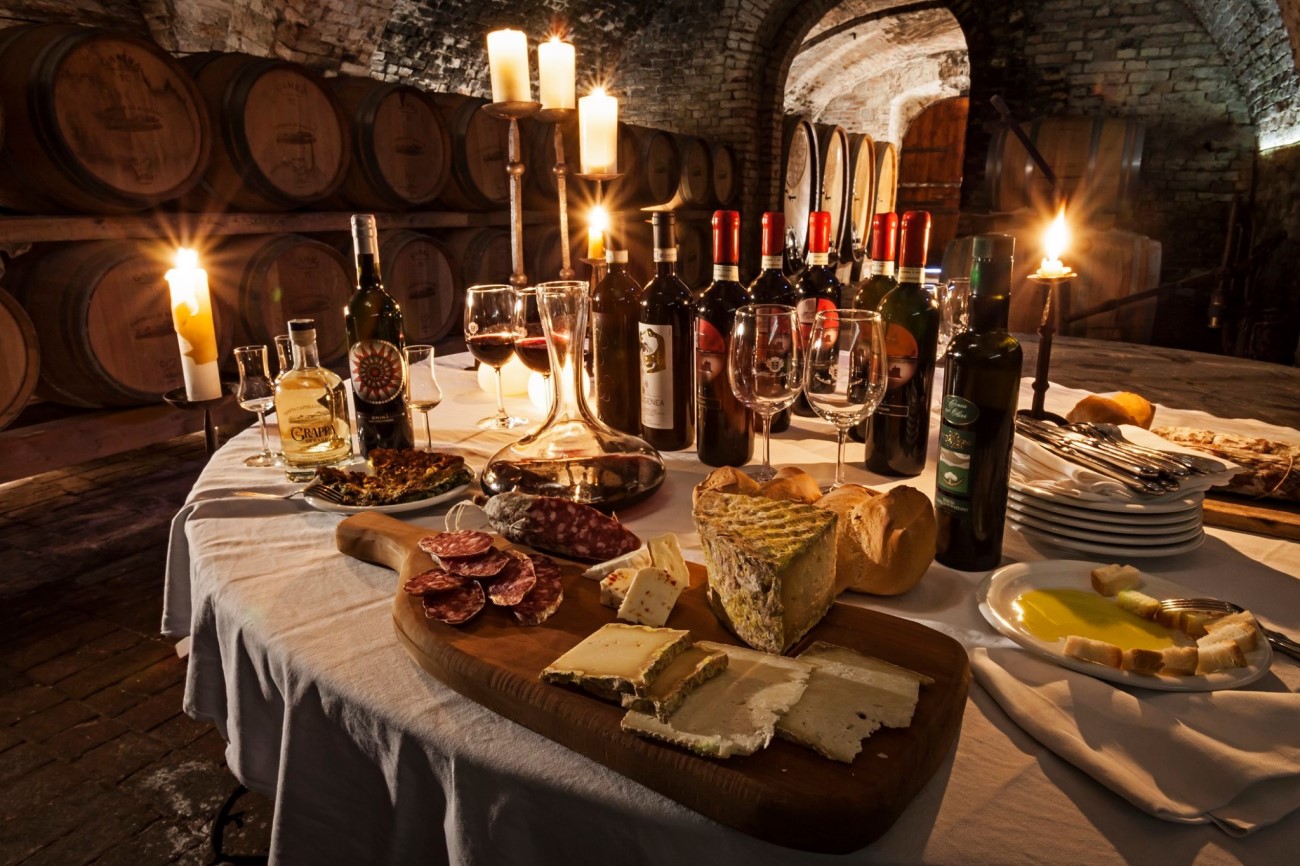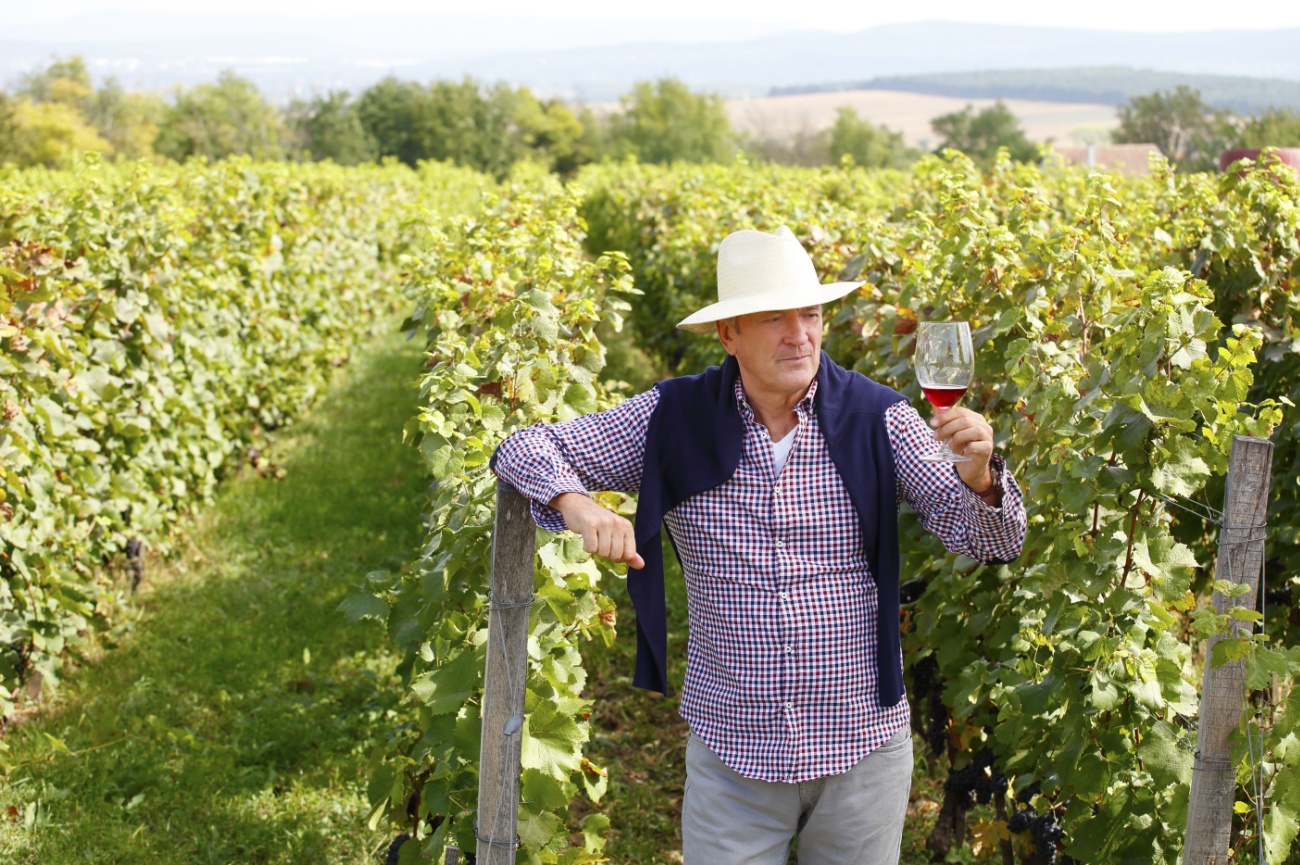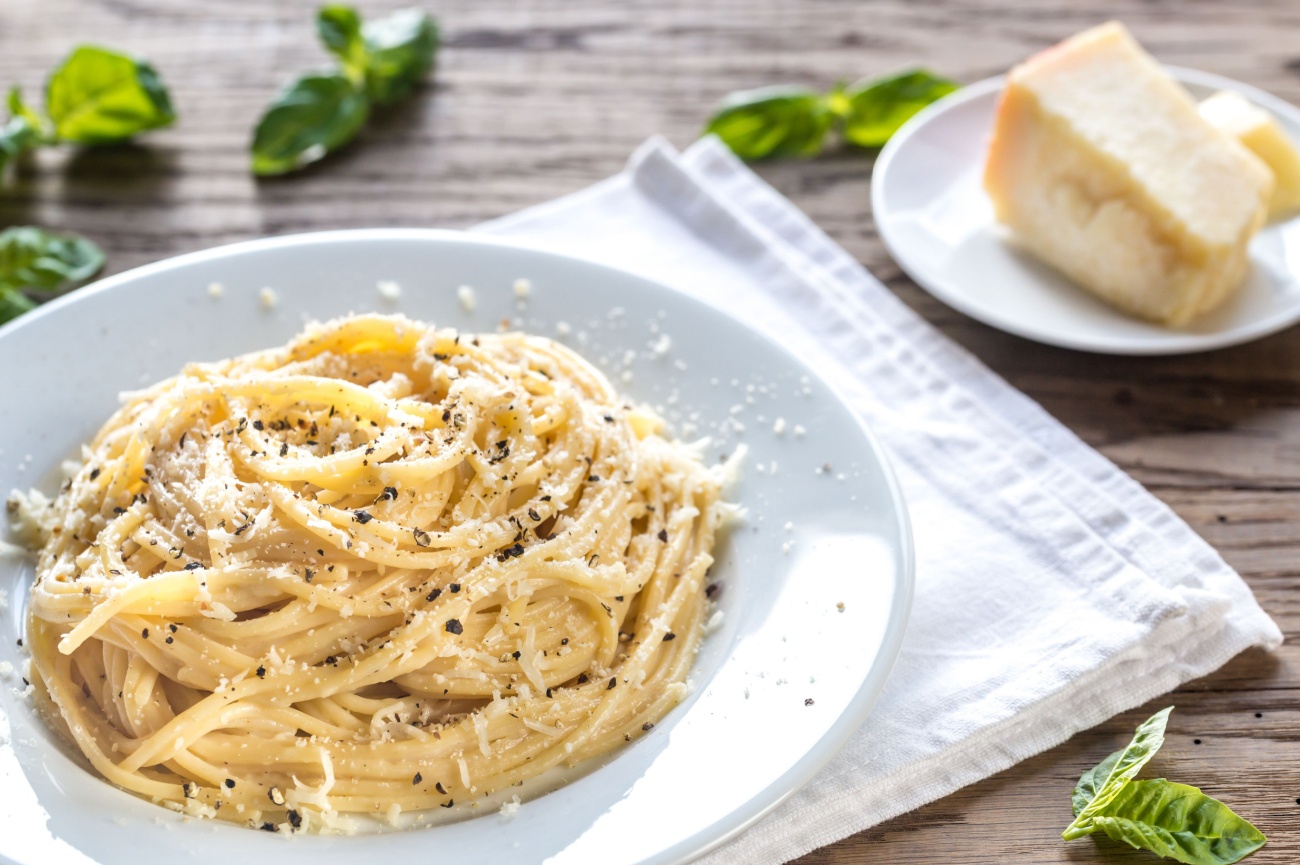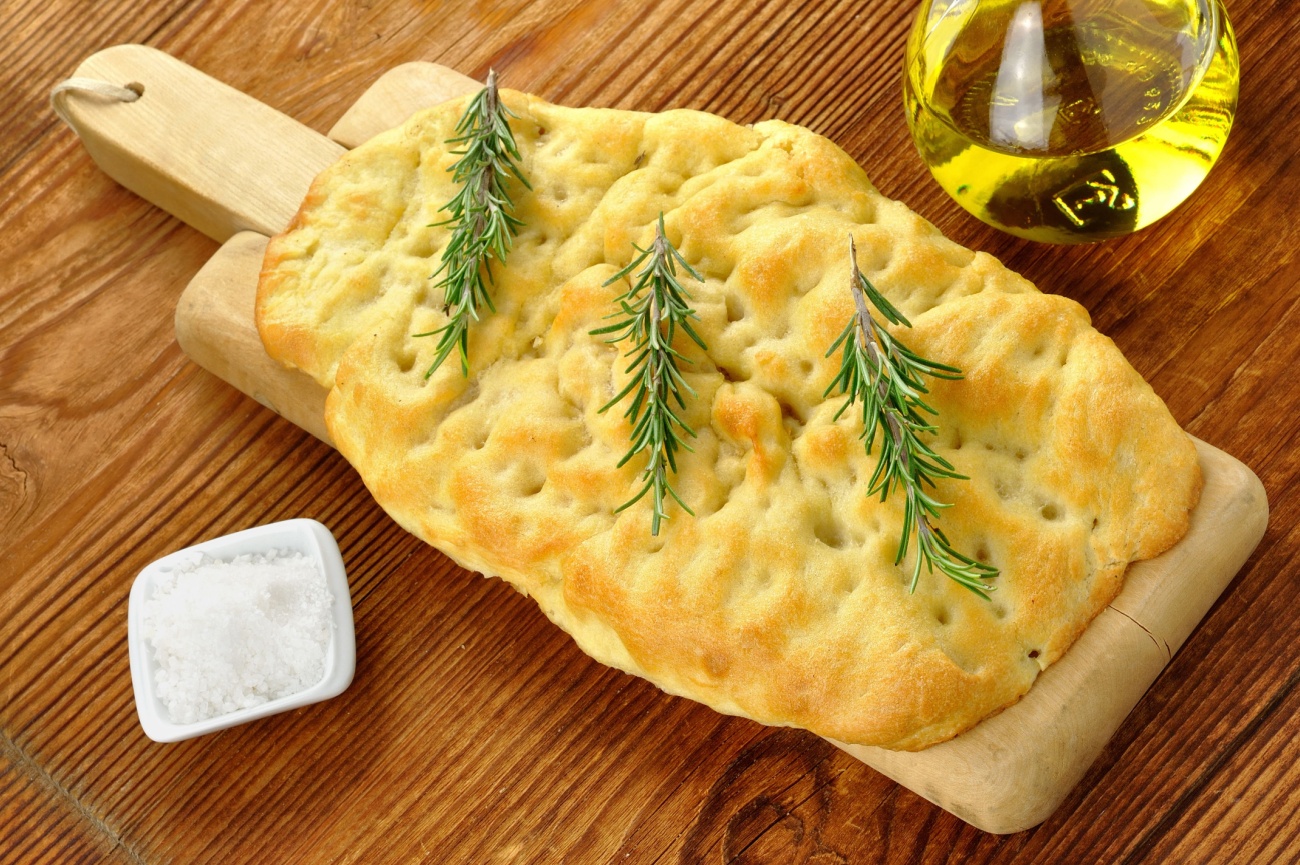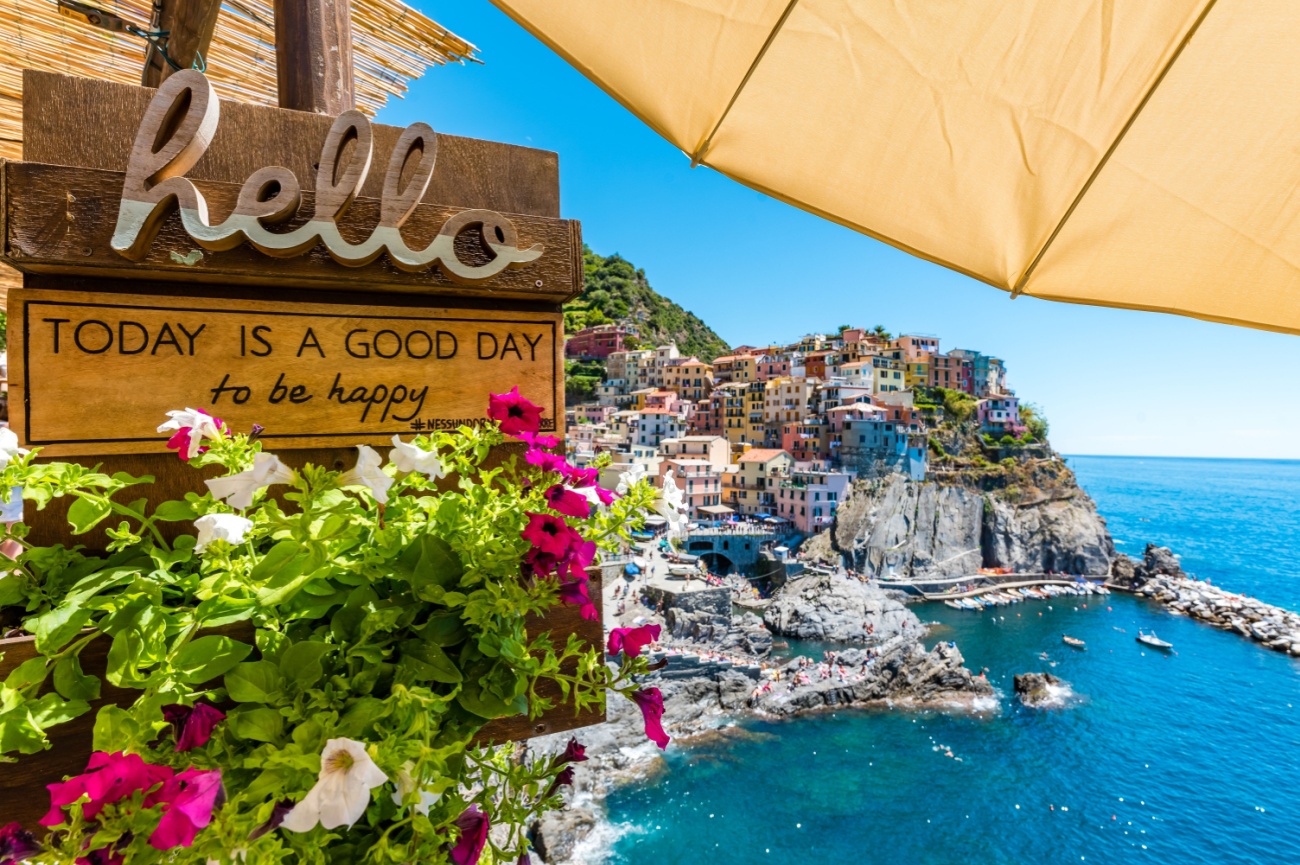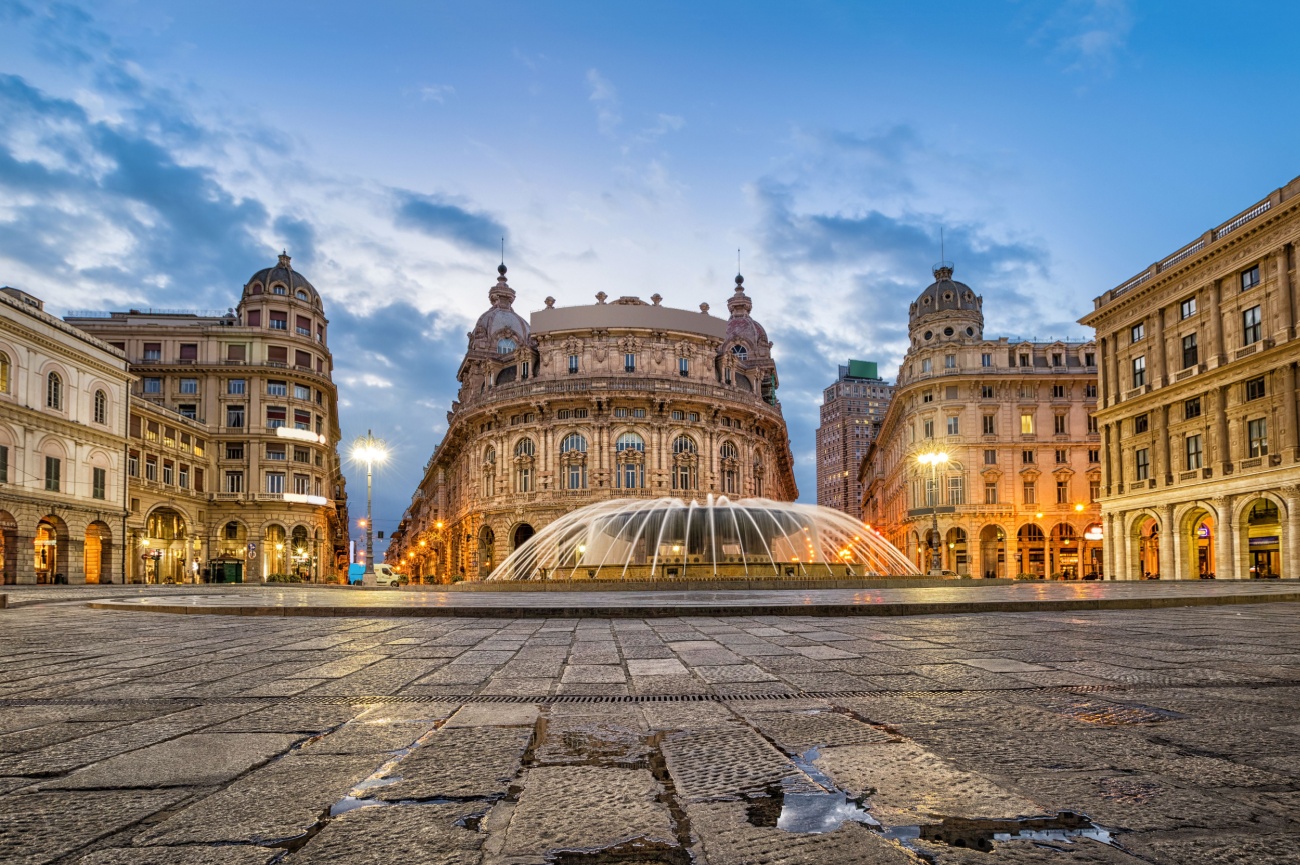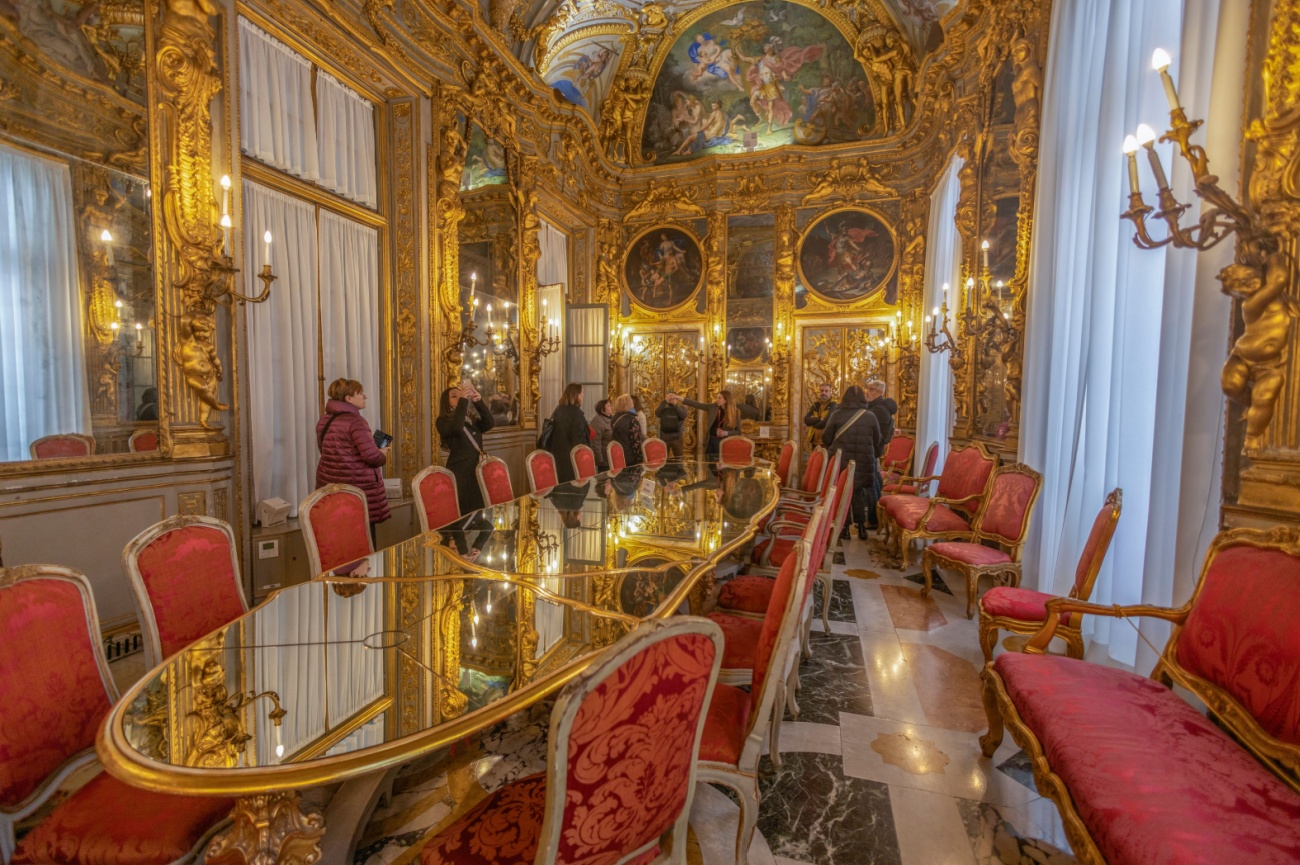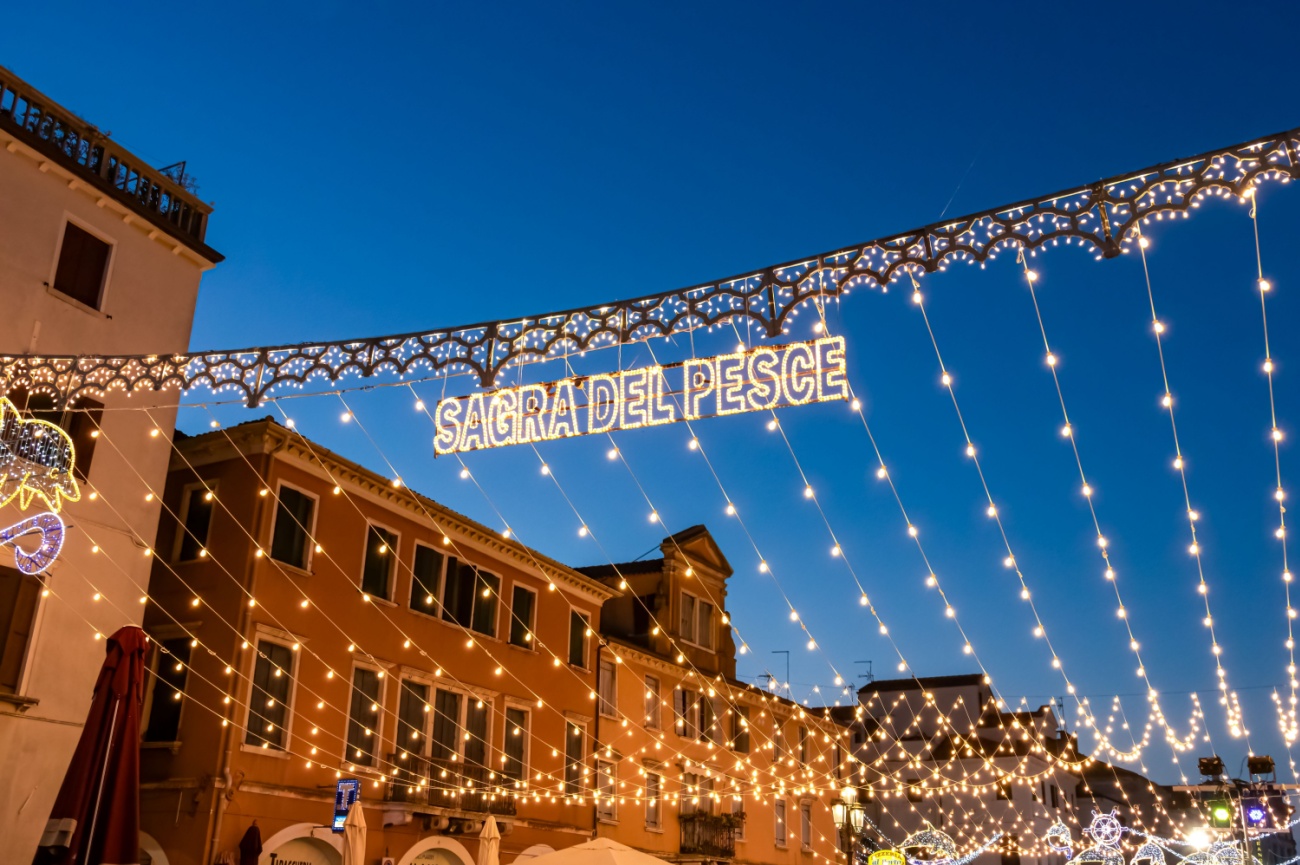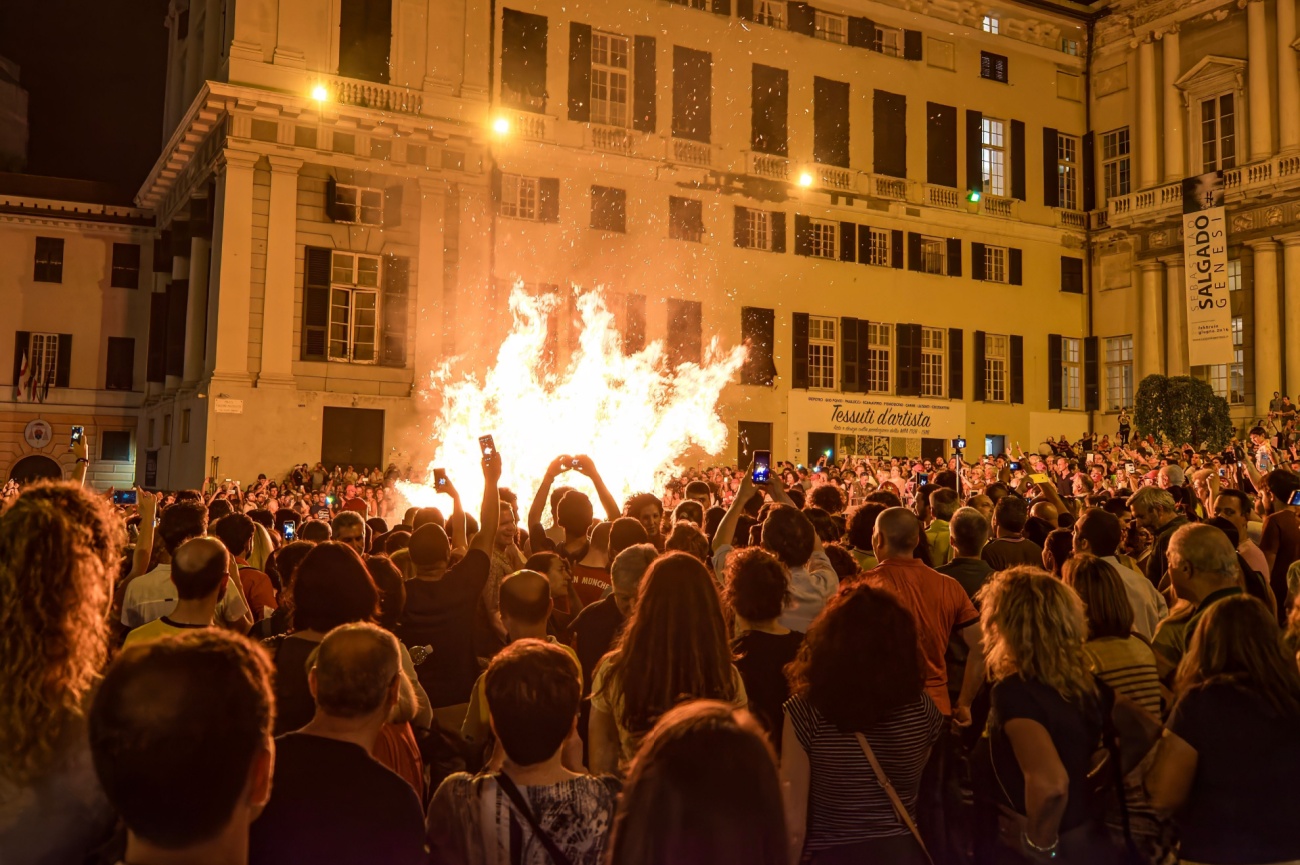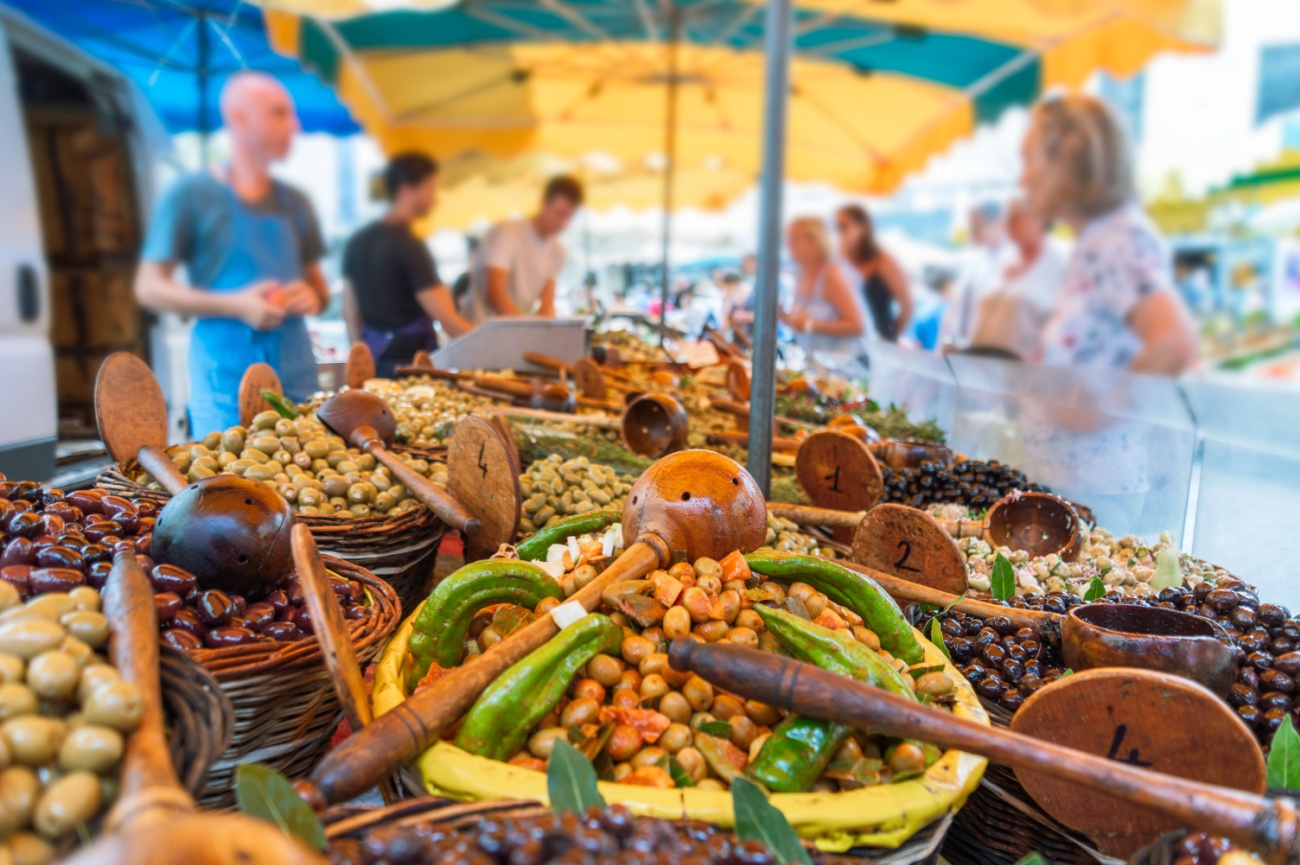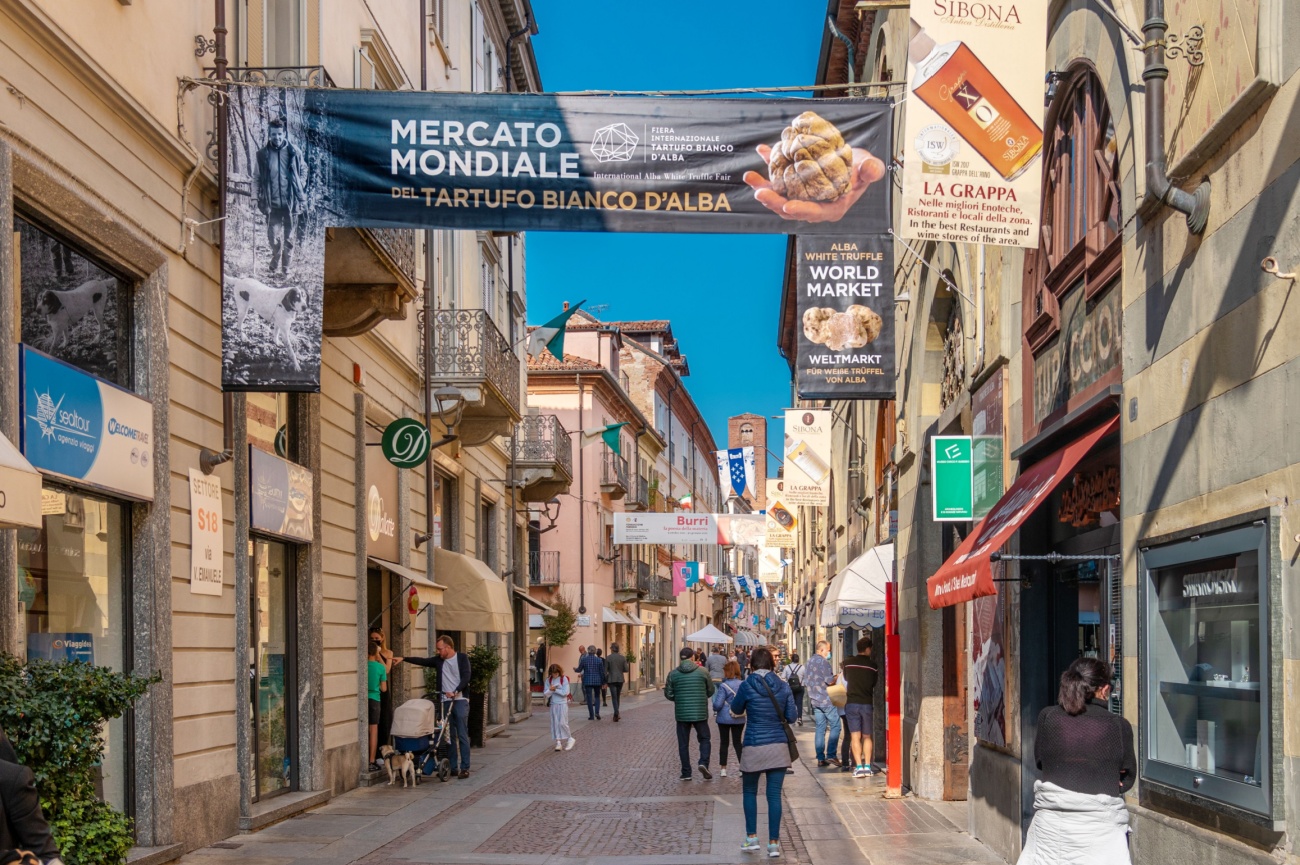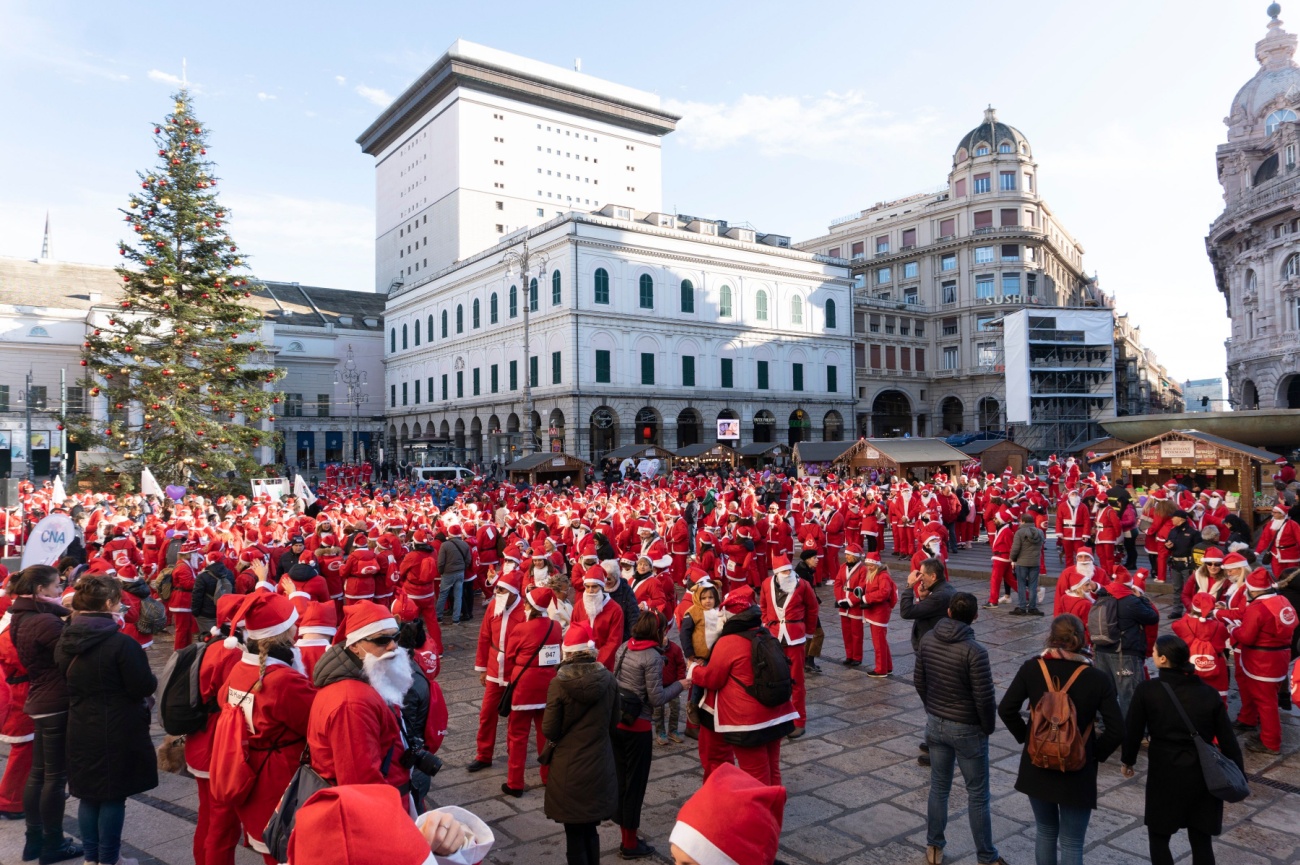Things to Do in Genoa: 5-Day Itinerary
Genoa is Italy's largest seaport and capital of Liguria, a region that stretches from the French border to the edge of Tuscany. The city’s vibe is contradictory, full of grit and grandeur, twisting medieval streets and glorious Renaissance palazzos. Genoa is considered the gateway to the Italian Riviera; it has one of the most beautiful palace-lined boulevards in Italy; and is the birthplace of both pesto and Christopher Columbus.
History feels alive in Genoa. Its glorious past as a maritime powerhouse is embodied in the wealth of regal architecture, rich cultural heritage, and collection of UNESCO landmarked palaces. From the ancient churches of San Siro to the Belle Epoque Palazzo della Borsa, or a walk from the ancient port through the old town and along via Giuseppe Garibaldi tells the story of Genoa through the ages.
Genoa’s grand train station makes seeing the Ligurian coast a breeze. Take a day trip to dreamy Portofino or hike between the gravity-defying villages of the Cinque Terre. Travel in the opposite direction to the Riviera dei Fiori with its sweeping sandy beaches, gorgeous gardens, and sleepy fishing villages. Sanremo, the “City of Flowers” is a sophisticated alternative to the nearby glitzier Riviera cities. Base yourself in Genoa and use our 5-day itinerary to explore the Italian Riviera in the east and Riviera dei Fiori to the west.
Day 1 – Genoa

Prime waterfront property enabled the Genoese city-state to amass great wealth as a Medieval maritime power. Everywhere you look, it's evident that this was the birthplace of Christopher Columbus, and through his exploits, a significant amount of the New World’s gold ended up here.
From the 11th century until the late 18th century, Genoa was a leading economic and military power in Europe. It was one of the wealthiest cities in the world through its maritime trade and commerce. In the late 16th century, the Genoese aristocracy implemented a plan to transform the medieval city into a modern one. The Strada Nuova (“New Streets”), now known as Via Garibaldi, was designed for grand private palaces and mansions. Today, it forms part of a UNESCO World Heritage Site, which includes Le Strade Nuove and the system of the Palazzi dei Rolli, a collection of over 100 noble palaces in Genoa. Among the most famous are Palazzo Rosso, Palazzo Bianco, and Palazzo Doria Tursi.
Today Genoa is a busy, cosmopolitan city popular with cruise lines. When you scratch the surface of La Superba (“The Proud One”), you will encounter old-world grandeur in Europe’s largest historic city centre. If you are only spending a day in Genoa, focus on the best of what the city has to offer in terms of churches, palazzos, and the port.
Morning: Piazza De Ferrari
Begin a walking tour at Piazza De Ferrari or Ferrari Square in the heart of the city. The piazza is anchored by an impressive bronze fountain with a sculpture of Neptune surrounded by nymphs and dolphins. The square is bordered by opulent neo-baroque buildings constructed in the early 20th century. The juxtaposition of modern and old is evident as you visit the 13th-century Ducal Palace which now serves as a museum and palace of culture; Palazzo Cambasio Pallavinci, built in 1586; and Agostino Spinola Palace, built in the 18th century and now housing the Bank of Rome.
Church of Jesus and Saints Ambrose and Andrew
The original 6th-century church, updated in 1522 epitomizes Genovese Baroque architecture and is loaded with masterful paintings and sculptures. Behind its neoclassical façade, columns soar to the heavenly dome where the ceiling swirls with colourful frescoes. The main altar features a Peter Paul Rubens painting, The Circumcision, c. 1608.
Palazzo Ducale
The Duke's Palace, home to the medieval Doges of Genoa, was constructed in the 13th century, inspired by the Venetian palazzos. Between 1294 and the mid-14th century, the palace underwent various transformations, including the addition of new buildings, a garrison, and a fortified courtyard. Following a devastating fire in the 18th century, some rooms in the palace were renovated with gilded stucco and marble. Visitors can explore the Doge’s Apartments, Picture Gallery, immense administrative chambers, and rooms filled with armory.
Cathedral San Lorenzo
The Cathedral of San Lorenzo consecrated in 1118, is the most important church in Genoa. It is known for its distinctive horizontal black and white striped marble façade, which carries through to the interior. The pointy French-Gothic portals are decorated with reliefs depicting Christ with Saint Lawrence, and a large rose window stands above the centre portal. The cathedral is guarded by two giant lion sculptures at the entrance. The two towers, built over several centuries, add to the cathedral's architectural charm. One of the chapels is dedicated to Saint John the Baptist, the patron saint of Genoa, and houses an urn with the saint’s relics brought to Genoa during the First Crusade.
Palazzo San Giorgio
In 1260, The Byzantine Emperor gifted Genoa with material stripped from the Venetian embassy in Constantinople to build the waterfront Palace of St. George. In 1400 the palazzo housed the Bank of San Giorgio, one of Italy's first financial institutions. The palace subsequently became a prison, with Marco Polo as its most famous prisoner. Here, he wrote his memoirs to Rustichello which formed the basis of Marco Polo's autobiography. In 1608, the main facade was adorned with heroic frescoes, and a central clock tower was added. The facade features niches holding statues of heroic figures from Genoa's past, including Christopher Columbus.
Palace Walk along Via Garibaldi
Via Garibaldi is one of the "New Streets" constructed in 1583 during the Renaissance period. Genoa’s upper class built several splendid palazzos in a matter of years, transforming the medieval city into a modern one. The boulevard underwent several name changes from the medieval Strada Maggiore (Major Street) to Strada Nuova (New Street). In 1576, the Genoese Senate compiled a list, known as the rolli, of 42 palaces to be used on a rotating basis as lodging for important state guests from abroad, with the most distinguished visitors housed in the most opulent accommodations. Depending on one’s rank, such as royalty, diplomat, or religious figure, a palazzo would be chosen. The Palazzo Doria-Tursi, along with Palazzo Bianco and Palazzo Rosso, form the Strada Nuova Museum Complex.
Palazzo Reale
The Royal Palace is one of the most opulent palazzos in all of Italy. The wealthy Baldi family, who made a killing in the 17th-century silk trade, built an extravagant palace that was later purchased by Italian royalty. The extravagant Rococo rooms display original period furniture, tapestries, and decorative arts from Genoa’s golden age. The palace is full of paintings by Veronese, Tintoretto, Rubens, and Van Dyck. Not to be outdone by Versailles, the Hall of Mirrors dazzles with chandeliers, sumptuous fabrics and frescoes, and of course, a multitude of mirrors. The Hall was used as a dining room to entertain Emperor Joseph II of Austria and Napoleon Bonaparte.
Palazzo Doria-Tursi
All the splendour and wealth of Genoa’s Golden Age culminate in Palazzo Doria-Tursi, built for Niccolò Grimaldi, the primary banker to Philip II, King of Spain. The largest palazzo along via Grimaldi, built in 1565, sits on three lots of land. Large gardens frame a central Spanish-inspired courtyard that opens to the sky. Its delicate colonnades are Arabesque in design and colouring, using pink stone, grey slate and white Carrara marble.
Piazza Bianco
The White Palace was constructed in 1530 for Luca Grimaldi, a member of one of the most prominent Genoese families. It was given its plain name for the simple colour of its facade. This is a museum for art lovers as the collection boasts a vast number of 14th to 18th-century French, Spanish, Italian, and Flemish paintings. Don’t miss Rubens’ Venus and Mars, Van Dyck’s Vertumna e Pomona and Caravaggio’s Ecce Homo. The gallery also houses a fascinating collection of 19th and 20th-century fashion.
Palazzo Grimaldi della Meridiana
The Palazzo della Meridiana was built in 1493 by a Genoese banker and merchant. It was the first palace constructed in the neighborhood that later became known as the “Golden Street” of Genoa. The peach-colored facade is adorned with elegant female sculptures, and the interior halls, stairs, vaults, and porticos are decorated with rich frescoes and intricate stucco friezes. The highlight of the palace is the magnificent 16th-century ceiling in Cambiaso Hall, which is adorned with stucco and frescoes depicting monumental images of Ulysses, mythological deities, and allegorical figures.
Day 1, Morning - Genoa Tour Map
Via
XX Settembre (20th September Street)
The best shopping is along via XX Settembre from Ferrari Square to Vittoria Square. You will find beautiful Art Nouveau buildings, monuments, trattorias, and a variety of high-end boutiques and affordable chain stores. Mercato Orientale, also on via XX Settembre is a bustling indoor market with vendors selling fresh produce, cheese, meats, and seafood. You can grab lunch from one of the prepared food stalls to fortify for more shopping.
Day 1, morning - Genoa Tour Map
Afternoon: Genoa Porta Antico
The Ancient Port of Genoa reflects Genoa's historical significance as a maritime powerhouse. It has recently undergone extensive redevelopment to include waterfront restaurants, museums, Europe's largest aquarium, an entertainment complex, and a botanical garden. This port consists of two distinct areas – the old harbor with historic galleons and tourist attractions, and the newer section capable of accommodating modern yachts and mighty cruise ships.
Vascello Neptune
Climb aboard the 1968 replica of the 17th-century Spanish galleon built for the 1985 Roman Polanski film, Pirates. This is a great attraction for kids and adults alike.
Galata Maritime Museum
The Galata Museo del Mare is the largest maritime museum in the Mediterranean region. "Galata" refers to the historic Genoese community in Istanbul, Turkey - one of the most important Genoese colonies in the Mediterranean. In the 19th century, Genoa built commercial docks named after the colony. Galata was a bustling shipyard where the Genoese galleys were built and here is where the Maritime Museum opened in the 1990s. The museum's exhibitions explore sailing and transatlantic travel. It features a full-scale model of a 17th-century galley and a Brigantine, a shipyard workshop, an exhibit of armour and weapons, as well as portraits of Columbus, his charts, and navigation equipment. The submarine moored at the museum's dock is open for touring.
Genoa Harbour Tour
The city's prosperity is still tied to the sea, reflecting the Genoese spirit of independence. Experience a sailor's perspective of the coastline by taking a boat tour with one of the many operators situated at the port.
La Lanterna
Genoa’s tall, pointy lighthouse was built in 1544 and stands tall between the modern port and Porto Antico as a symbol of the city’s former might.
Day 1, afternoon - Genoa Tour Map
Where to Eat in Genoa
Fine Dining
- Alla Lunga Restaurant: Experience the flavours of the Mediterranean through the fresh and creative seafood and pasta dishes on Alla Lunga's monthly changing menu. The intimate dining room near Piazza Caricamento is adorned with exposed stone and vaulted ceilings, creating a warm ambience. The restaurant offers impeccable service, masterful presentation, and an extensive wine and craft beer list.
- Hosteria Ducale: Just a few steps from the Palazzo Ducale, down a tiny alley, you'll find a hidden gem: the elegant Hosteria Ducale. The restaurant features modern décor with touches of classical art and offers imaginative modern cuisine on multi-course tasting menus, with unexpected pairings from land and sea. Their signature dishes include cuttlefish, eel, venison, and risotto. The restaurant also boasts a thoughtful wine list and spectacular service, earning it a nod (not a star, yet) from Michelin.
Casual Dining
- Le Rune: This vibrant, contemporary Italian restaurant offers seasonal dishes focused on seafood and locally sourced produce from Liguria. The atmosphere is cosy, with multiple levels of dining rooms. The chef’s table in the mezzanine above the kitchen allows guests to observe the culinary magic. Additionally, the restaurant boasts a lovely patio with views overlooking the funicular station of Sant'Anna.
- Le Mura di Malapaga: One of Genoa’s best steak restaurants is in an old building at the port with stone vaulted rooms. Malapaga offers meaty modern cuisine in an old-world atmosphere. It's a great option for meat lovers, serving popular dishes like raw beef tartare and beautifully grilled steak tagliata topped with chopped herbs. You can also order your favorite cut of beef with a variety of luscious sauces and vegetables.
Where to Stay in Genoa
- Palazzo Grillo 5*: The regal hotel, located in a restored 16th-century palace features grand marble staircases and vaulted ceilings with original frescoes with scenes from Greek mythology. The Palazzo Grillo is appropriately situated near the ancient palace district. Its breakfast room is cozy and bright while the sunny terrace is a pretty place to enjoy a Spritz. Other amenities include a lounge, a modern reading room, and changing art exhibitions.
- Hotel Bristol Palace 5*: Take the time to explore the historic Hotel Bristol Palace, which was built in 1905 and beautifully restored to its Belle Époque glory. The hotel epitomizes timeless elegance with its lacy ironwork, exquisite stucco and frescoes, and an unusual elliptical-shaped staircase that has been featured in many films. Antiques and parquet flooring add a touch of class to the spacious bedrooms. You can enjoy a refined meal in the lavish restaurant or dine al fresco on the covered terrace. A fun factoid about the hotel is that it was one of Alfred Hitchcock’s favourite European hotels.
- Grand Hotel Savoia 4*: The Grand Hotel Savoia, one of Italy’s oldest hotels, is a beacon of modern luxury. Marble, mosaics, and maritime murals add a touch of Genoese elegance to the rooms. The lobby and bars feature dark wood panelling and luxurious upholstery, reminiscent of Genoa’s rich history in maritime trade. On the 7th floor, the restaurant offers seafood dishes and stunning panoramic views over the city and the ancient port. Guests can also unwind in the serene spa and book the hot tub on the terrace for a relaxing experience.
- Hotel Continental Genoa 4*: This modern hotel tucked into an Art Nouveau building overlooks Piazza Principe and is a short walk from the port. The Continental’s chic, spacious rooms are decorated with whimsical maritime-themed wallpaper and modern furnishings. Some rooms come with whirlpool tubs or balconies, and suites have separate living rooms. Breakfast is served in a charming nautical-themed restaurant.
- Melia Genoa 3*: The contemporary boutique hotel is a beautiful stucco-embellished building on a quiet tree-lined boulevard near Palazzo Ducale. The spacious, bright rooms come with modern decor, and those with a private terrace offer great views over the old town. Enjoy an aperitif on the shady outdoor terrace or a refined Mediterranean dinner and breakfast buffet in the restaurant. Take a dip in the indoor pool or whirlpool at Melia’s wellness centre. This is a three-star hotel with five-star service.
Day
2 – Camogli and Recco

For a mix of relaxation, culture, and seaside fun, consider stepping away from busy Genoa by visiting low-key coastal Camogli or heading for the hills to Recco. Camogli is a charming Riviera town about an hour east of Genoa. Vertical houses cascading down the hillside are painted in sunny shades of apricot and amber surrounding the enchanting cove.
Recco’s quiet piazzettas and fantastic dining scene offer a nice afternoon escape from the bustling city. Nothing beats an aperitivo or dinner near the water while the evening sun sinks into the sea. A beach day in Camogli combined with a trip to Recco makes for a sun-kissed, food-filled, relaxing day.
A short walk around Camogli and you will quickly notice green shuttered windows. Some are real and others “trick the eye.” Trompe l’oeil facades came into fashion when taxes were based on the number of windows one had, and they have since become iconic works of art.
Castello
della Dragone, Camogli
Massive buttresses hold up the tower and esplanade of Castello della Dragone (Dragon’s Castle) high above the promontory near the edge of Camogli. Built as a watchtower in the 13th century, the castle defended the village and coastline from Saracen raids. The panoramic terrace continues to offer the same picturesque views of the sea, minus the pirates.
Get a glimpse into the lives of local fishermen and their industry at the Marine Museum. The small museum exhibits fun boats in a bottle, a reproduction of a Camogli house and its port, maritime paraphernalia, and a German torpedo from The Great War.
At the end of Camogli Beach along the sea wall, the bright yellow church of Santa Maria Assunta completes the postcard-perfect picture of the village. Constructed in the 12th century, the church features lovely frescos and a Renaissance altarpiece.
Day 2 – Camogli and Recco Tour Map
Where to Eat in Camogli and Recco
For dining options, you will find some of the best food in Camogli a few streets away from the touristy waterfront. Long-time local favourite La Bossa di Mario is a convivial wine bar and restaurant serving seafood dishes. Come for the pasta and stay for the sunsets with dinner at Ostia Da ò Sigù’s terrace overhanging the beach.
- Mille una Notte, Camogli: If you have a car, this restaurant is worth a jaunt into the hills above Camogli. The elegant villa not only dishes out beautiful food but serves up gorgeous mountain and lake vistas from the dining room and tranquil terrace. The menu is a small but focused offering of antipasti, pasta, seafood, and meat, as well as desserts and after-dinner liqueurs.
- Da Ö Vittorio is a renowned restaurant located in Recco, a town famous for its traditional Focaccia di Recco. This variation of focaccia is slightly different from your standard focaccia. The bubbly bread is not topped with herbs and olive oil but, rather, filled with cow's milk cheese. This family-owned restaurant in Recco excels at making cheesy stuffed focaccia flatbreads. Aside from the iconic focaccia, Da Ö Vittorio serves a range of regional specialities, including fresh seafood, pasta, and seasonal dishes.
Day
3 – Cinque Terre

A string of five fishing villages known as the "five lands," include Corniglia, Vernazza, Manarola, Riomaggiore, and Monterosso al Mare. Each has its own personality and unique views offering variations on a spectacular theme. The natural seclusion of the Cinque Terre makes it an ideal and laid-back alternative to the more glamorous Riviera towns. Train service runs through all five villages of the Cinque Terre. Purchasing an unlimited ride ticket makes it easy to visit them all in a day or two.
Monterosso al Mare
Monterosso is the largest of the Cinque Terre and is the only one easily accessible by car. It is more touristy than the others but has hotels and restaurants at varying price points. Monterosso’s Fegina Beach is considered one of the prettiest in the region with its traditional sandy beach and spurs of rocks rising from the sea.
Monterosso is home to many beautiful churches, including, San Giovanni Battista, one the oldest churches in Cinque Terre, dating to 1307. Oratorio Mortis et Orationis, the Baroque Oratory of Death and Prayers is a modest chapel with intricately carved skulls and skeletons as a reminder of the transience of life.
The Convent of the Capuchin Friar, constructed in 1618, sits high on the promontory overlooking Monterosso Bay, visible throughout the Cinque Terre. The convent’s small Church of St. Francis has a surprisingly nice collection of artworks, including a Crucifixion by Flemish painter Anthony Van Dyck.
The Torre Aurora (Aurora Tower) divides the town into old and new sections. The original Tower, built around AD 1000, kept watch over the coast and fended off pirate incursions and today it is a bar and restaurant.
Il Gigante, a monumental Art Deco sculpture of Neptune lumbers under the weight of a garden terrace at the west end of Monterosso’s beach.
Belly up to the wine barrel tables at Enoteca Da Eliseo, Monterosso’s most popular wine bar and restaurant humming with people and Bossa Nova tunes.
Vernazza
The fairytale village sits on a jagged strip of coastline crowned with a medieval tower. Vernazza is traffic-free and is the only Cinque Terre town with a natural harbour. The village has great access to trailheads and fabulous scenic overlooks.
Well-worn staircases ascend through a honeycomb of streets and interior passages through the historic city centre of Vernazza to pop out at the top of the town near the old castle. Doria Tower, built in 1284, has guarded Vernazza since Saracens terrorized the sea. Climb the steep tower stairs for a bird’s eye view of the coast.
Vernazza beaches are small, but sun worshippers can be found draped over sunning rocks near the harbour which becomes a swimming spot after the fishing boats return for the day.
Grab lunch or dinner at Deck Ristorante, an incredible osteria with a ton of character and an incomparable sea view from its covered patio.
Corniglia
Unlike the other four coastal towns, Corniglia is perched high above the shore with a stretch of pebbly beach below. Corniglia is the smallest village of the Cinque Terre and probably the most challenging to get to. A visit here feels a little more authentic. It is quieter, less expensive, and has the most staggering views. The road between Corniglia and Manarola is considered the Cinque Terre Wine Trail.
Make the semi-challenging climb up 370 steps of the red brick staircase La Lardarina for spectacular views of the crystal-clear water, coves, and beaches. Saint Mary's Terrace panoramic point is a little easier to reach by foot than La Lardarina. Just follow via Fieschi for wonderful views of the sea and glimpses of the neighbouring villages.
Plan to eat at Osteria a Cantina de Manahan, often touted as one of the best seafood restaurants in the Cinque Terre.
Manarola
Manarola is a most striking village, colourfully clinging to a rocky spit of land jutting into the sea and hugged by rugged vineyards. The best thing to do in Manarola is to wander around discovering romantic nooks and sampling the local Sciacchetrà wine. As a busy working fishing village, the restaurants overflow with daily fresh seafood. Take in the incredible views during lunch or cliffside cocktails on Nessun Dorma’s terrace overlooking Manarola.
Riomaggiore
Riomaggiore, the southernmost village of the Cinque Terre is a two-minute train ride from Manarola. The brightly coloured stone houses are wedged into the hillside between cliffs overlooking the sea.
Stroll along the main street via Colombo down to the picturesque little marina framed with pastel houses and dotted with candy-coloured fishing boats. The pebbly beach and rocky hillside near the boat dock are one of the best spots to watch the sunset in the Cinque Terre. Riomaggiore also has more nightlife than the other villages, with many restaurants and bars staying open late.
A few points of interest are the Castle of Riomaggiore, built in the 13th century as part of the defensive system encircling the town. Tucked against the hillside at the top of town, the Church of St. John the Baptist was built in 1340 and renovated in a neo-Gothic style during the late 19th century.
Day 3 - Genoa Tour Map
Day 4 –
Scenic Hikes

Trekking cards are required for some stretches between the Cinque Terre villages. They can be purchased at the National Park Info Point in Riomaggiore or in the Cinque Terre train stations. This stretch of the Italian Riviera has been dubbed the “floral shop of Italy” as colourful flowers, gardens, and groves blanket the surrounding hills.
Levanto
to Monterosso
– Moderate
From the east end of Levanto, take the stairs to the castle where the path leads through lush Mediterranean vegetation, past the ruins of the Chapel of St. Antonio and an old lighthouse. During your walk, you will get breathtaking views over Levanto and all five Cinque Terre villages. Prepare to climb a lot of stairs down to Monterosso. This is a popular trail from April through October.
Day 4 - Levanto to Monterosso Hiking Trail Map
Monterosso
to Vernazza – Moderate
Starting in Monterosso, the trail begins with a rigorous staircase climb with great views over Vernazza, but it is easier if you walk from Vernazza toward Monterosso. Parts of the path are wide and peaceful with brilliant vistas over the sea. The footpath passes through varied mountain vegetation past an ancient stone-bridge making for a great photo op.
Day 4 - Monterosso to Vernazza Hiking Trail Map
Vernazza
to Corniglia – Average
The hike from Vernazza to Corniglia requires a hiking fee. Take this path in either direction, but it is easier to begin in Corniglia. Take the bus from the train station up to Corniglia’s trailhead to save time. The ride is included with a Cinque Terre Card. Well-marked signage points you toward Vernazza on a relatively flat trail with breathtaking views descending toward the coast. Make a rest stop halfway in the village of Prevo where Il Gabbiano bar offers fantastic sea views and delicious lemon granitas.
Day 4 - Vernazza to Corniglia Hiking Trail Map
Corniglia
to Manarola via Volastra – Moderate
The Cinque Terre Card is not required for this part of the trail. The hike can be done in either direction, but it is easier to start in Corniglia. The hiking trail begins with a very steep climb up steps. To avoid the stairs, start in Manarola by taking the shuttle directly to Volastra’s trailhead. This becomes the most beautiful part of the walk leading through ancient terraces of vineyards and olive groves, down to the sea. The vineyard section of this hike is easy with wonderful views of the sea and villages.
Day 4 - Corniglia to Manarola via Volastra Hiking Trail Map
Manarola to Riomaggiore Via dell’Amore (the Path of Love) - Moderate
The Via dell'Amore is the most popular hike in the Cinque Terre, requiring the Cinque Terre Pass. Paved trails wind along the coast with some parts of the romantic walk overhanging the sea. An alternate, but more difficult route from Manarola to Riomaggiore follows the trail "via Beccara".
Day 4 - Manarola to Riomaggiore via dell’Amore Hiking Trail Map
Camogli to San Fruttuoso - Difficult
Camogli to San Fruttuoso (6.5 km): This is a beautiful but challenging hike with great views over the Gulf of Genoa. Toward the end of the trail, you will encounter switchbacks and elevation gains requiring some scrambling along rocky terrain and descents requiring the use of chain handrails.
Day 4 - Camogli to San Fruttuoso Hiking Map
Day
5 – Sanremo

San Remo oozes with sophistication, culture, and history. The “other” Italian Rivera, Riviera di Fiori (Flower Riviera) stretches west from Genoa to the French border. This region benefits from a mild Mediterranean climate, making it the centre of Italy’s flower and perfume production, with Sanremo at its heart. A visit to the "City of Flowers" is a wonderful day trip from Genoa for its beautiful gardens, glamourous promenade, and unexpectedly delightful old town.
La Pigna
Explore the well-preserved medieval old town, La Pigna, where tall houses are stacked on top of each other around a maze of ancient alleyways. Don't miss the 14th-century church of Madonna Del Costa, which stands out for its magnificent trompe l’oeil painted dome. Also, make sure to visit the nearby Basilica of San Siro, the oldest church in Sanremo, which houses a magnificent treasury.
Russian Orthodox Cathedral
The candy-coloured onion domes of the Russian Orthodox Cathedral can be seen from miles away. It was built in the late 19th century for the affluent Russian nobility who wintered in Sanremo and other parts of the Riviera. The interior is as bright as the exterior, painted with bright religious murals and full of shiny icons and relics.
Sanremo Casino
The Casino, one of only four in Italy, was built in 1905 during the heyday of Belle Epoque architecture. Gaming in opulent parlours attracted a sophisticated jet-setter crowd to the city during the roaring 20s and 30s. Today, the casino still thrives with elegantly adorned poker and blackjack rooms, lively roulette wheels, and hundreds of slot machines.
Gardens and Villas
Queen Elena Gardens, a public park built in 1754, is a series of green terraces linked together by stone stairs. Enjoy splendid views over the ancient city and sea from this shady oasis at the top of La Pigna. The grand Villa Ormond with its lush gardens, exotic plants, and Renaissance-style loggias is not to be missed. Villa Nobel was the home of prize creator Alfred Nobel, who spent the last years of his life here in “his nest”. Tour the mansion-turn-museum’s rich collection of decorative arts, scientific equipment, and lovely gardens.
Promenade
Sanremo’s attractive palm-lined promenade, called Imperatrice (Empress), sprawls along the sea to the Old Port. Toward the end is the imposing Santa Tecla Fort, built by the Genoese in 1756 to repress the Sanremo’s desire for independence. Stroll, cycle, or relax on the boardwalk while soaking in the magnificent views.
Day 5 - Sanremo Tour Map
Other Things to See in Genoa
- Porto Soprano: Genoa's medieval walls, built between 1155 and 1160, originally reached a length of 20 km and are the longest and one of the most impressive in Europe. A large portion of the bastion survives today, including Porta Soprana, the medieval gateway to the city. The gatehouse flanked by two massive round towers divides the ancient city from the modern one. Walk along the walls for a bird’s eye perspective over Genoa.
- Columbus House: Genoa's famous explorer and navigator, Christopher Columbus, spent his early years living just outside the medieval walls near the Porta Soprano gatehouse. Visitors can tour the tiny 18th-century reconstruction of his original medieval home, where he resided from 1455 to 1470. A few museum rooms display furniture and costumes that offer insight into his early life.
- Cloister of Sant’Andrea: Next to Columbus' house stands a marble cloister, the only remaining part of a former 12th-century monastery. Slim marble columns are topped with elaborately sculpted capitals depicting stories from the Old and New Testaments as well as chivalric scenes. The huge monastery was demolished to make way for the present-day Piazza Dante, and the cloister was moved to its current location in 1922, where it surrounds a peaceful green space.
- Castello d'Albertis: Located on a hilltop overlooking the city and port, the neo-Gothic Castello d'Albertis was once home to Captain Enrico Alberto d'Albertis – a sailor, explorer, and collector. Today, the castle houses the Museum of World Cultures, where artefacts from his global expeditions are beautifully displayed. With dramatic interiors, sweeping terraces, and peaceful gardens, it’s a fascinating stop for anyone interested in travel, history, or architecture.
- Elevator to Spianata Castelletto: Tucked behind a rather modest-looking building on Piazza Portello is the Art Nouveau lift to Spianata Castelletto – a favourite lookout among locals. In mere seconds, the elevator carries you to one of Genoa’s most picturesque viewpoints, where tangled rooftops, elegant domes and the bustle of the harbour stretch out beneath you. It’s an ideal spot for a quiet moment and a postcard-perfect sunset.
- Santissima Annunziata del Vastato: Just steps from Via Balbi, the church of Santissima Annunziata del Vastato surprises with one of the most lavish Baroque interiors in the city. Behind its unremarkable exterior lies a dazzling display of gold leaf, frescoes, and ornate stuccoes that rival some of Italy’s most famous churches.
- Villa Durazzo-Pallavicini (Pegli): A short train ride west of the city brings you to Pegli, home to Villa Durazzo-Pallavicini – a hidden gem known for its imaginative 19th-century gardens. Designed as a theatrical journey, the landscape unfolds through winding paths, artificial lakes, mysterious grottos, and whimsical temples. This romantic retreat offers a tranquil escape and the imaginative spirit of Ligurian landscape design.
- Via Balbi and the University of Genoa: Often overlooked in favour of Via Garibaldi, Via Balbi is a grand 17th-century street commissioned by the powerful Balbi family to link their residences to the city centre. Today, many of its palaces house departments of the University of Genoa, one of the oldest in Italy, founded in 1481. Highlights include the stately Palazzo Balbi Senarega and the Palazzo dell’Università, home to the university’s main library.
- Museo d'Arte Orientale Edoardo Chiossone: Located within Villetta Di Negro Park, the Edoardo Chiossone Museum houses one of Europe’s most important collections of Oriental art. Named after a 19th-century Italian engraver who spent decades in Japan, the museum displays samurai armour, porcelain, bronze sculptures, masks, and over 15,000 Japanese woodblock prints.
- Teatro Carlo Felice: Standing proudly on Piazza De Ferrari, Teatro Carlo Felice is Genoa’s principal opera house and a cultural landmark. Originally opened in 1828 and rebuilt after WWII, the theatre’s sleek modern interior contrasts with its classical façade. It hosts an acclaimed programme of opera, ballet, symphonic music, and theatre, attracting audiences from across Italy.
Medieval Genoa Tour Map
- Olive Oil Tasting: The best olive oil in Italy is said to come from the Ligurian hills. Sign up for guided tours that depart from Genoa to visit olive groves, and pressing rooms, and include lunch, pesto or bruschetta tastings. Olive oil tours are especially enjoyable during late autumn when the harvest in full swing.
- Parasailing, Kayaking, Boat Tours: Given the maritime history of Genoa, it is no surprise the port is the beating heart of the city. Local tour operators make it easy to explore from the water with parasailing or kayaking, and sunset boat tours. Head for the harbour and find the activity that is right for you.
Things to Do with the Kids
Genoa is one of the best Italian cities to visit with kids. The kid-friendly attractions include the biggest aquarium in Europe, a replica pirate ship, and the region’s largest maritime museum replete with a submarine. Genoa’s Porto Antico underwent a significant redevelopment project and is now one of the most popular parts of the city.
- Aquarium of Genoa: The Aquarium of Genoa is the largest in Europe and is located on the Old Harbor. The huge aquarium has an underwater tunnel, various ecosystems simulating world seas and coral reefs, and up-close experiences with penguins and dolphins.
- Vascello Neptune: Climb-aboard the Vascello Neptune, a replica of a 17th-century Spanish galleon, built for the 1985 film Pirates docked in Genoa’s main port near the aquarium.
- Galata Maritime Museum: The Galata Museo del Mare is the largest of its kind in the Mediterranean region. The exhibitions are dedicated to sailing and transatlantic travel and feature a full-scale model of a 17th-century galley, a shipyard workshop, and Columbus’s navigational equipment. Kids love touring the submarine moored at the museum's dock.
- Genoa Harbour Tour: The city’s fortunes are still linked to the sea as several tour operators run multiple daily harbour tours, sunset tours, and trips throughout the Italian Riviera. The whole family will love getting out on a boat to see the coastline from the water.
Horseracing in Genoa
- Hippodrome dei Fiori Spa, Villanova d'Albenga: The only horseracing facility in Liguria operates trotting and gallop races almost year-round thanks to the mild weather. Amenities include a bar and panoramic restaurant with typical racecourse fare. Kids can saddle up for a pony ride.
Golf Courses in Genoa
- Golf Club Genova, Genoa: Genova Golf Club, just outside the city, is open year-round. The course features two distinct 9-hole sections that can be played separately or together. The Mountain Course has big, sweeping fairways through the breathtaking countryside with lots of undulation and challenging greens. The fairways of the Sea Course are set in more dramatic scenery with deep bunkers, water hazards, and sharp dogleg turns. Stay at the beautiful golf club and enjoy modern Ligurian cuisine in the bistro. The club has a driving range, pro shop, golf cart and equipment rental.
- Golf Rapallo: The 18-hole golf club, founded in 1931, is located at the edge of Rapallo overlooking the Tigullio Gulf. The par 70 course is short and challenging, with tight greens, many bunkers, and narrow fairways. The nearby Excelsior Palace Hotel caters to golfers seeking a luxurious stay close to the golf course. Overlooking the bay, the hotel offers a range of amenities, including a heated swimming pool, sauna, steam room, and gym, providing the perfect combination of relaxation and convenience.
- Garlenda Golf Club, Garlenda: Garlenda Golf Club is a par 72 18-hole course in the picturesque Lerrone Valley, west of Genoa. The narrow fairways snake through ancient olive groves and pine forests, and from the highest holes, players are rewarded with breathtaking views of the sea. Unique perks include a dog-friendly course and a high-tech ball-tracking driving range. For a chic retreat, stay a night or two at the adjacent Relais property, La Meridiana Hotel. The 24 charming rooms are decorated with upscale Italian country furnishings and most have balconies. After a day of golfing, unwind with a plunge in the pool, a sauna, and dinner in the gourmet restaurant.
Day
Trips from Genoa
- Alassio: Beat the city crowds by spending a few days in this picturesque coastal village in the foothills of the Apennine Mountains. Alessio is a sleepy seaside resort town with stunning natural scenery and a rich historical and cultural heritage. The Medieval city centre is known for its famous budello, a pedestrianized area of cobbled streets full of cafes, gelato shops, and boutiques. Alassio is a hidden gem, offering travellers an authentic and laid-back Italian experience. Don't forget to sample the local delicacy of Baci di Alassio, chocolate hazelnut biscuits.
- Boccadasse: Escape busy city life with a trip to the timeless fishing village of Boccadasse on the eastern outskirts of Genoa. Candy-coloured houses tucked into the mountainside are the backdrop to the serene little beach and crystal-clear waters. You will find easy options for casual dining, shopping, and of course, gelato. Stake your claim on the beach to watch a fiery sunset over the gulf.
- Grand Hotel Spaggia and Spa, Alassio: Indulge in a luxurious beachfront retreat at the striking neoclassical Grand Hotel on the Riviera dei Fiori. This resort-style hotel boasts a breathtaking rooftop garden with panoramic views, a refreshing swimming pool, hot tub, and sun deck. The rooms and suites are decorated with modern furnishings and colours that reflect the soft hues of the Mediterranean. Treat yourself to a suite with a private balcony for endless vistas and refreshing ocean breezes. Start your day by unwinding at the exclusive private beach club on the long stretch of sandy beach or take a leisurely paddle in a canoe on the pristine waters. For the ultimate relaxation, pamper yourself with a rejuvenating treatment at the Thalassio Medical SPA. If you're travelling with family, the property also features tennis courts and a fun-filled kids' club, ensuring enjoyment for guests of all ages.
- Imperia: Imperia is a collection of 11 ancient villages created by Mussolini in 1923. It combines the colourful coastal towns of Oneglia and Porto Maurizio with nine hilltop communes scattered through the hinterland. Oneglia features a large, well-preserved medieval old town with Piazza Dante as its focal point. Take a leisurely stroll along Oneglia’s main shopping street, Via Bonfante, which is lined with pastel porticoes housing elegant boutiques, lively cafés, and babbling fountains. Some of Oneglia’s cultural highlights include the Olive Tree Museum, the contemporary art museum in Villa Faravelli, and Villa Grock, the former home of a famous Swiss clown which now hosts the Clown Museum. Wander Port Maurice’s pedestrianized historic centre to the imposing 1838 neoclassical Cathedral of San Maurizio, the largest church in Liguria. The Oratory of San Pietro and the Loggias of Santa Chiara feature a graceful 18th-century arcaded terrace overlooking the sea. For the ultimate Imperia experience, walk the enchanting Passeggiata degli Innamorati (Lovers' Promenade) along the sea to the marinas and sandy beaches. Watch a fiery sunset from a bench along the boardwalk.
- Milan: Italy’s wealthiest city, Milan is high-tech, fast-paced, and very cosmopolitan. The capital of the Lombardy region is less than two hours from Genoa. Milan isn’t known for enchanting ancient ruins or charming medieval streets but rather for luxury shopping, modern design, business, and innovation. The best way to see Milan in a short amount of time is to purchase the Full or Light city pass as it offers entry to many of the major attractions. The top attractions are within easy walking distance of each other. The 14th-century Duomo di Milano, one of the largest cathedrals in the world, is covered with gargoyles, saints, and pointy spires evocative of the Alpine peaks. The Sforza Castle speaks to the might of the wealthy Milanese family who enlisted Leonardo da Vinci as a military engineer to rival the Médicis of Florence. Leonardo’s fragile Last Supper graces the walls of Santa Maria delle Grazie. Milan is Italy’s fashion capital. Find all the luxury brands under one roof is the world's oldest shopping mall, Galleria Vittorio Emanuele II. Every major designer is represented in elegant shopping streets of the fashion district, especially along the Golden Quad.
- Portofino: The chic seaside resort town is located at the point of a tranquil peninsula surrounded by green hills. Portofino's picturesque harbour is filled with colourful fishing boats alongside mega yachts, adding to the glamorous charm of the town. The little piazzetta is perfect for sipping a spritz and people-watching; you might even spot a movie star. Narrow streets with lemon-yellow buildings wind into the hillside, offering posh shopping and unexpected views. Every corner of Portofino is a dream. The best way to see the town is to unwind and explore on foot. There are many standout restaurants in Portofino such as Langosteria Paraggi for its upscale seafood dishes and Ristorante Puny on the piazzetta near the harbour.
- Santa Margherita Ligure: Just along the coast, the elegant seaside town of Santa Margherita Ligure charms visitors with its pastel villas, palm-lined promenades, and timeless Riviera appeal. Its lively marina, stylish boutiques, and welcoming cafés create the perfect setting for a leisurely day.
- San Fruttuoso Abbey: Located in a secluded bay between Camogli and Portofino, San Fruttuoso Abbey is a place of mystery and beauty, accessible only on foot or by boat. The 10th- century abbey is surrounded by rugged cliffs and clear pebbled beaches, creating an almost mythical atmosphere. Wander the ancient cloisters, swim in the turquoise waters, or snorkel to catch a glimpse of the statue of Christ of the Abyss resting beneath the waves – it’s truly unforgettable.
- Finale Ligure: With its golden beaches and medieval old town, Finale Ligure is a brilliant blend of seaside relaxation and outdoor adventure. Beyond the sun and sea, it’s a paradise for rock climbers and hikers, with limestone cliffs and wooded trails to explore. The historic centre, with its arcaded lanes and lively piazzas, is the perfect place to wind down over a plate of fresh pasta and a glass of local wine.
- Pieve di Teco & Valle Arroscia Wine Route: Head inland from the Riviera to the tranquil Valle Arroscia, where medieval villages like Pieve di Teco beckon with cobbled streets, hidden courtyards, and ancient arcades. This lesser-known corner of Liguria is also home to a scenic wine route that winds through historic hilltop villages such as Ortovero, Ranzo, Pornassio, and Casanova Lerrone. Boutique vineyards here produce crisp Pigato and bold Ormeasco wines, both unique to the region. Join a guided tasting, visit the Enoteca Regionale in Ortovero, or simply enjoy the slow pace of life in the valley, surrounded by olive groves, woodland trails, and timeless scenery.
Wineries near Genoa
Liguria is Italy’s second smallest wine region, while Piedmont to the north is the second largest. Wines from these regions are produced in small batches at artisan wineries, which makes the vineyards around Genoa even more exciting to explore. Liguria is known for its white wines made from the Vermentino, Alberola, and Bosco grapes. In the Piedmont region, age-worthy red Barolo and Barbaresco are considered the most prestigious wines in Italy. Additionally, Piedmont is known for producing Asti Spumante, a sparkling white wine. The locals have a special fondness for the Sciacchetrà sweet dessert wine, made from grapes grown in the minerally terroir on the cliffs around the Cinque Terre.
- Castello di Razzano: Plan to spend a few hours, or even stay overnight, at the stunning estate of Castello di Razzano in the rolling hills around Monferrato, less than two hours from Genoa. Visitors can tour the original brick-vaulted cellars where wine is aged in enormous oak barrels, as well as the fascinating infernot underground tunnel where the best vintages are kept. Choose from various tasting and gastronomy experiences and purchase your favourite wine, olive oil, or grappa from the gift shop. Enhance your tasting experience by staying in one of the elegant, country-chic suites with balconies overlooking the gardens and vineyard. Relax and enjoy your wine by the pool or in the shade of the ciabot. You can also visit the ArteVino Razzano Museum, which showcases family artefacts and a collection of farming tools and wine-growing equipment. To cap off a sophisticated day, indulge in a refined dinner at the enchanting Castle Restaurant.
- Cascina Sòt: This family-owned vineyard and 400-year-old farmhouse are set among the most prestigious cru in the Barolo wine region. The guided tour of Cascina Sòt begins with stunning terrace views overlooking the vineyards then culminates with a custom-tailored wine tasting paired with local cheese, charcuterie, and bread. A visit includes a tour of the vineyards, cellars, and modern facility producing Barolo, Barbera d'Alba Superiore, and Dolcetto d'Alba red wines.
Must-Try Dishes in Genoa
You cannot visit Genoa without trying regional dishes like Ligurian basil pesto, local cheeses, flavorful sausages, and anchovies in every form- freshly cooked in olive oil, spiced with peppers, or fried. The region is renowned for its peppery pasta dish, cacio e pepe. Focaccia is to Liguria what bruschetta is to Tuscany with regional variations of toppings. Camogliesi pastries filled with rum or Amaretto cream are popular in Ravello, while fruit and spice-laced bread, pandolce, is found year-round throughout the region.
Best Time to Visit Genoa
Genoa and the Italian Riviera di Fiori have a reliable 300 days of sunshine per year. The Mediterranean breezes help to keep the temperatures tolerable through the peak season which runs from May to September. The best time to visit is during the shoulder months of April, May, and September when the crowds are thin, and the water is still warm enough for swimming. October can be super windy and November rainy.
Genoa Festivals
- February - Music Festival, Sanremo: Italian music, style, and cultural heritage are celebrated at Sanremo’s Teatro Ariston each February. The contemporary music contest was established just after World War II to help stimulate the city’s economy. It is now the platform for selecting Italy's entries into the Eurovision Song Contest. Tickets are available to the public during the four-day festival.
- April and October - Rolli Days, Genoa: Rolli Days is a bi-annual festival like none other. In 1576, the Republic of Genoa established a list of prestigious palaces to host state visits. The Rolli list originally included 163 noble residences along Le Strade Nuove in the new part of town. During Rolli Days, half of the 42 UNESCO-landmarked palazzi are open to the public, showcasing priceless art and Renaissance masterpieces, lush courtyard gardens, and evocative Renaissance architecture.
- May – Sagra del Pesce, Camogli: Camogli’s extravagant fish festival is held on the second Sunday in May. It is known for the enormous frying pan used to cook tons of fresh fish throughout the day. One of the earlier retired pans can be seen attached to a town wall with photos of the festival over the decades.
- June 24 – Feast Day of St. John the Baptist, Genoa: The San Giovanni Battista festival honours Genoa’s patron saint with bonfires throughout the city the night before. On June 24, a solemn procession of reliquary statues is carried from St. John the Baptist’s namesake Cathedral to the Porto Antico, where the Cardinal blesses the sea. The day progresses with piazzas full of food vendors, street entertainment, and fireworks over the water.
- November – Olioliva Festival, Imperia: The excellence of Ligurian olive oil is celebrated in the two picturesque port towns of Oneglia and Porto Maurizio, which are the self-professed olive oil capitals of Italy. After the harvest, a three-day festival takes place with music and culinary workshops. Seminars are held about wine, fishing, and other local industries. Visitors can sample the versatility of olive oil in everything from luscious pesto sauce to olive oil poached anchovies.
- Late November - The International Alba White Truffle Fair, Alba: Alba in Piedmont hosts one of the largest and most prestigious annual truffle festivals in Italy. Celebrate the region's prized “white diamond” with truffle hunts, cooking demonstrations, and food vendors sampling the tasty tuber. The festival has a rich schedule of educational and entertainment programming.
- December - Christmas Markets: St. Nicholas Christmas Market is the oldest and most popular holiday market in Genoa. Vendors selling local handicrafts, artisan food products, and Christmas decorations are set up in Piccapietra Square. Piazza Matteotti hosts a Christmas market with classic wooden stalls selling jewellery, leather goods, crafts, and Ligurian food products. A third traditional market is set up in the Piazza de Ferrari near the entrance to Palazzo Ducale. Alassio’s Christmas Town features holiday performances, a food festival, a Christmas-themed amusement park, and an ice-skating rink.
- Genoa and the Ligurian coast offer a rich, slow-travel experience full of colour, elegance, and authenticity. Let our team design a personalised itinerary that makes the most of every moment — from private boat charters to guided food walks and exclusive stays.
